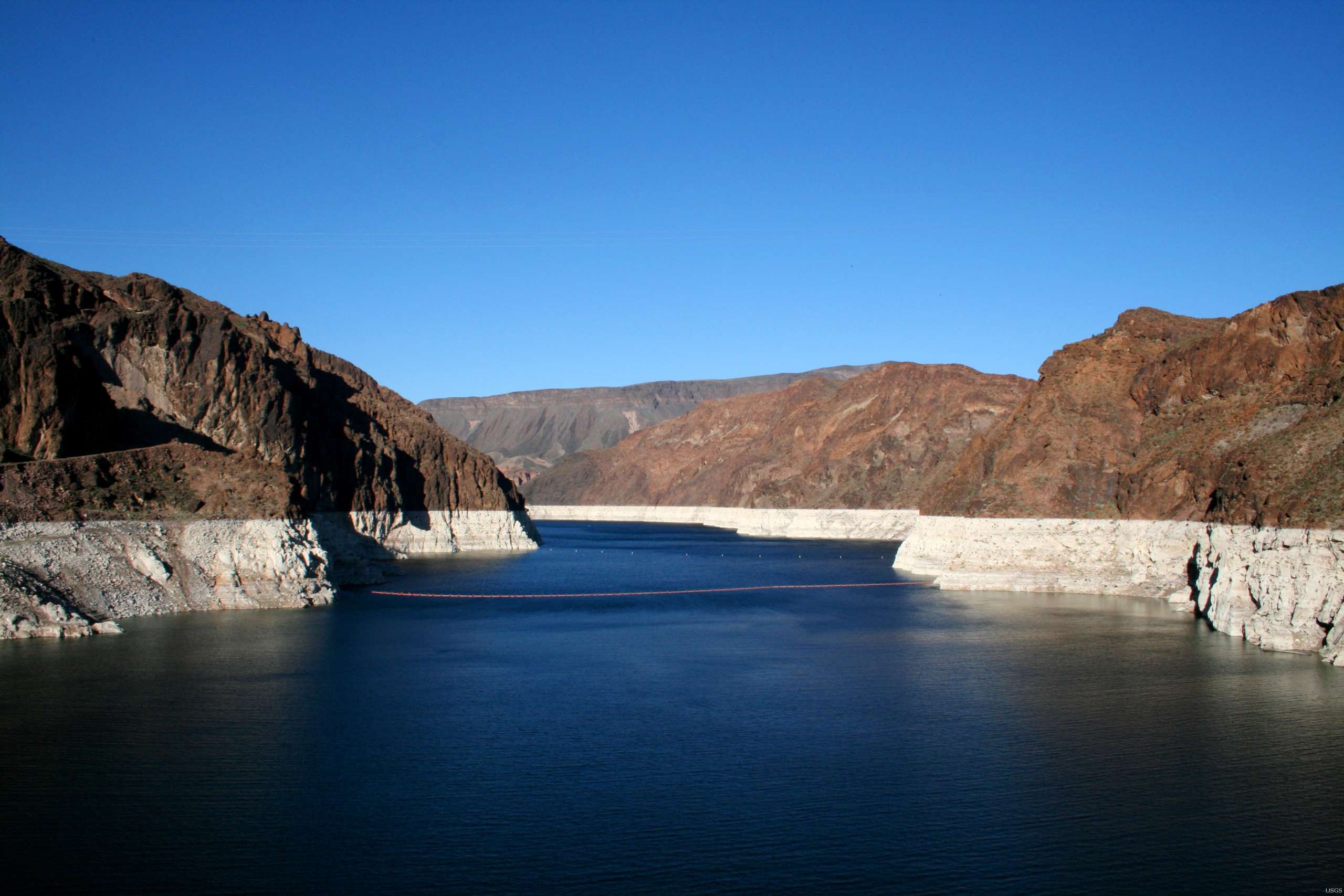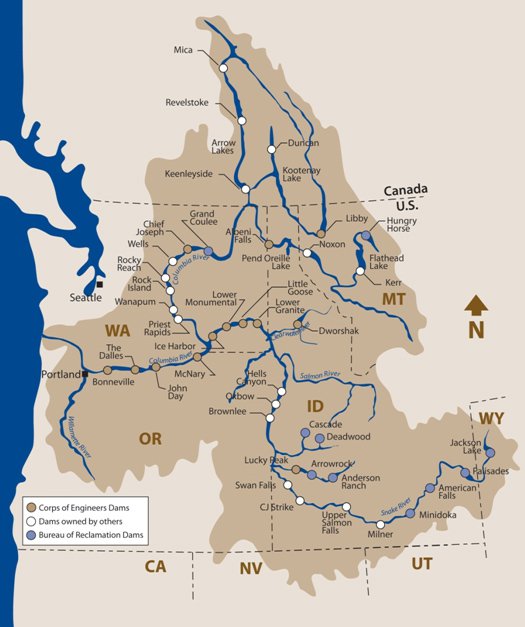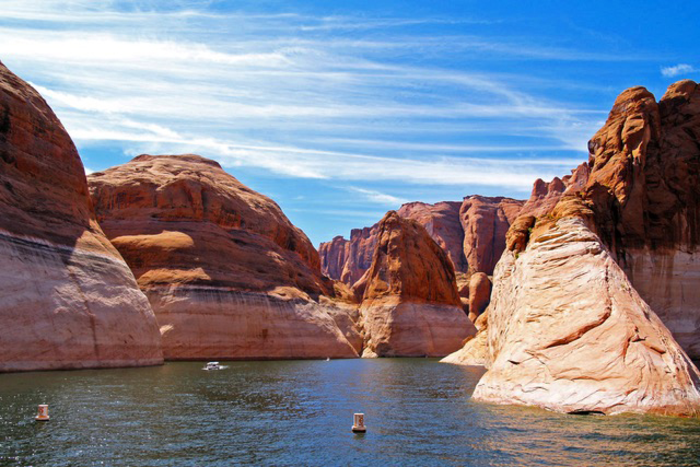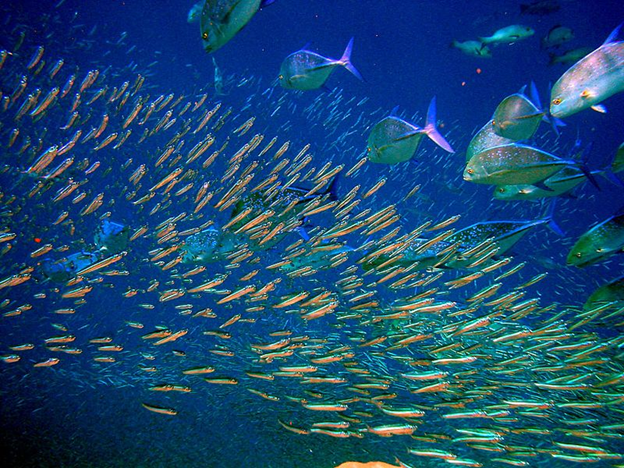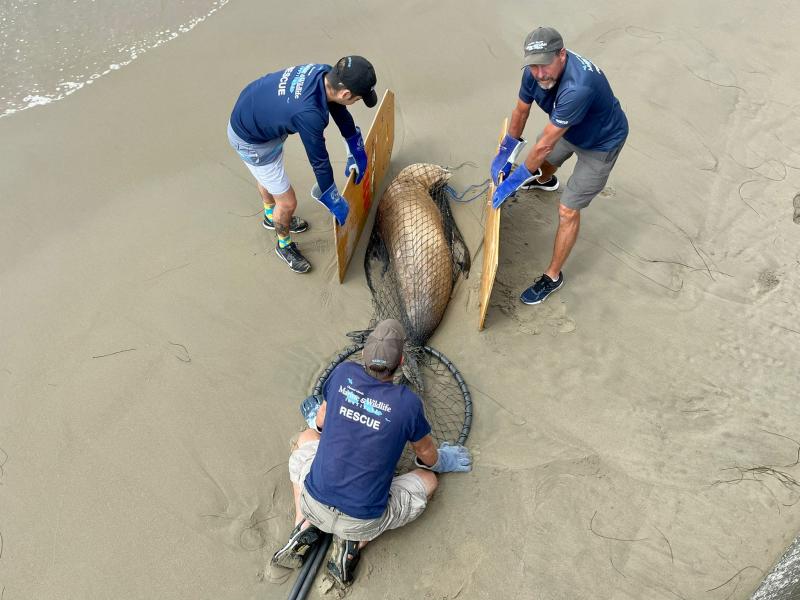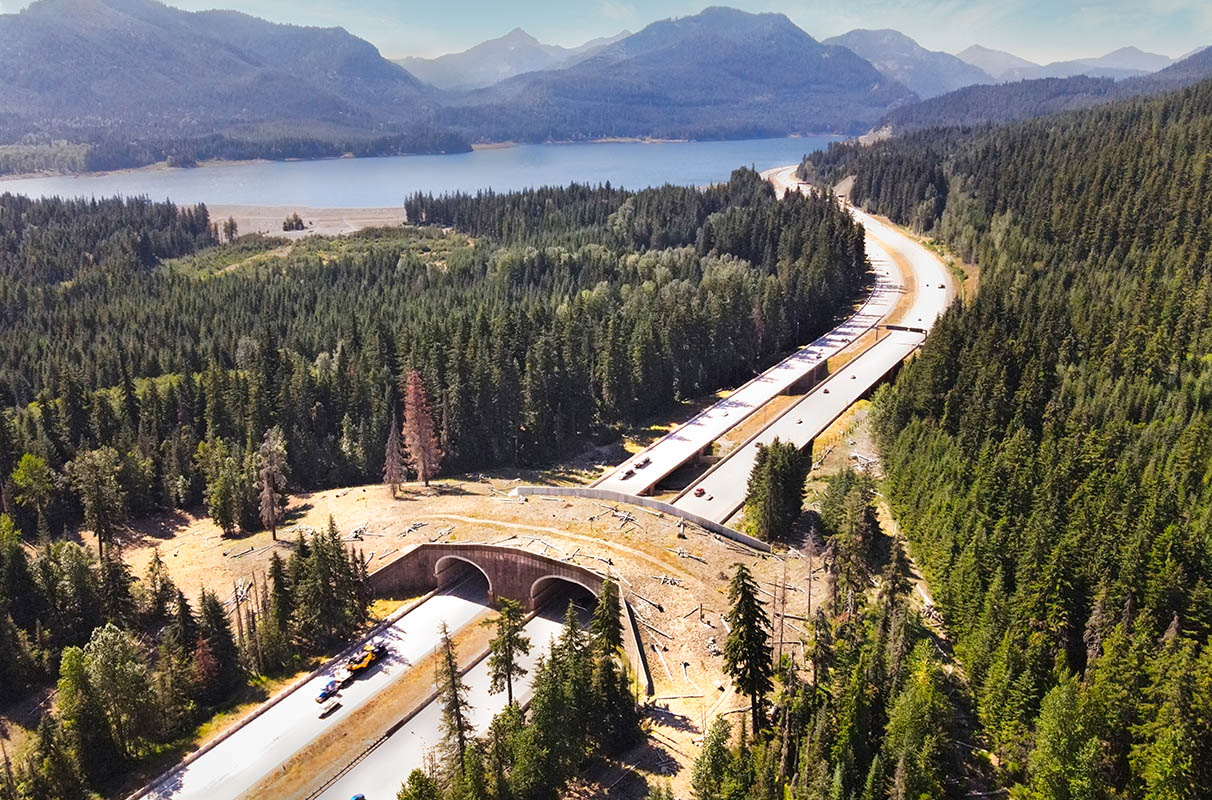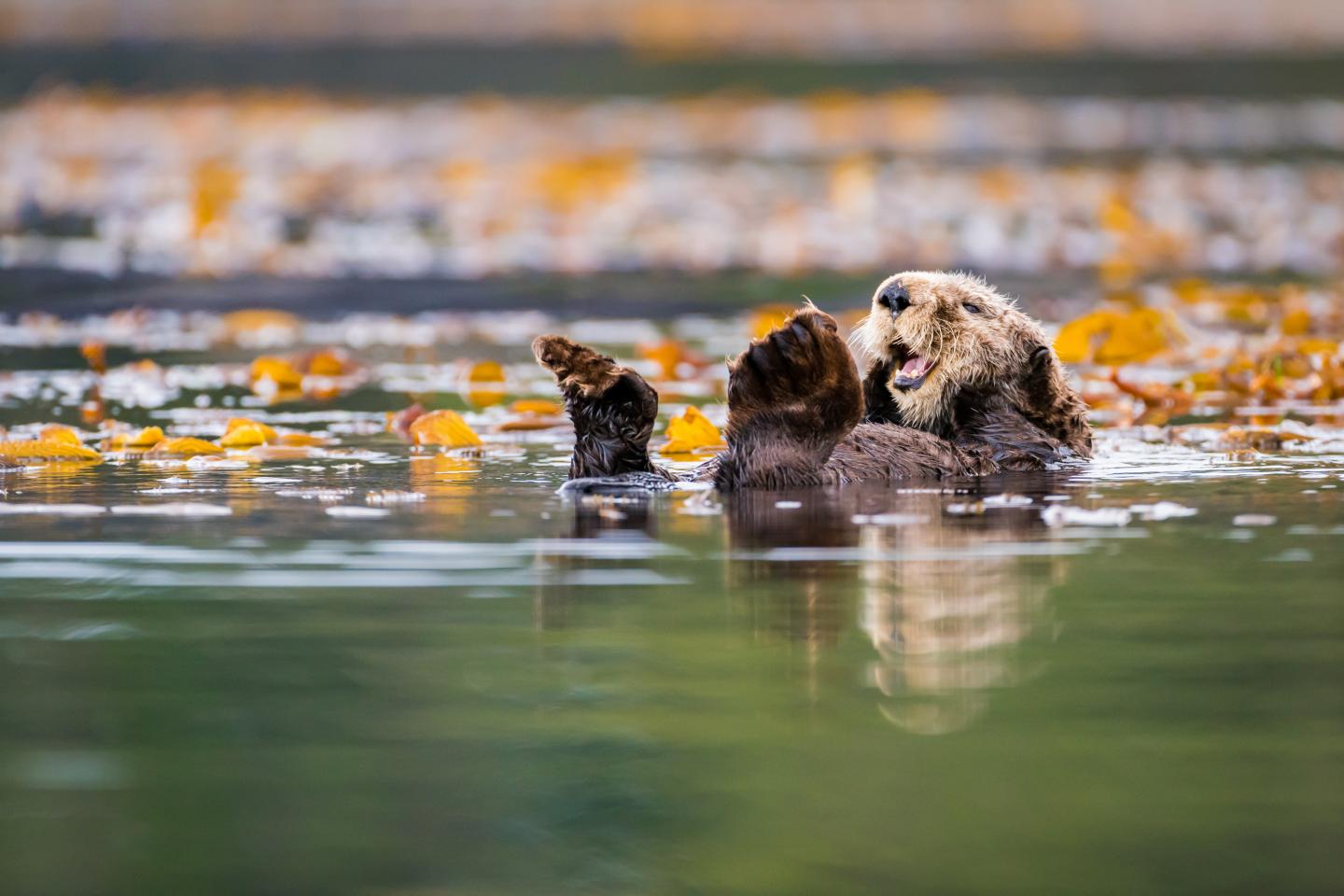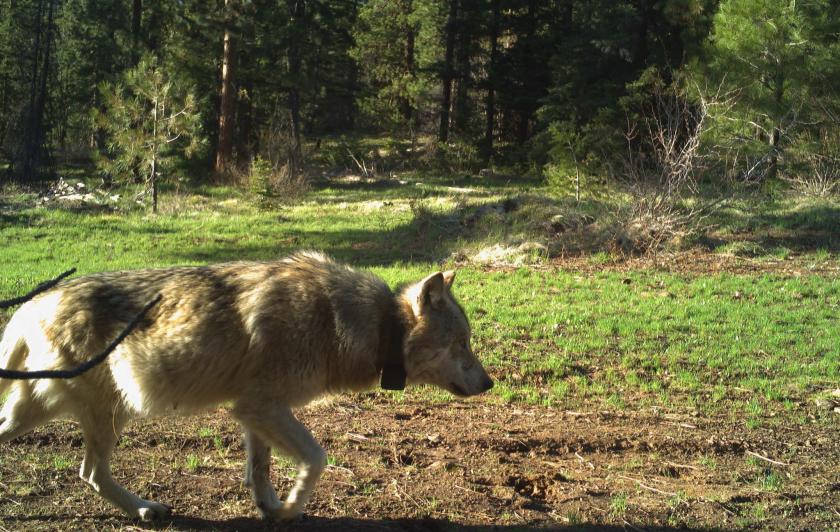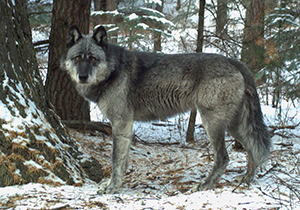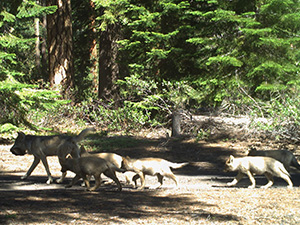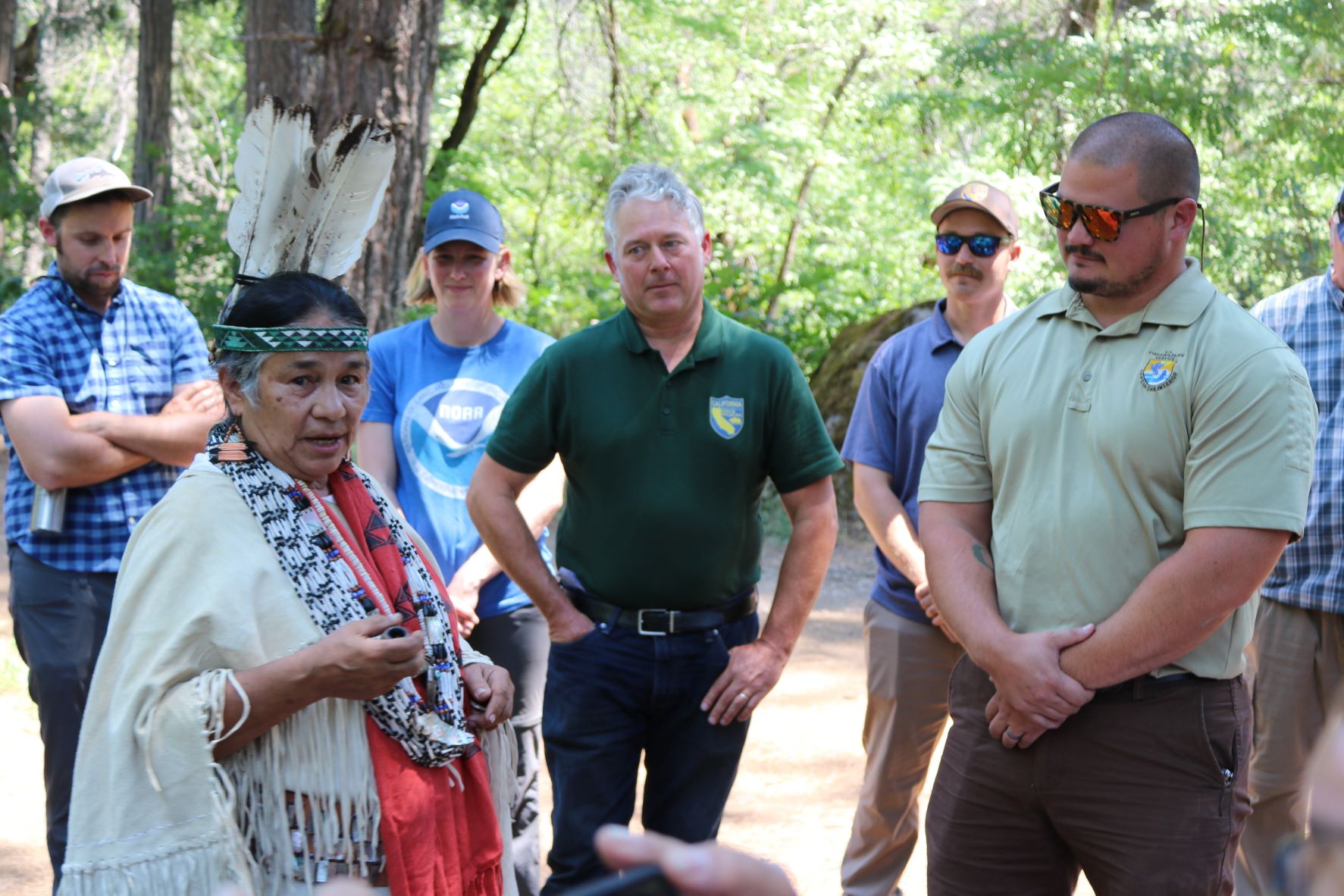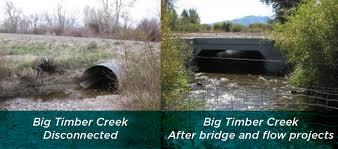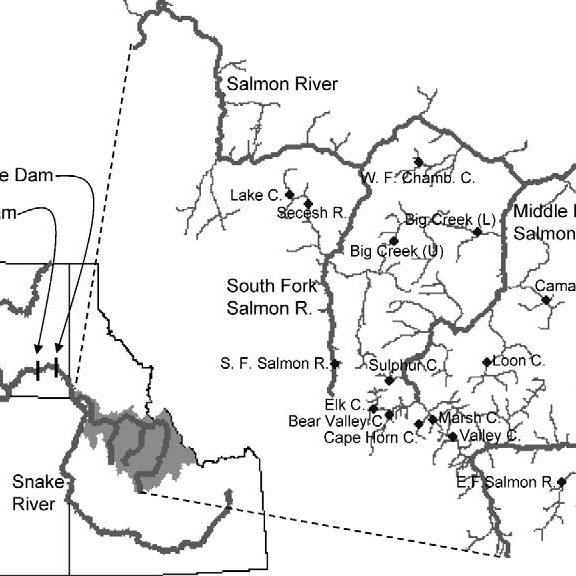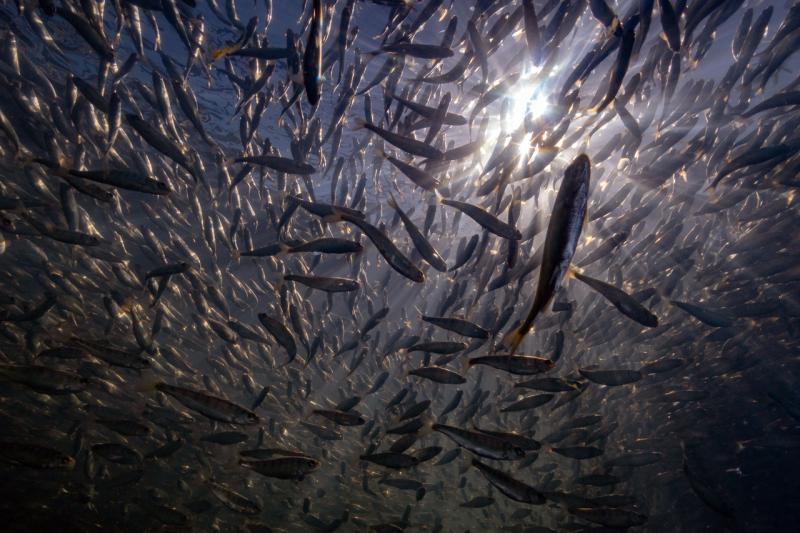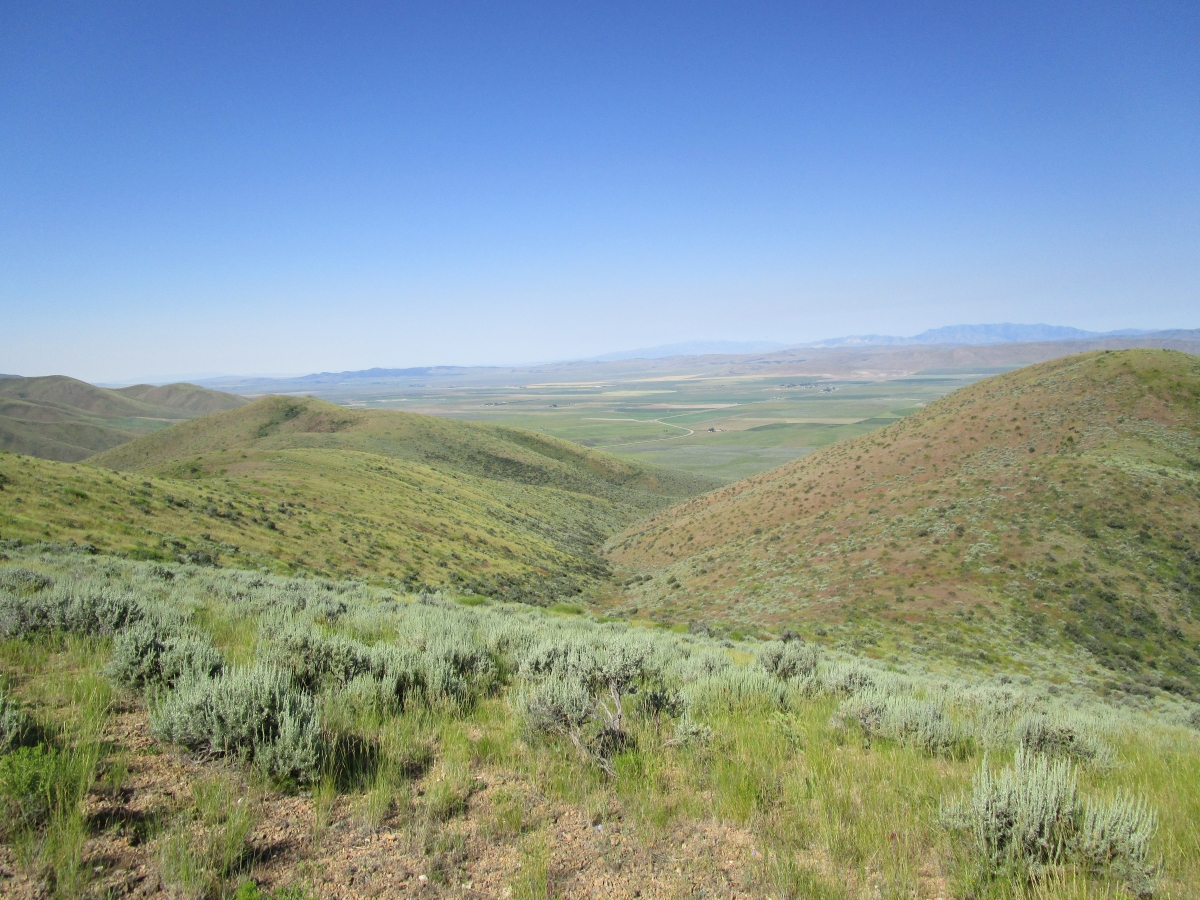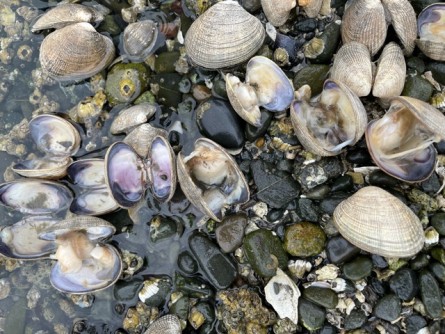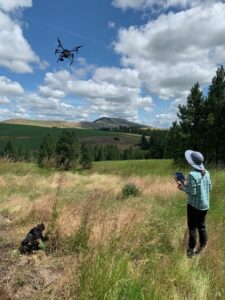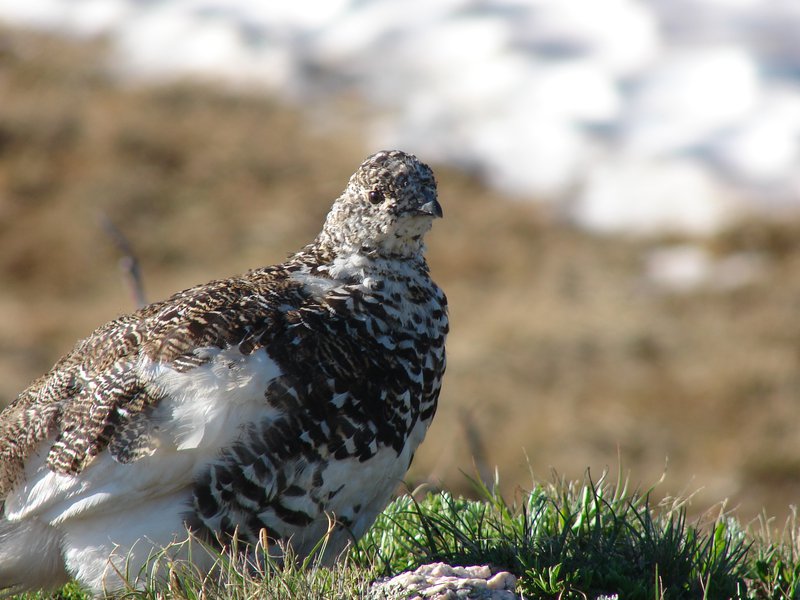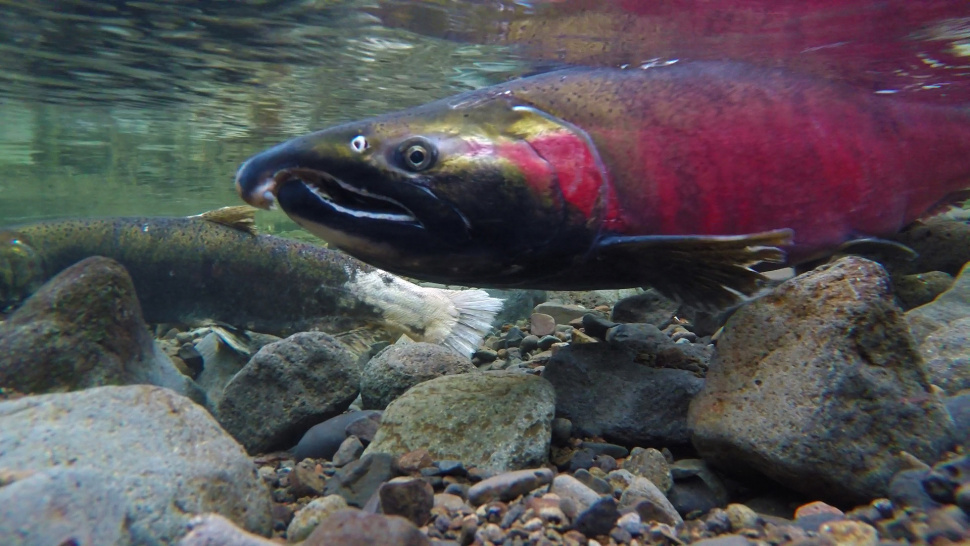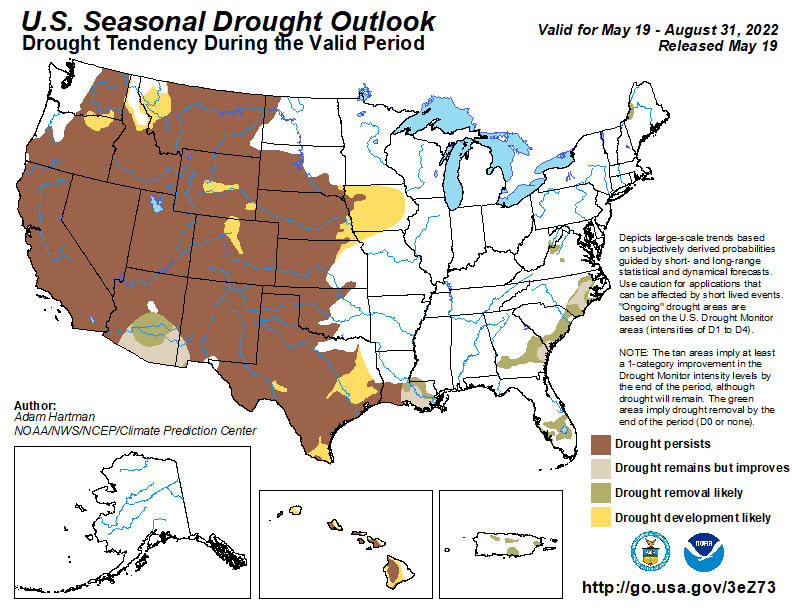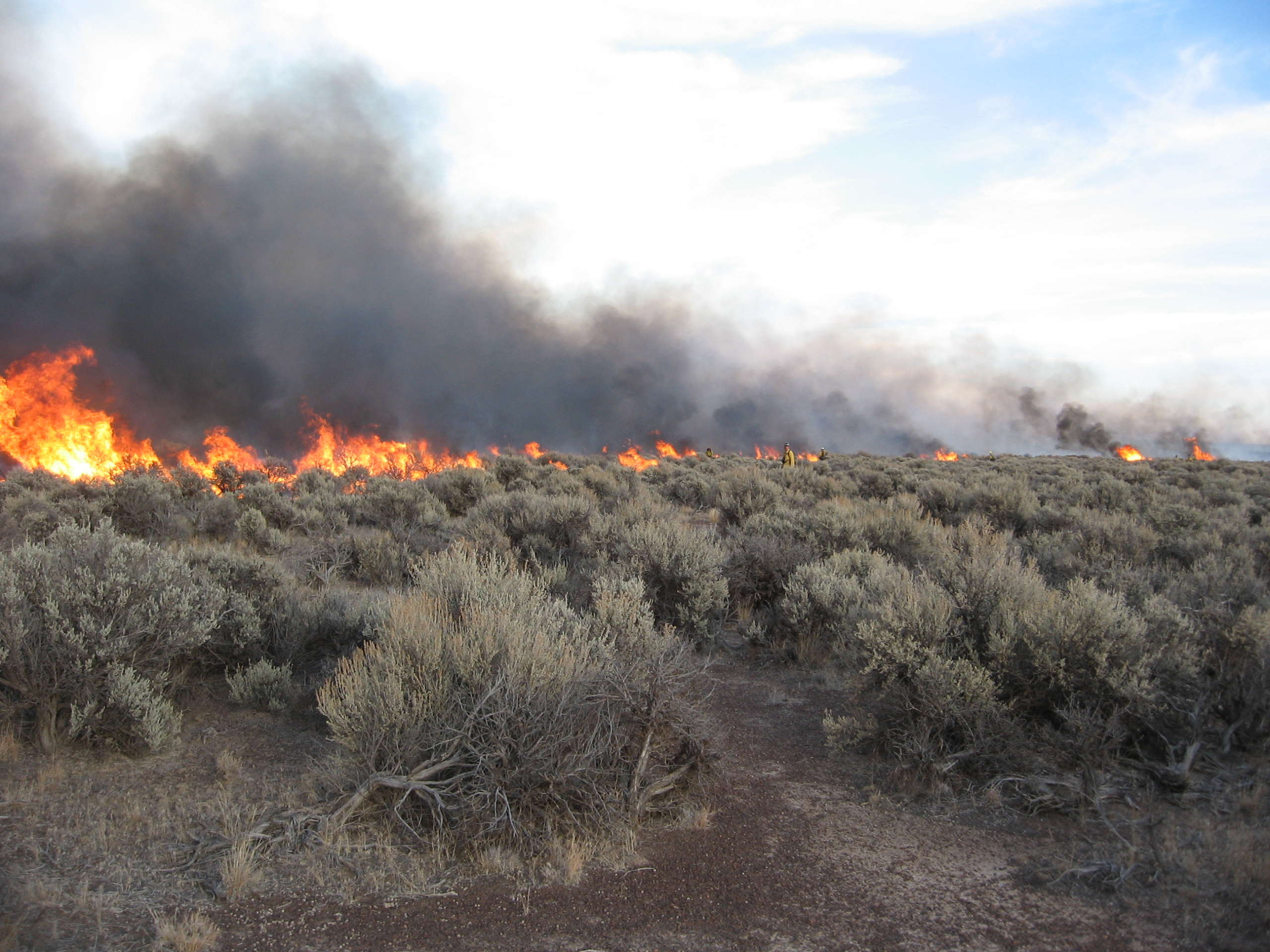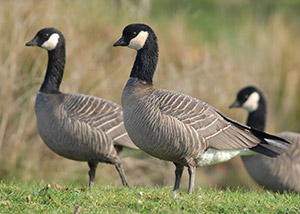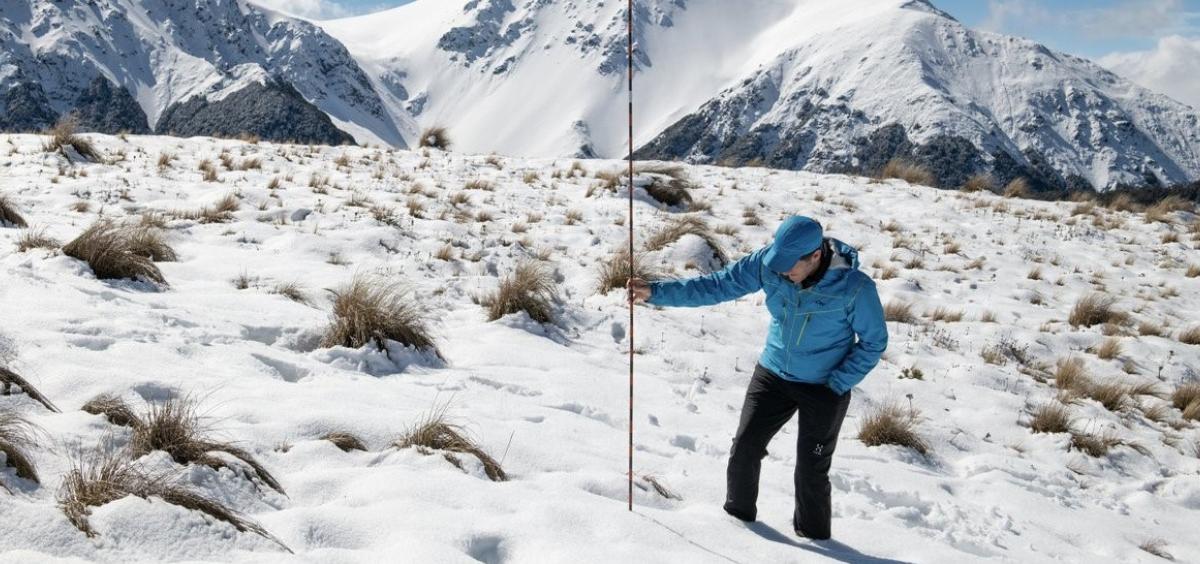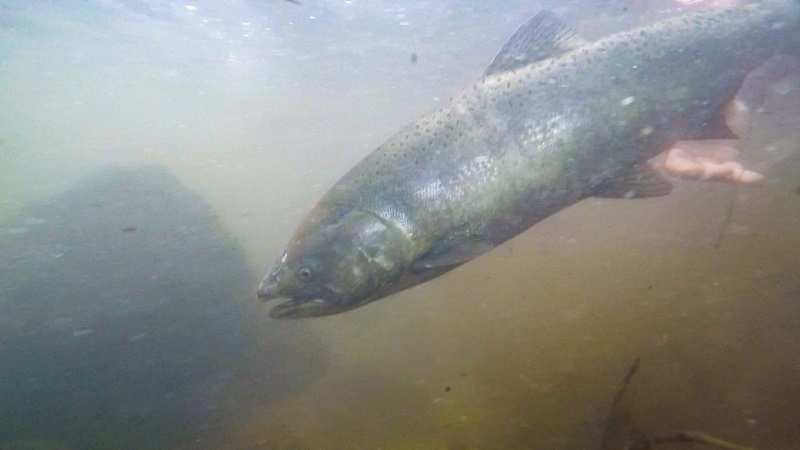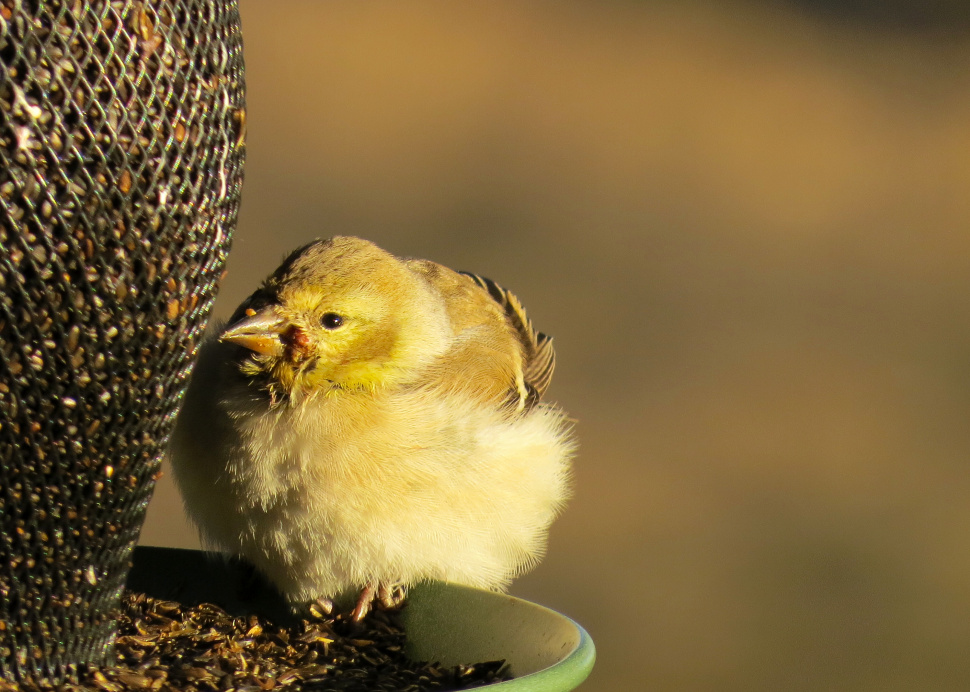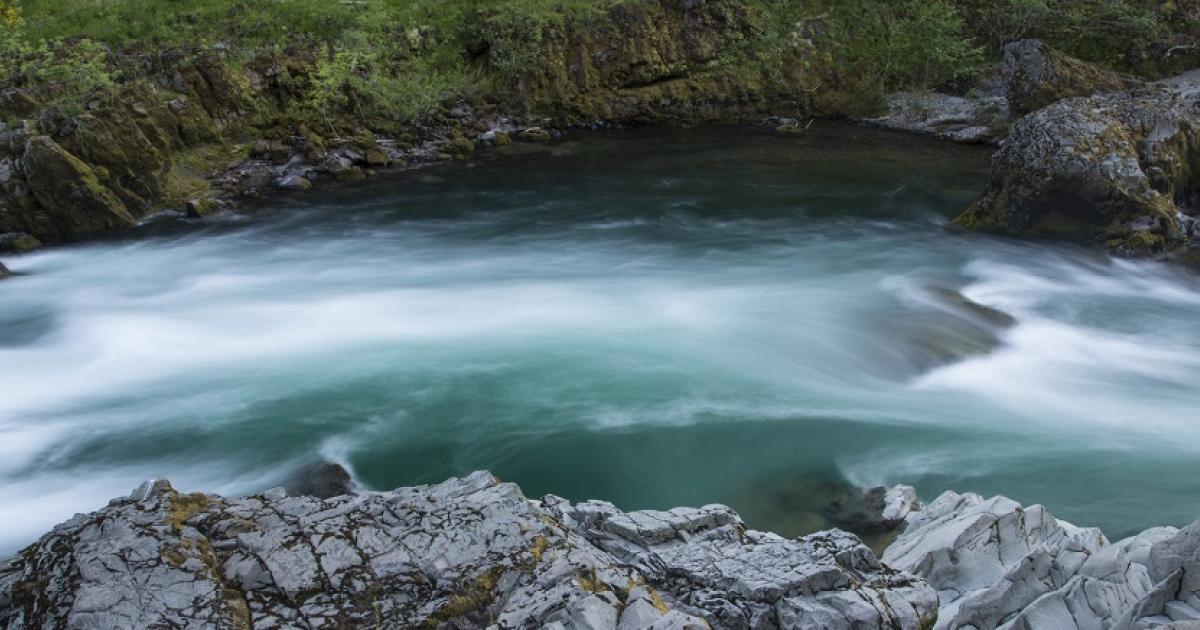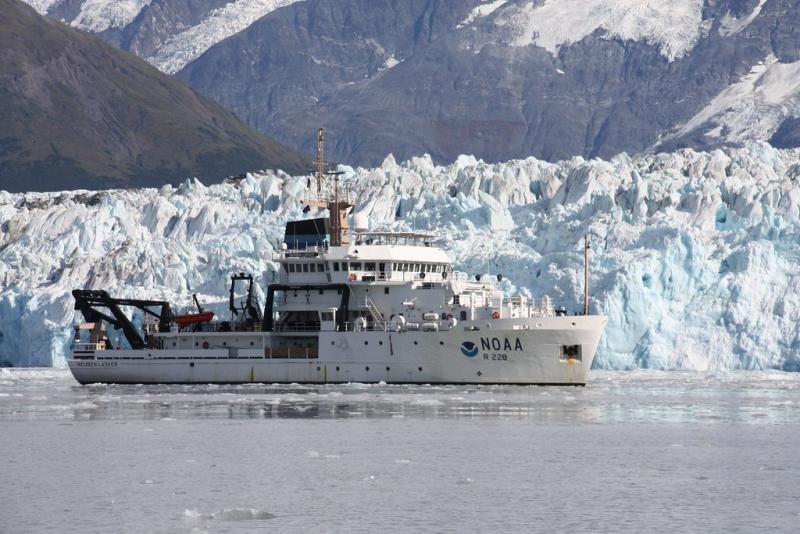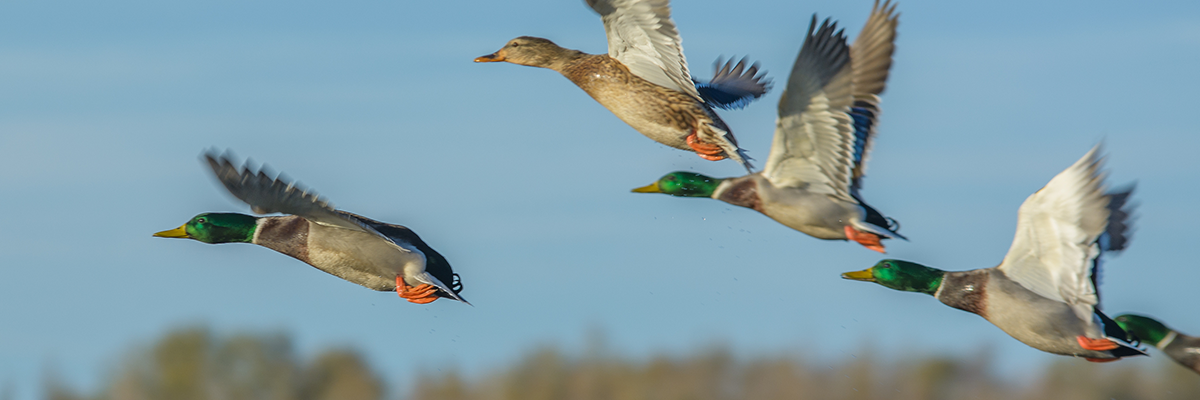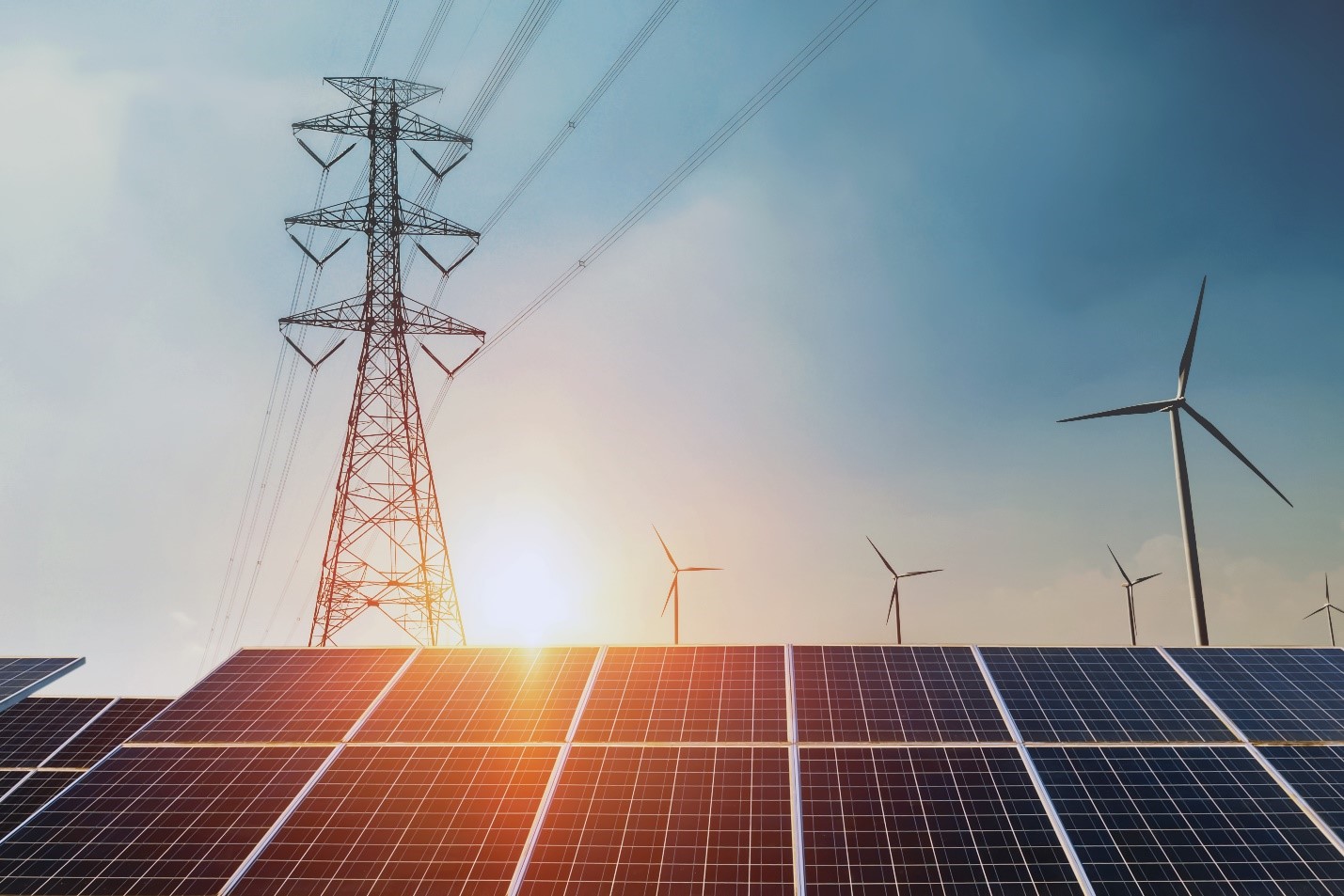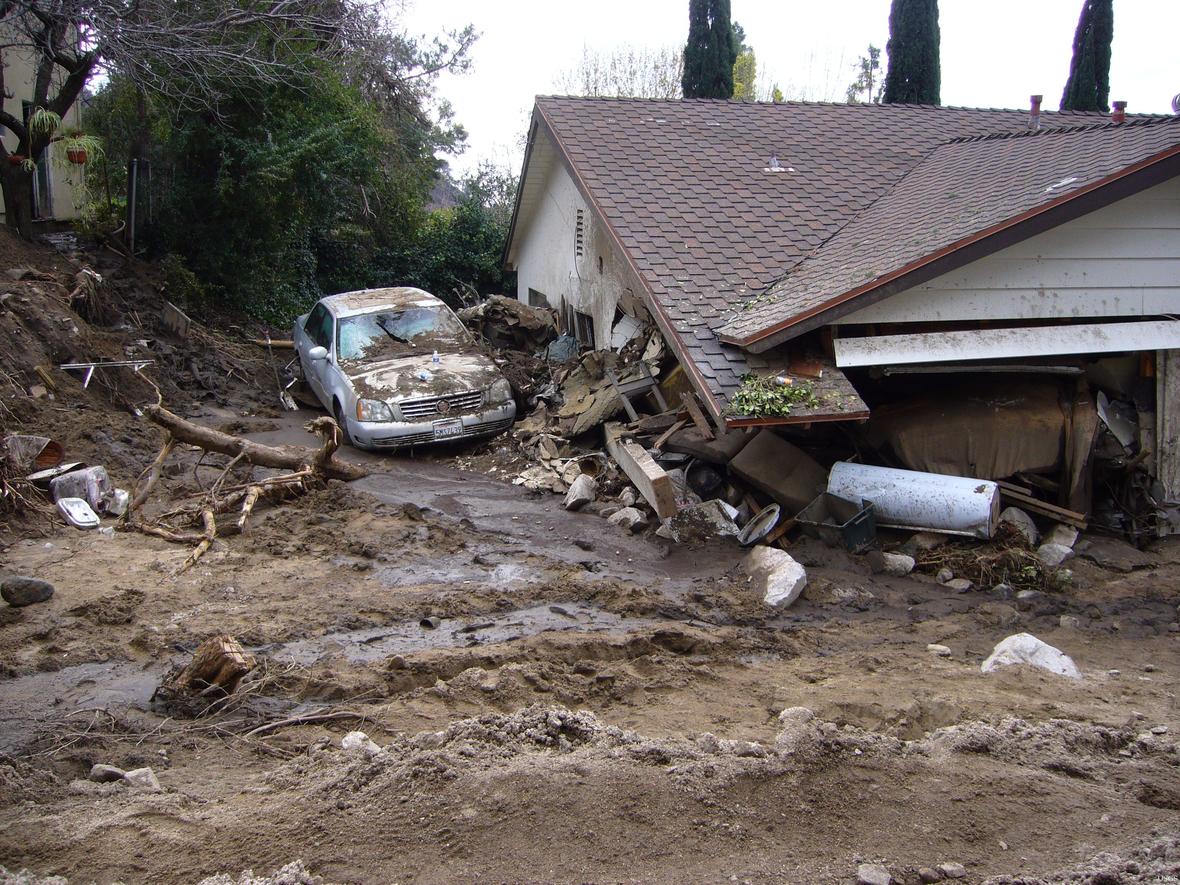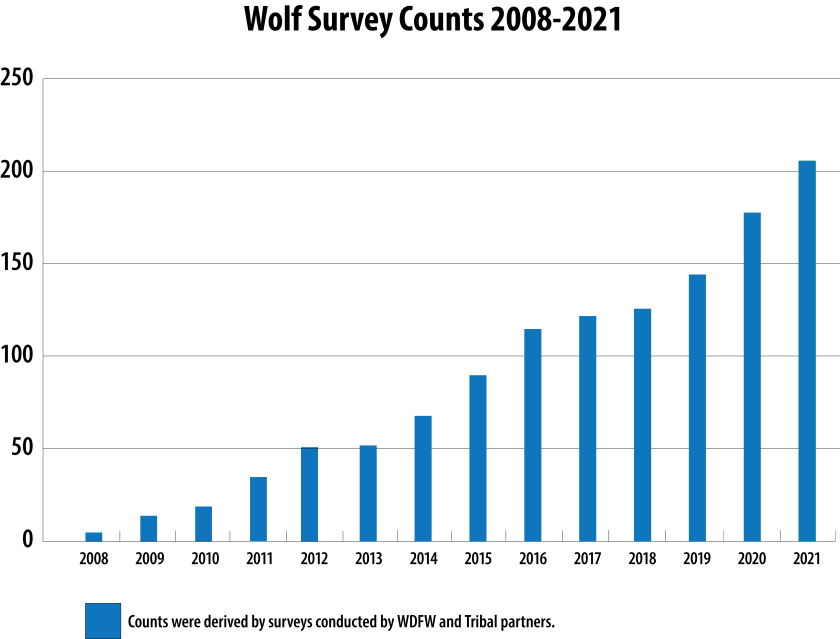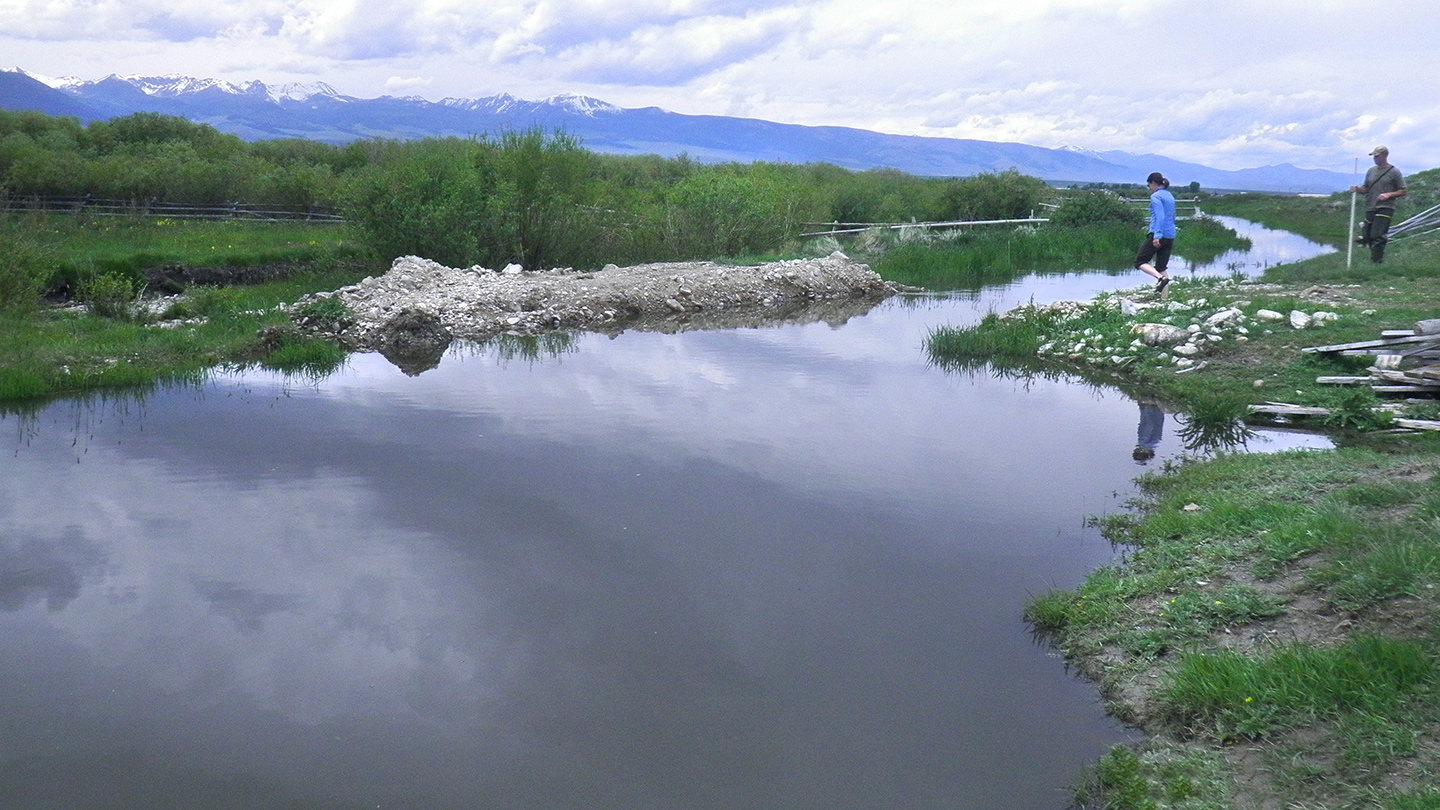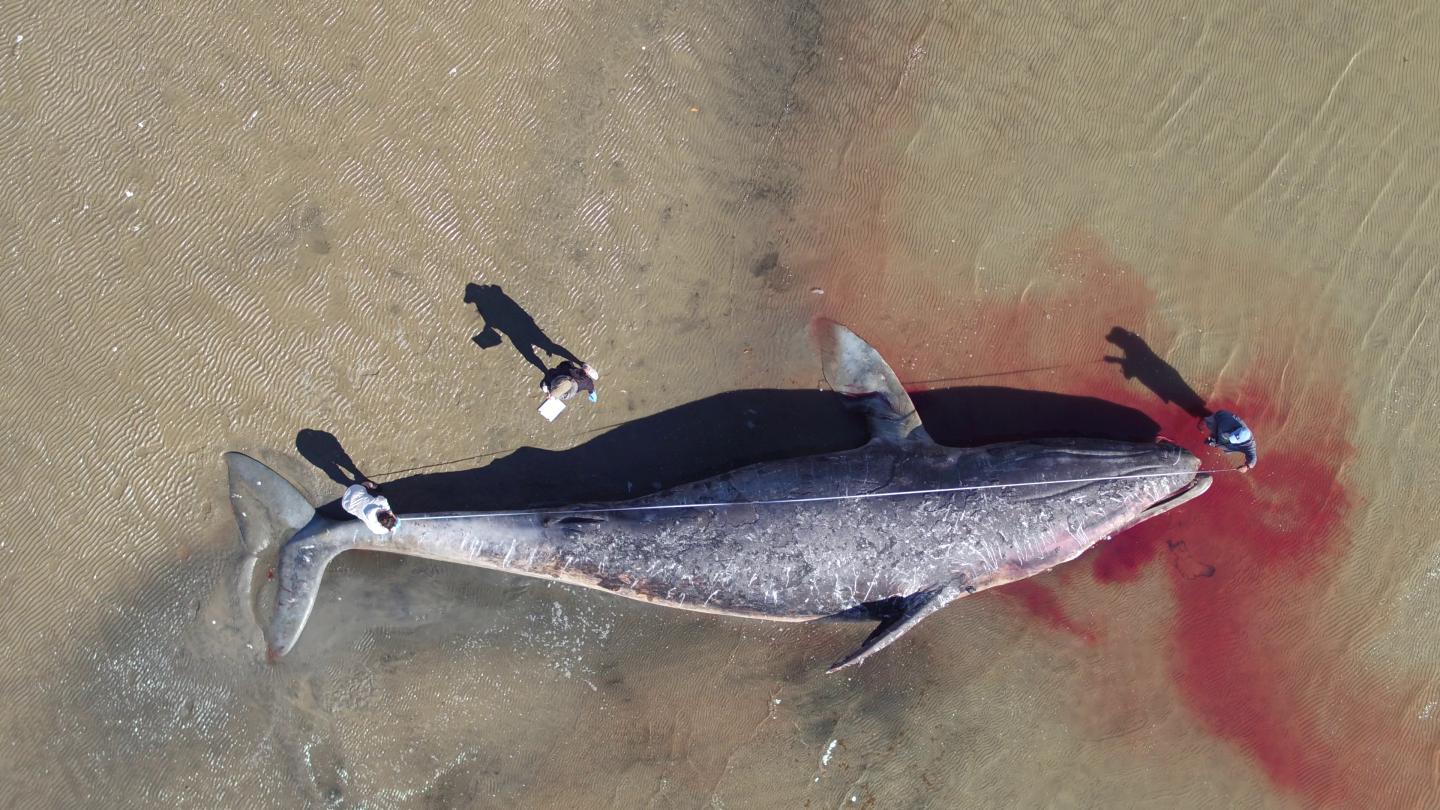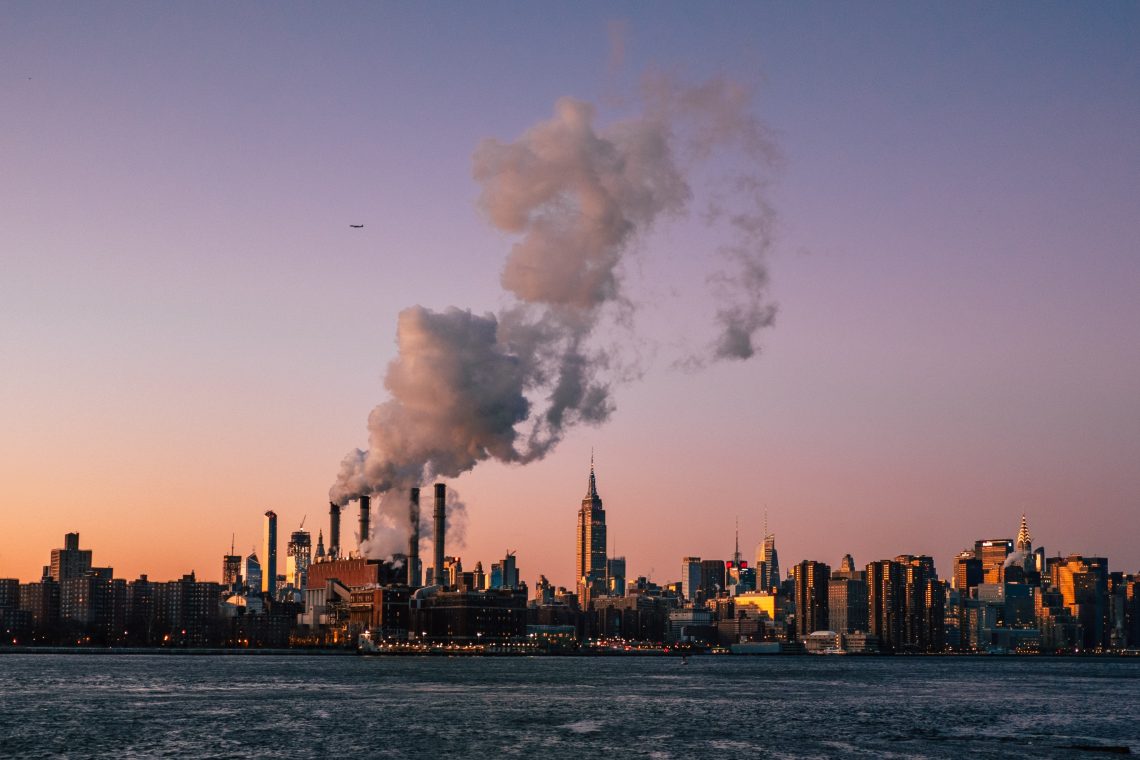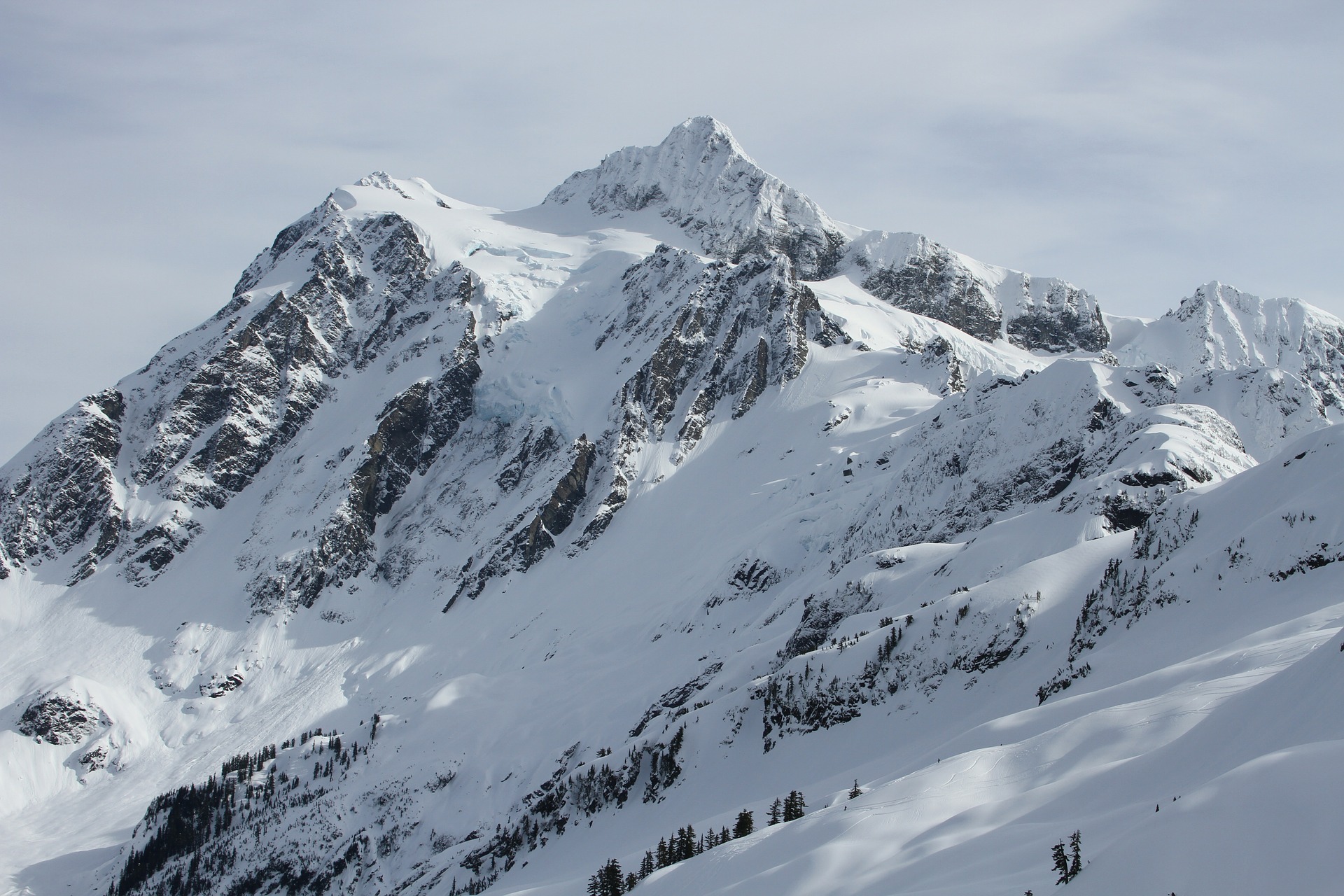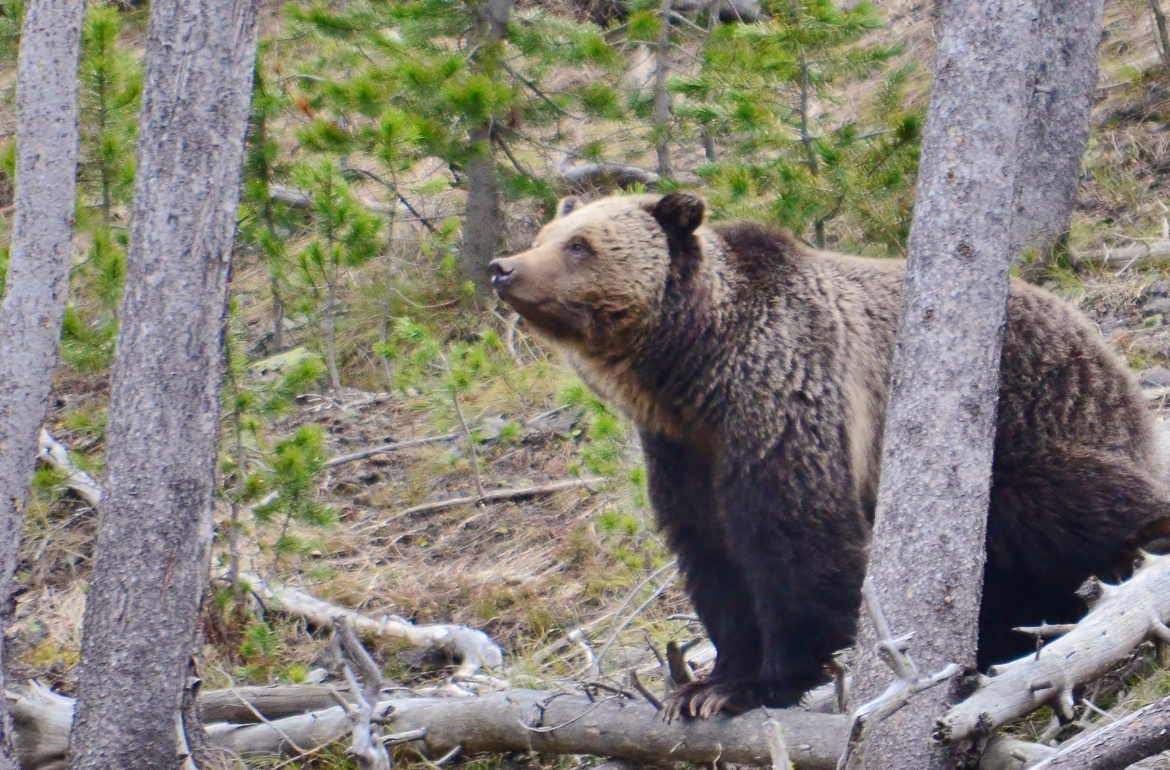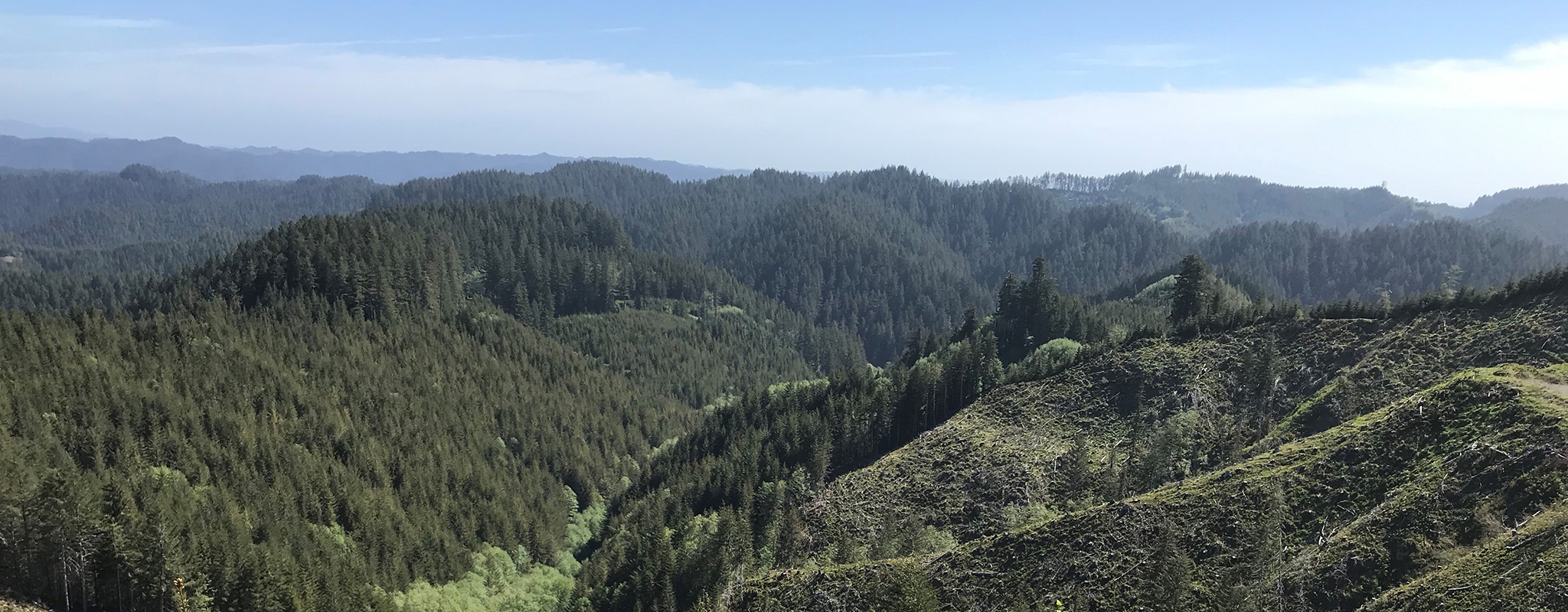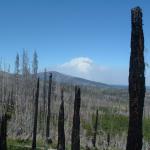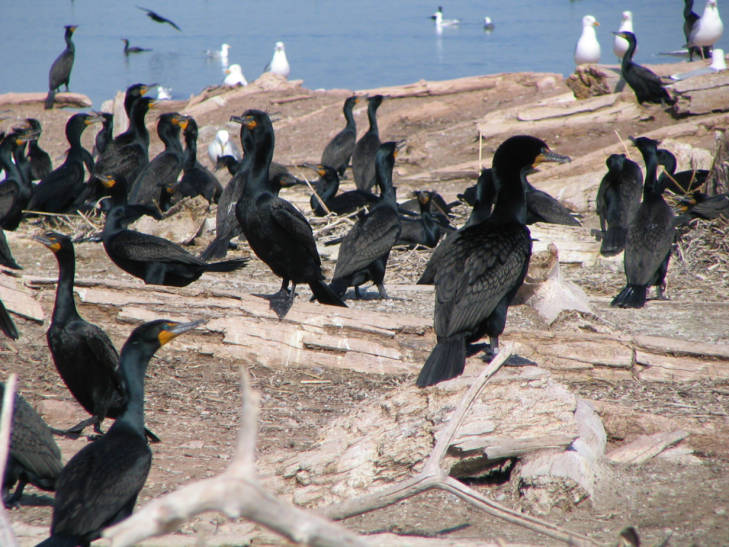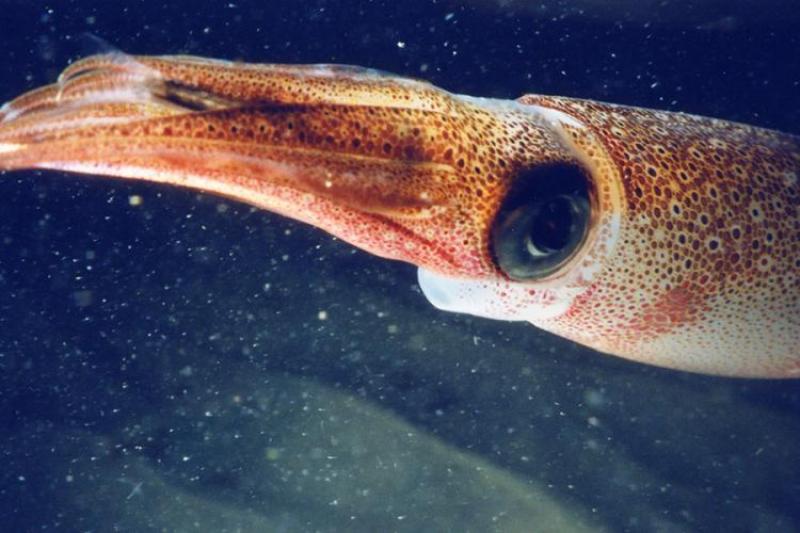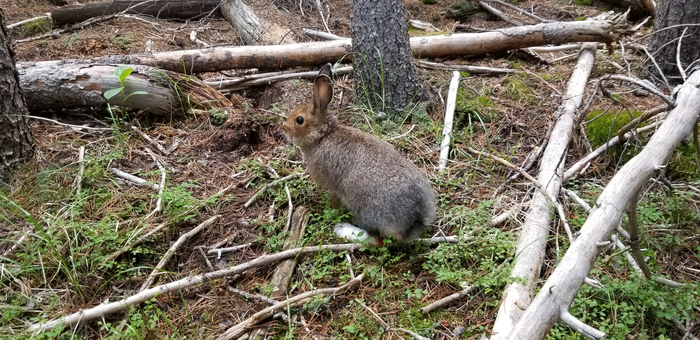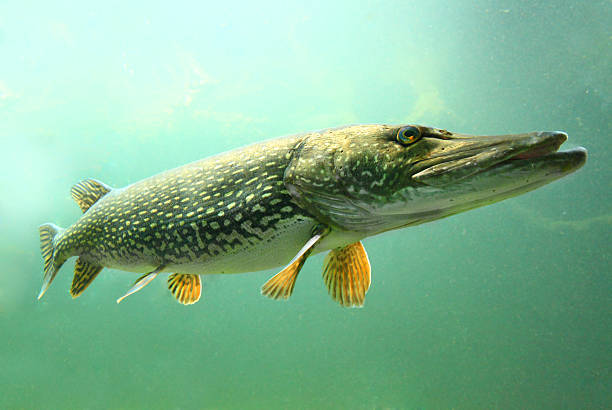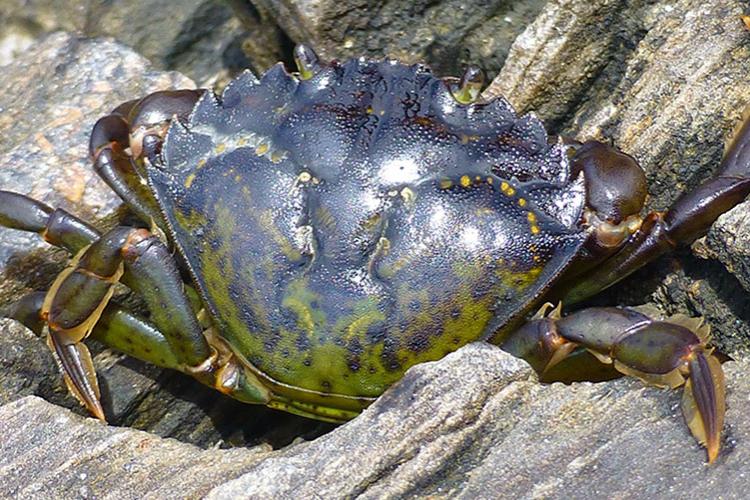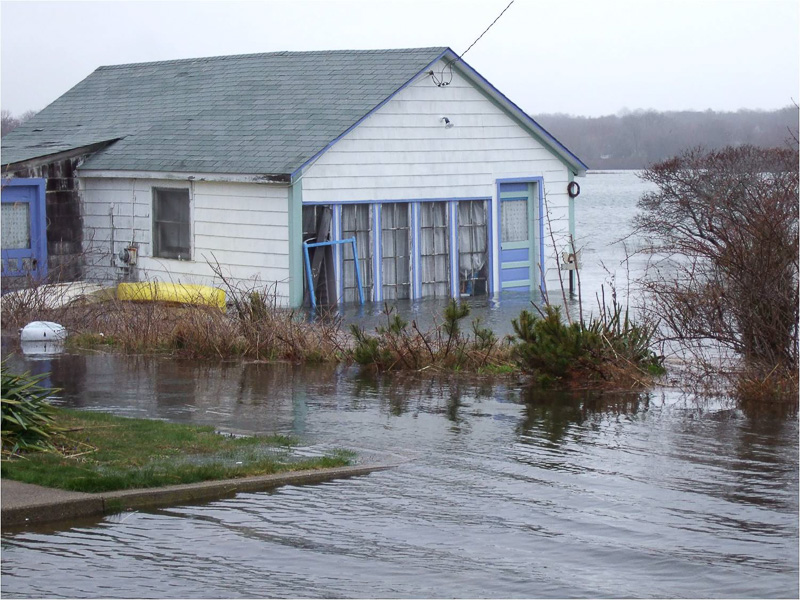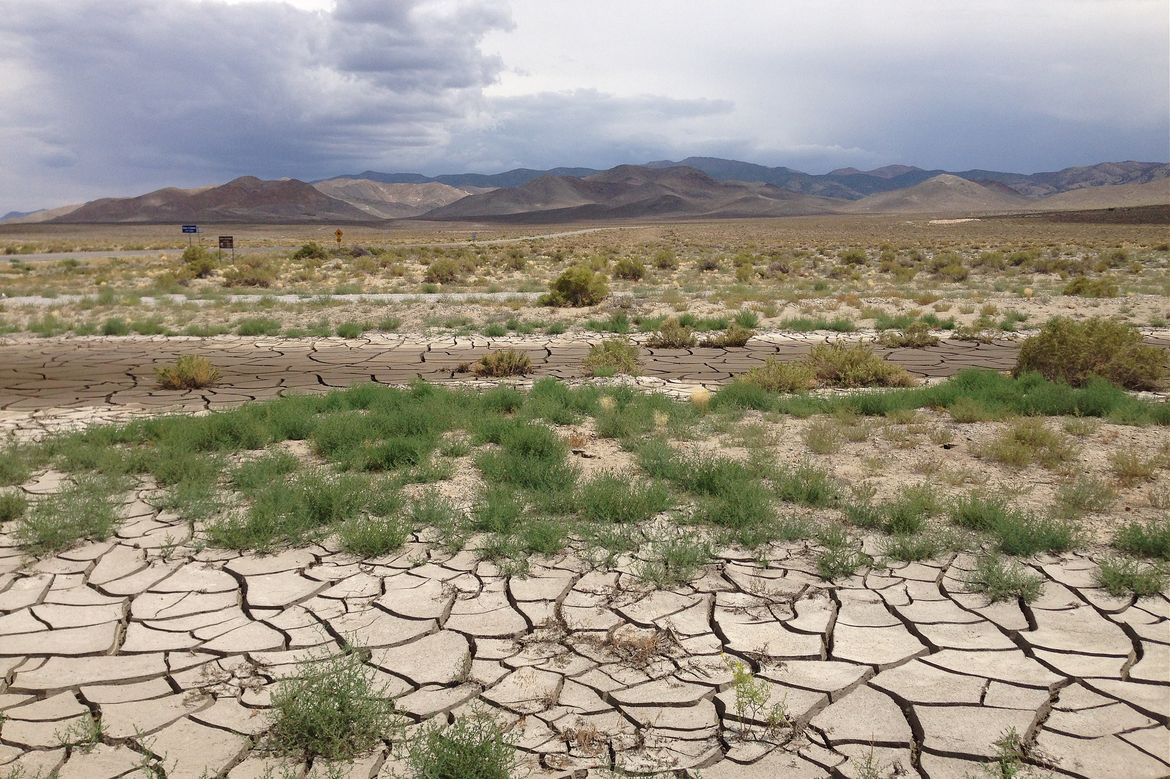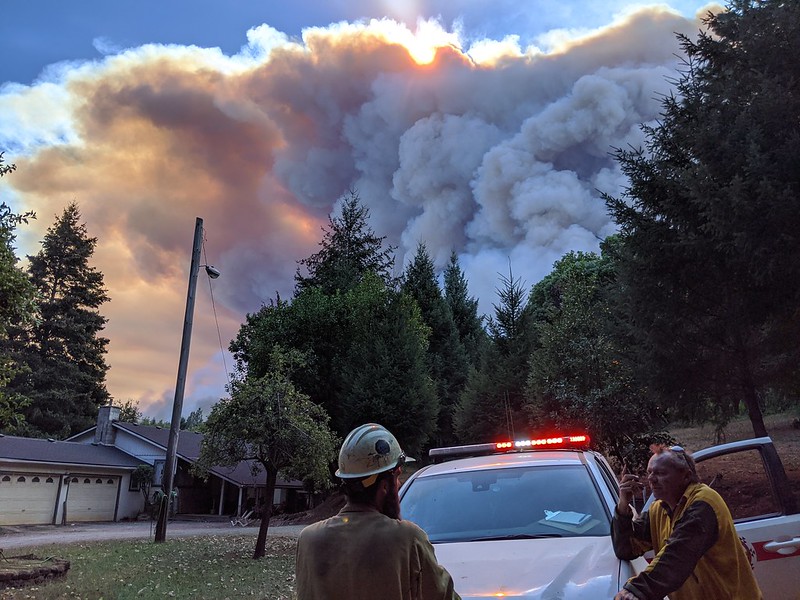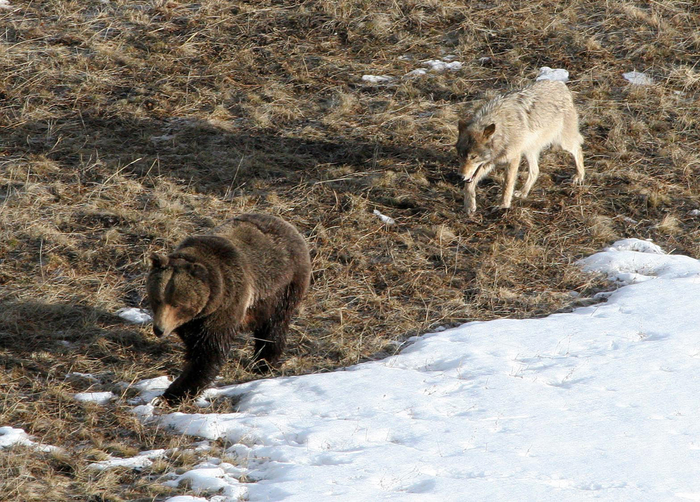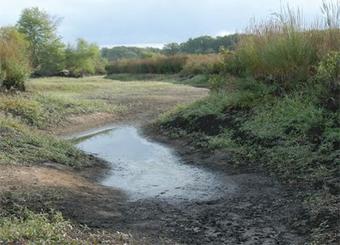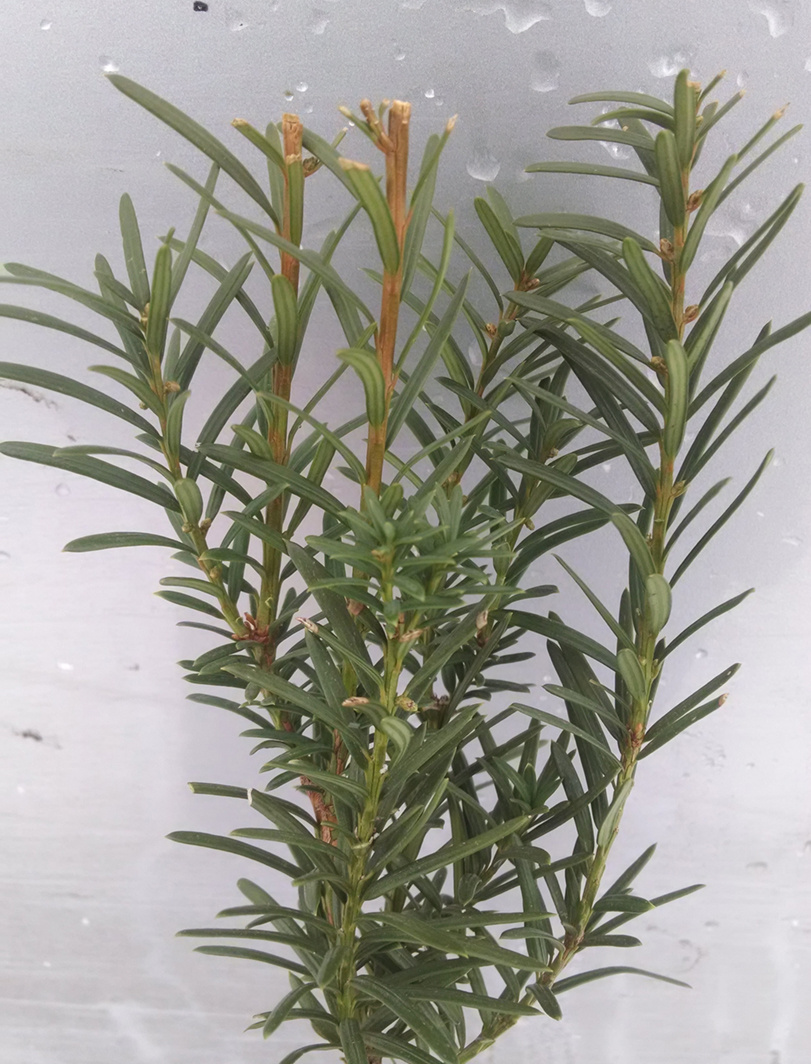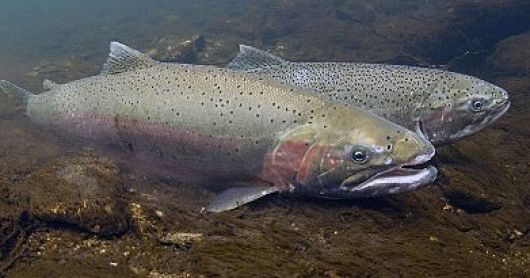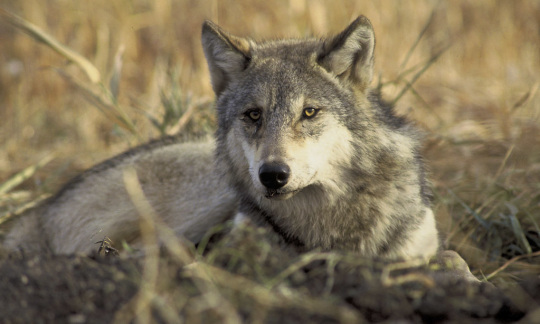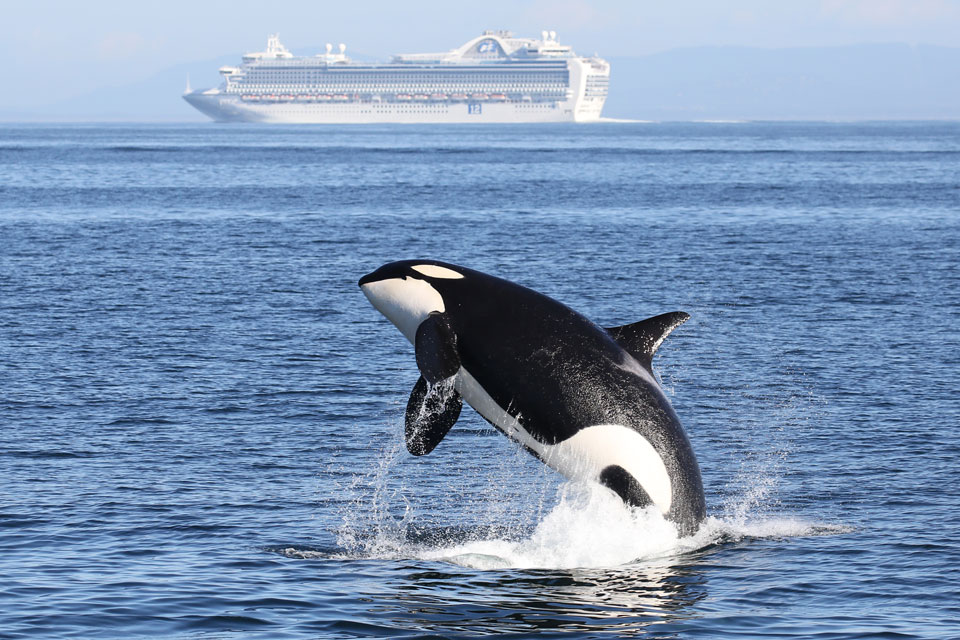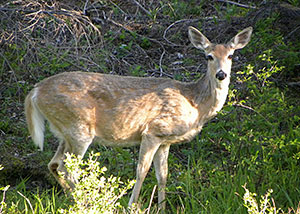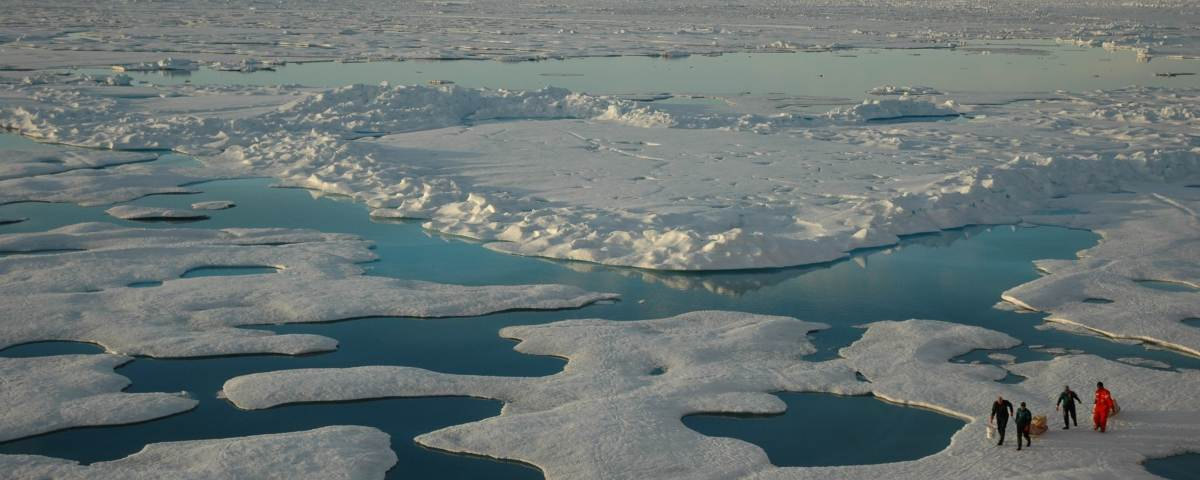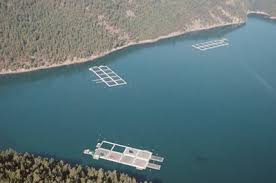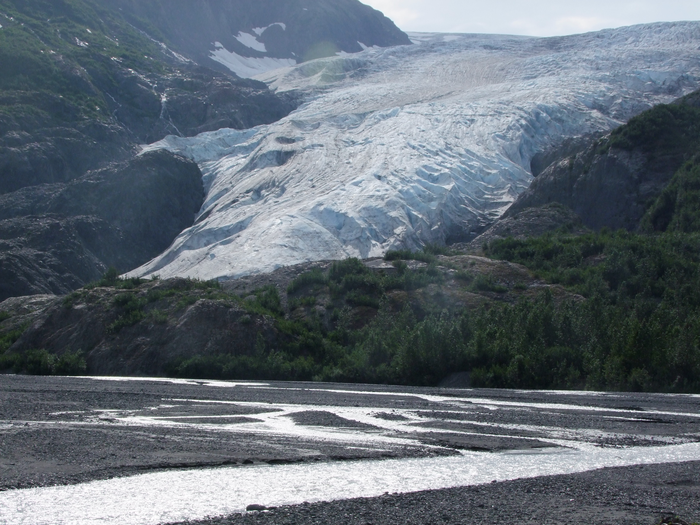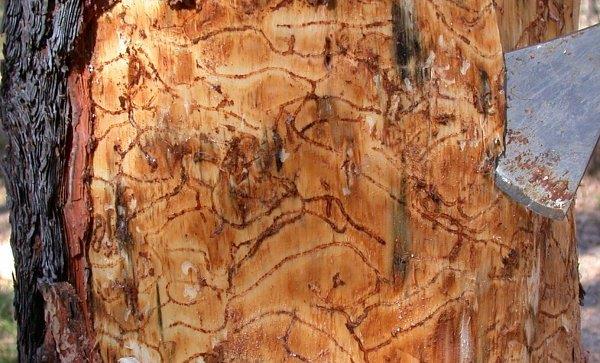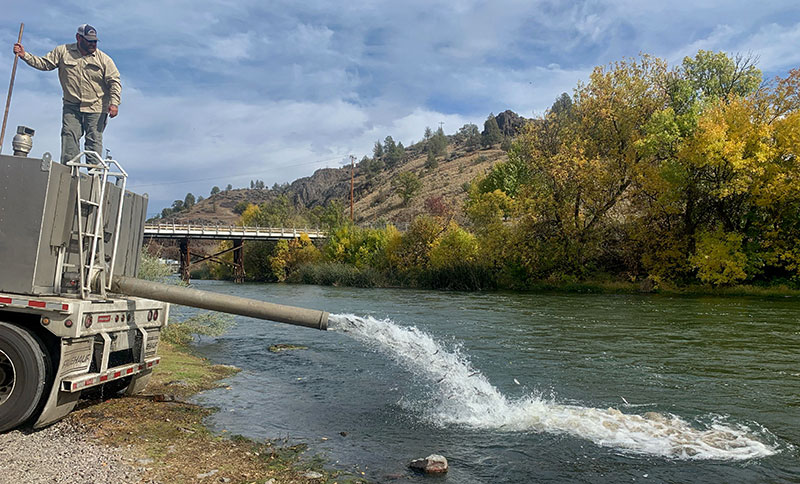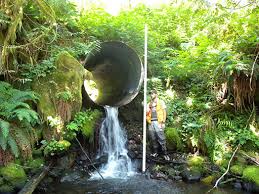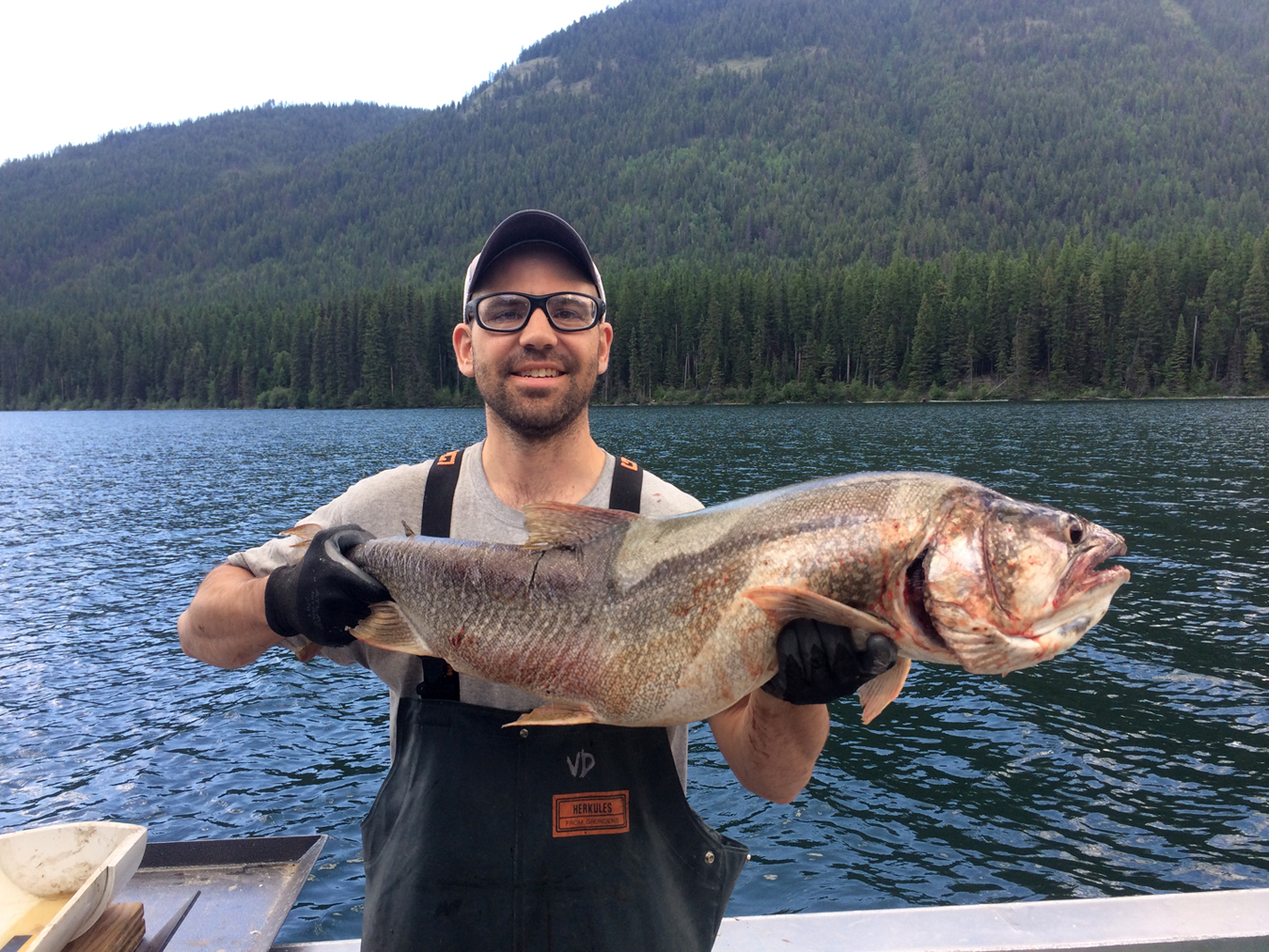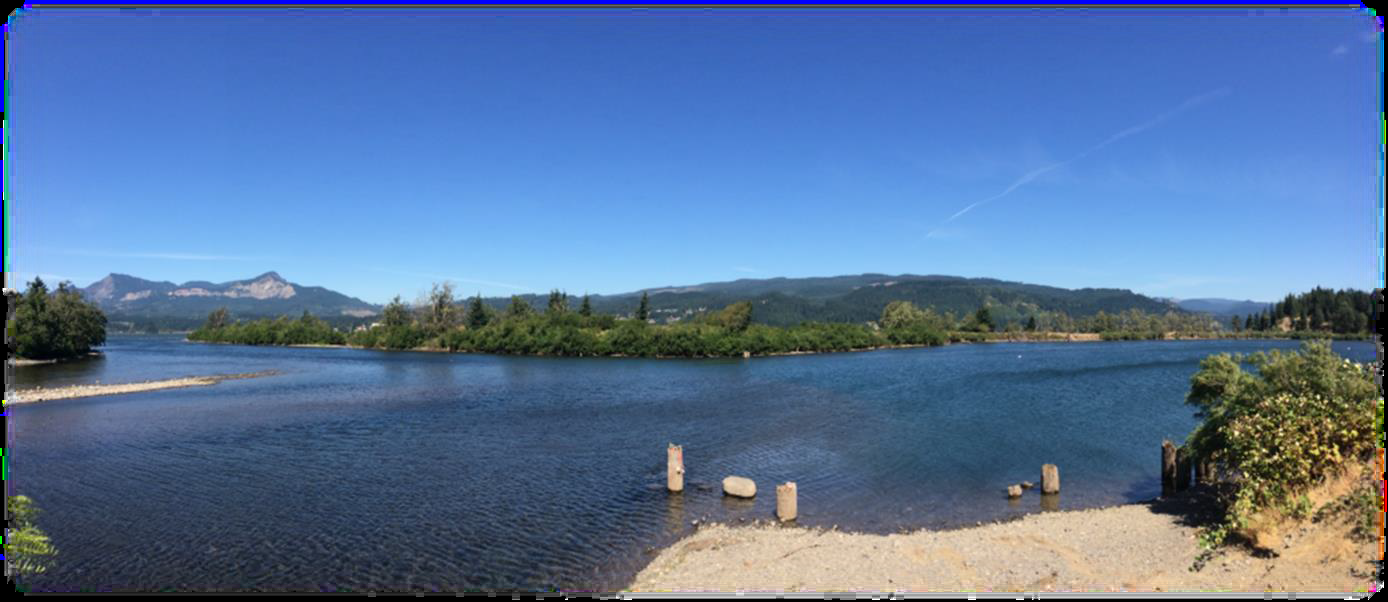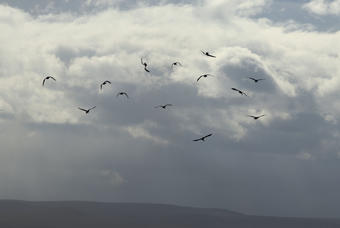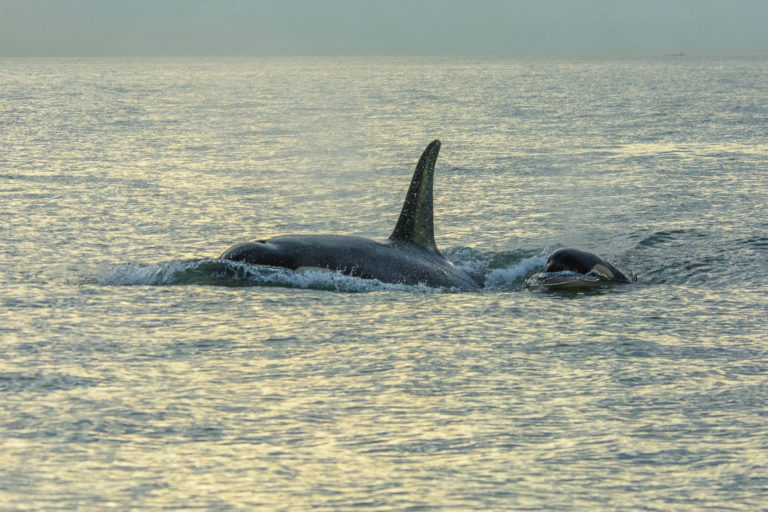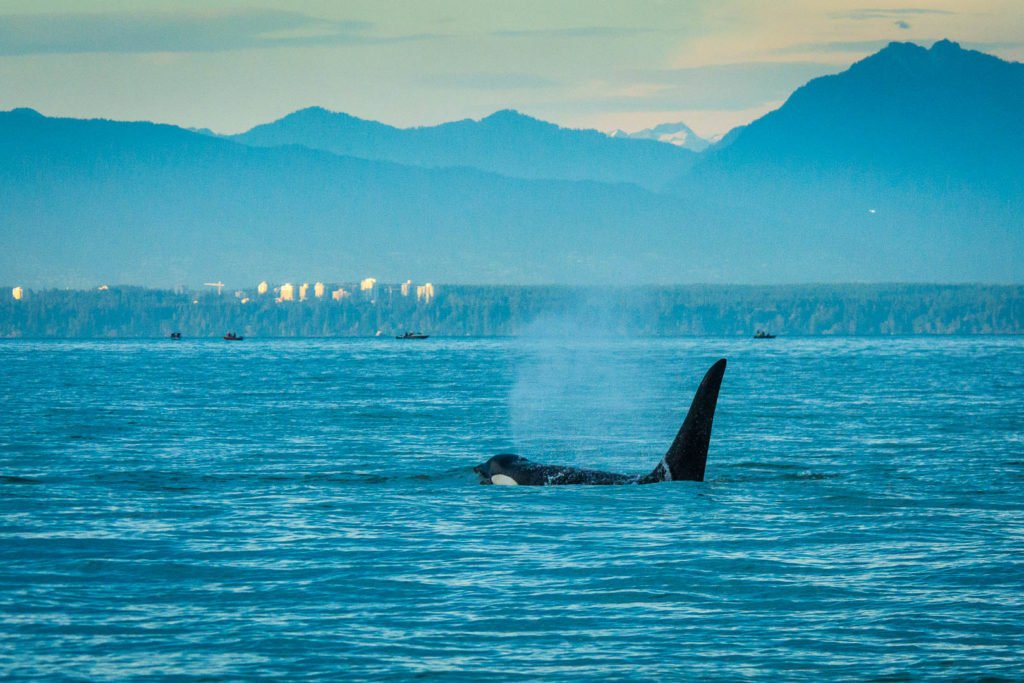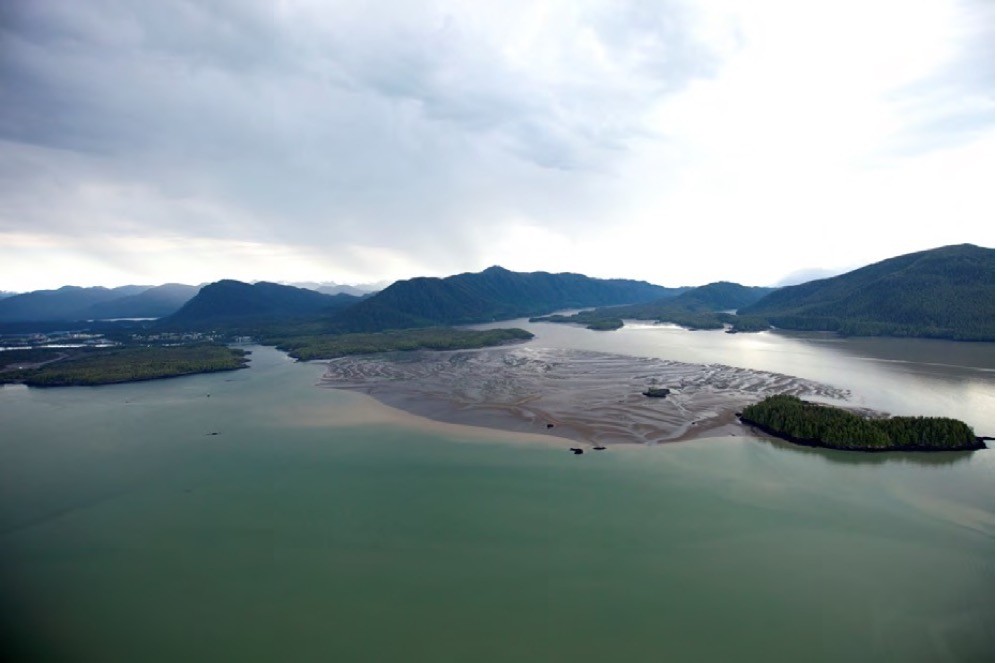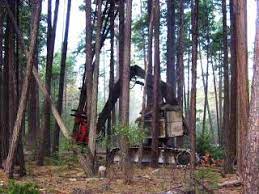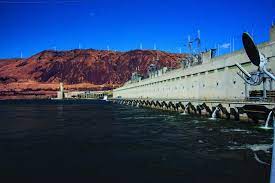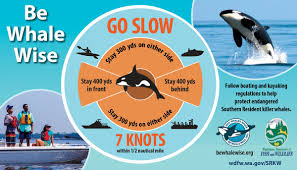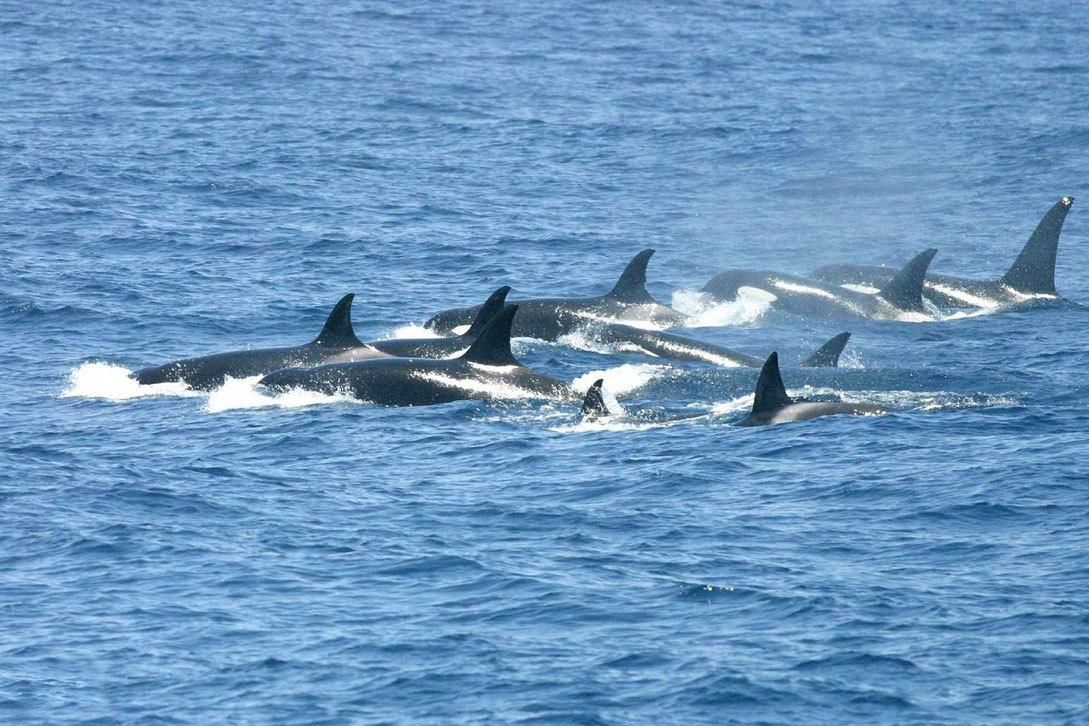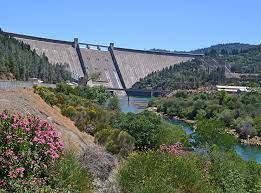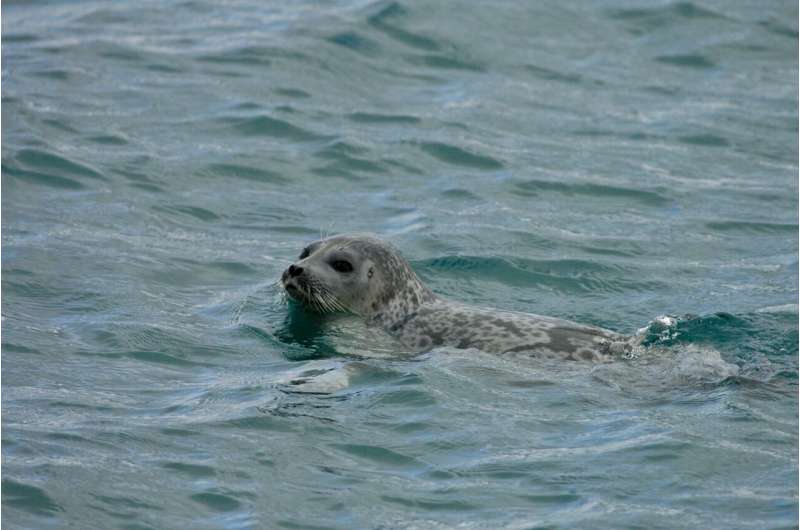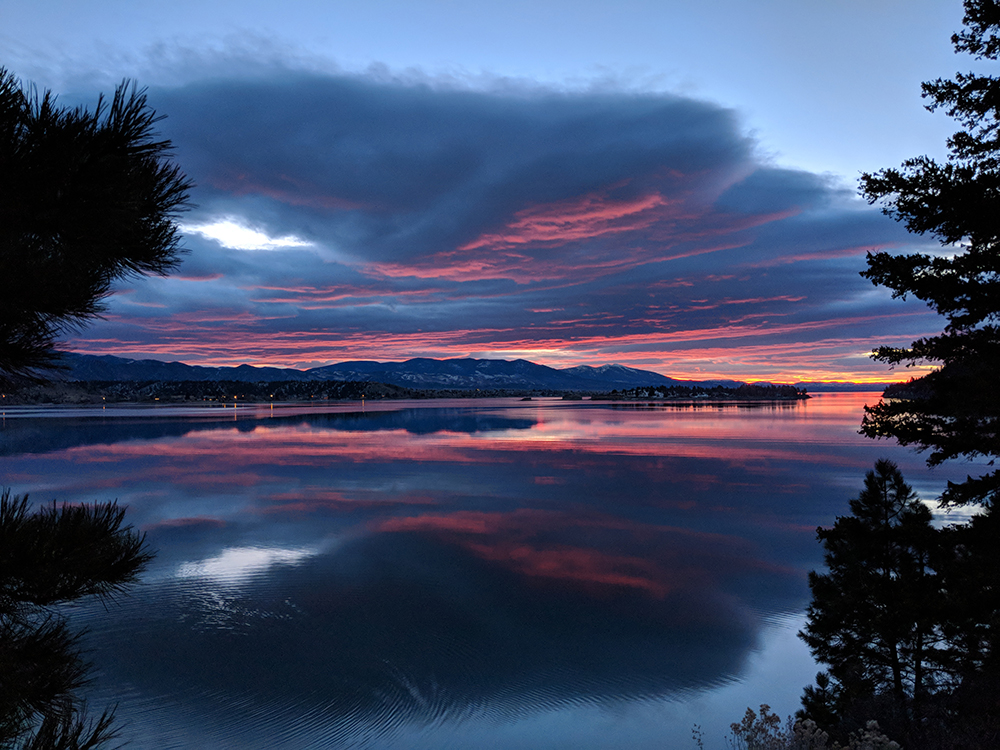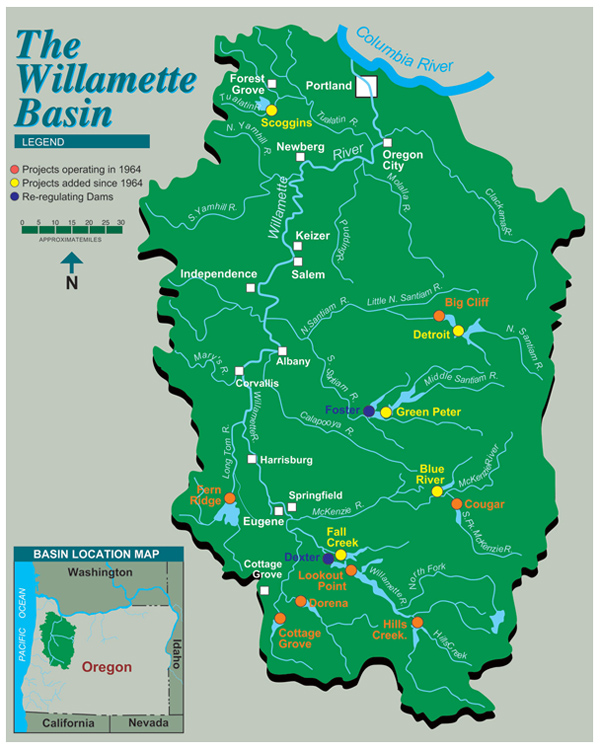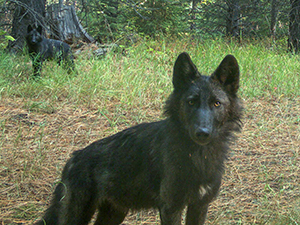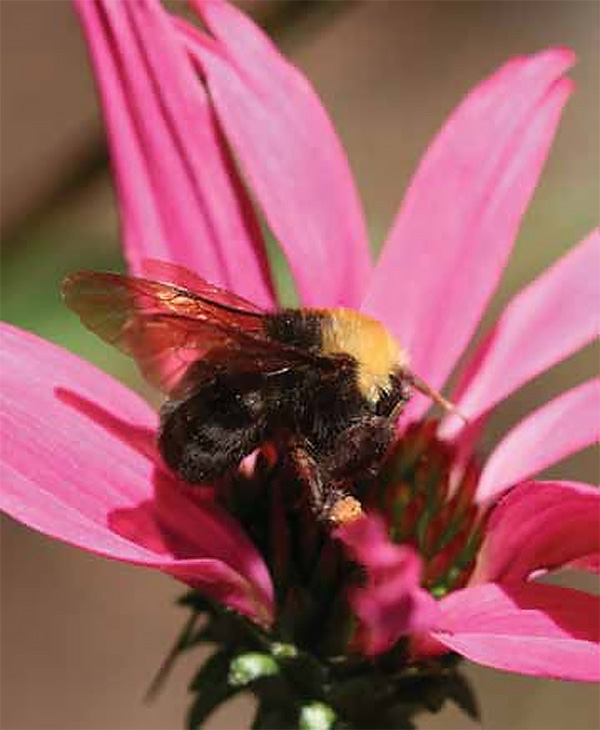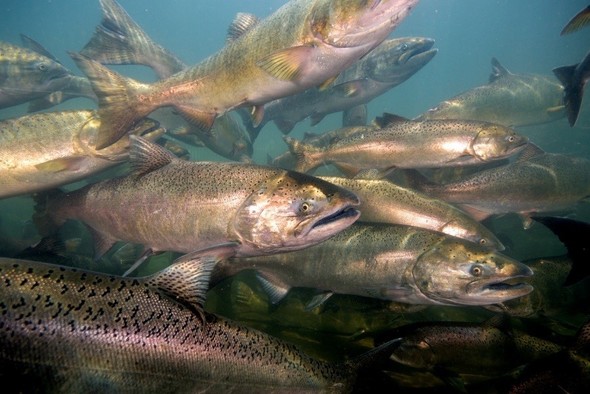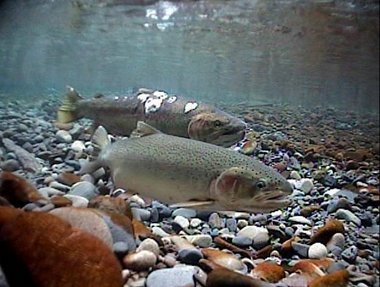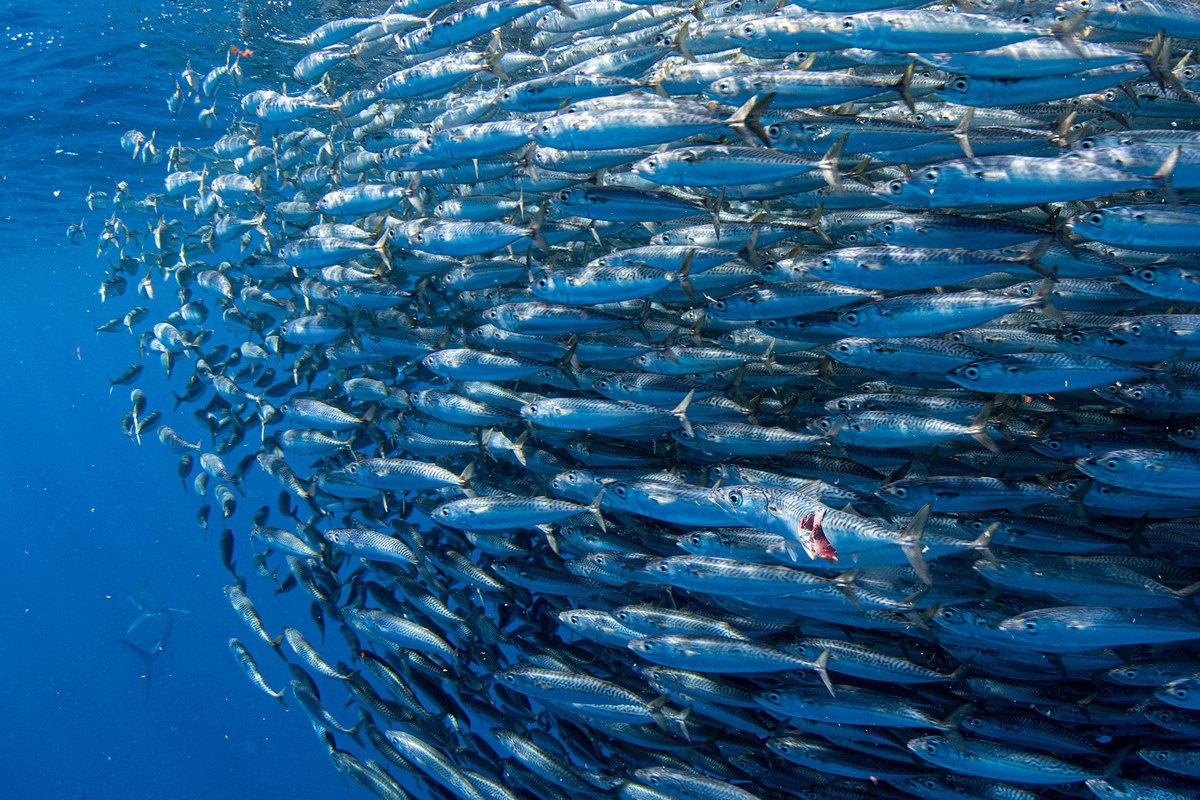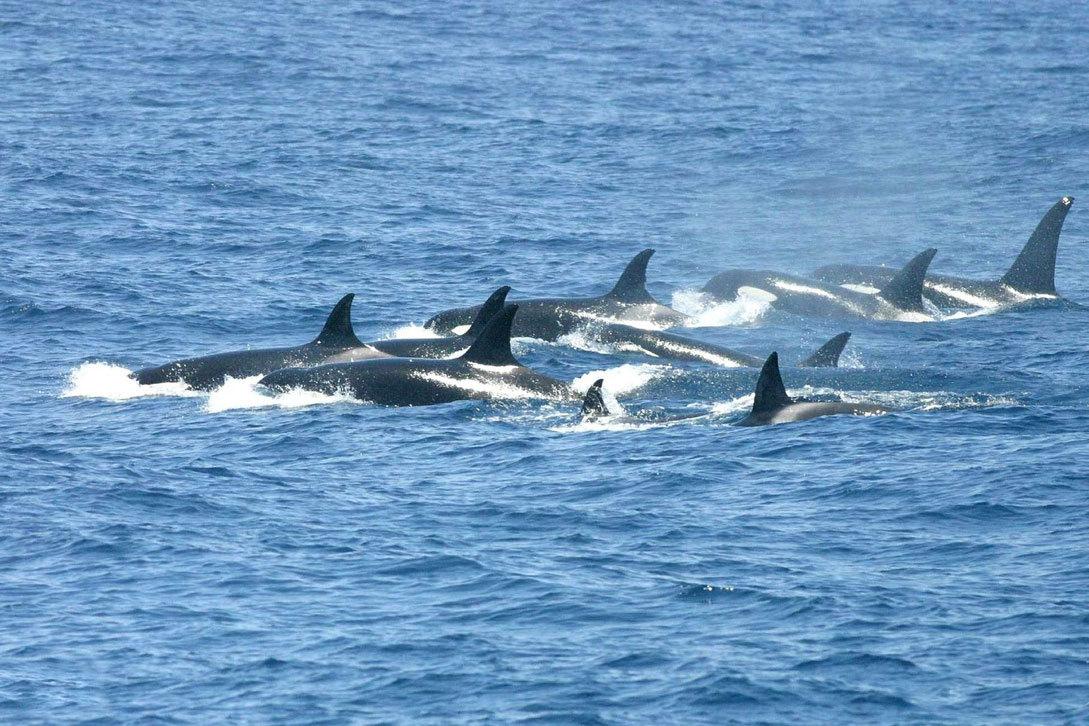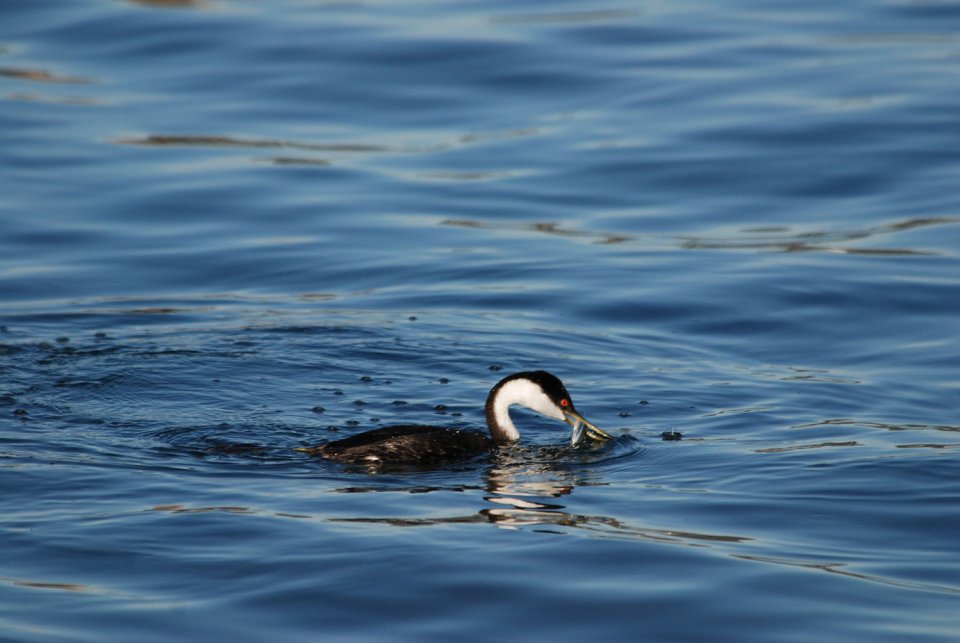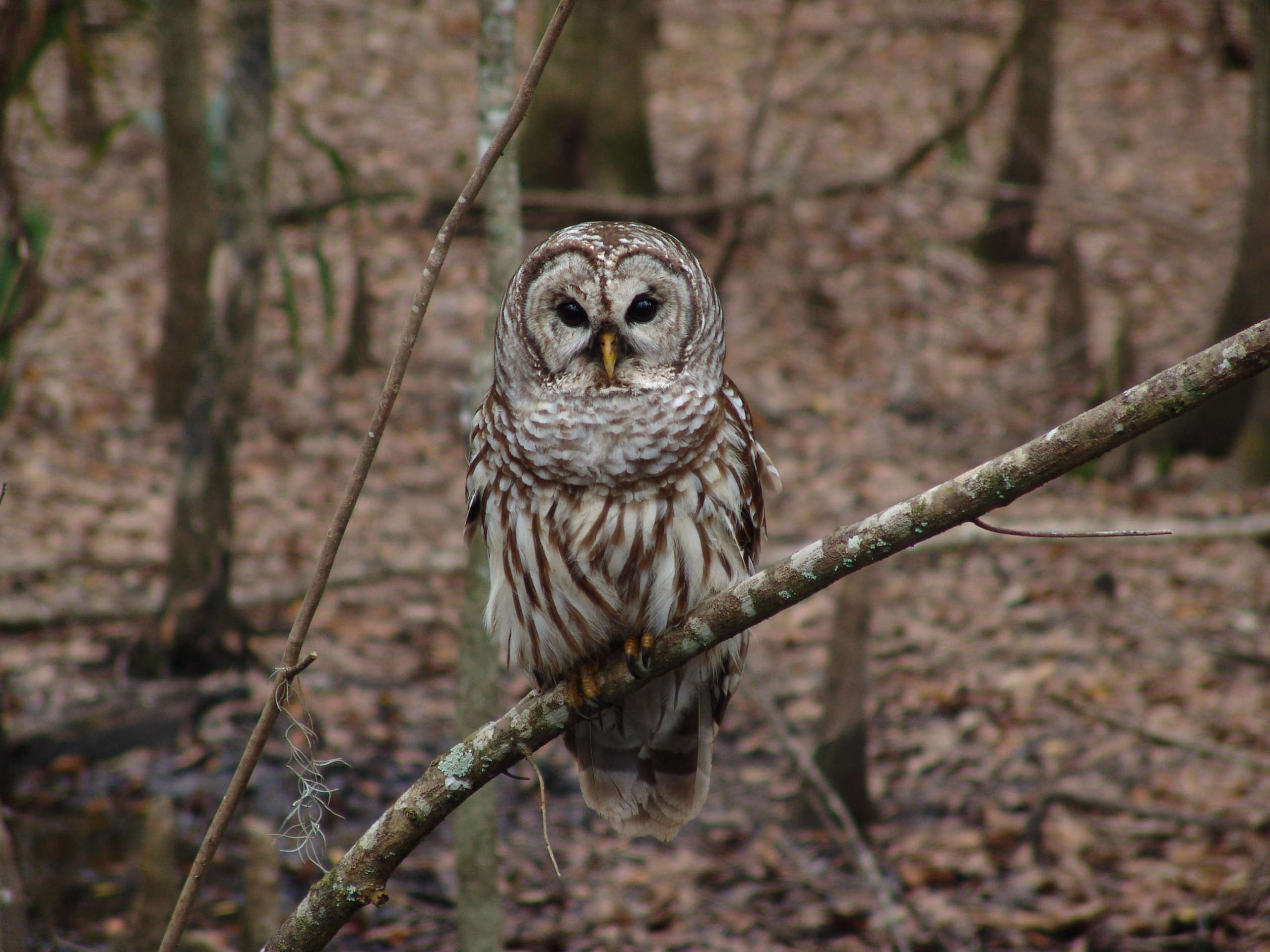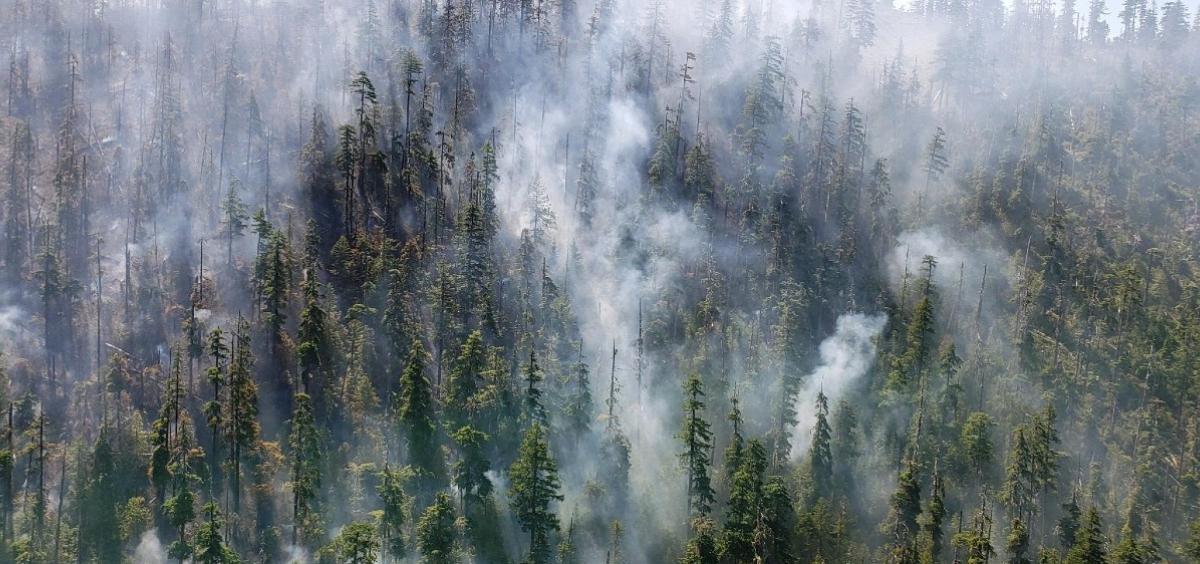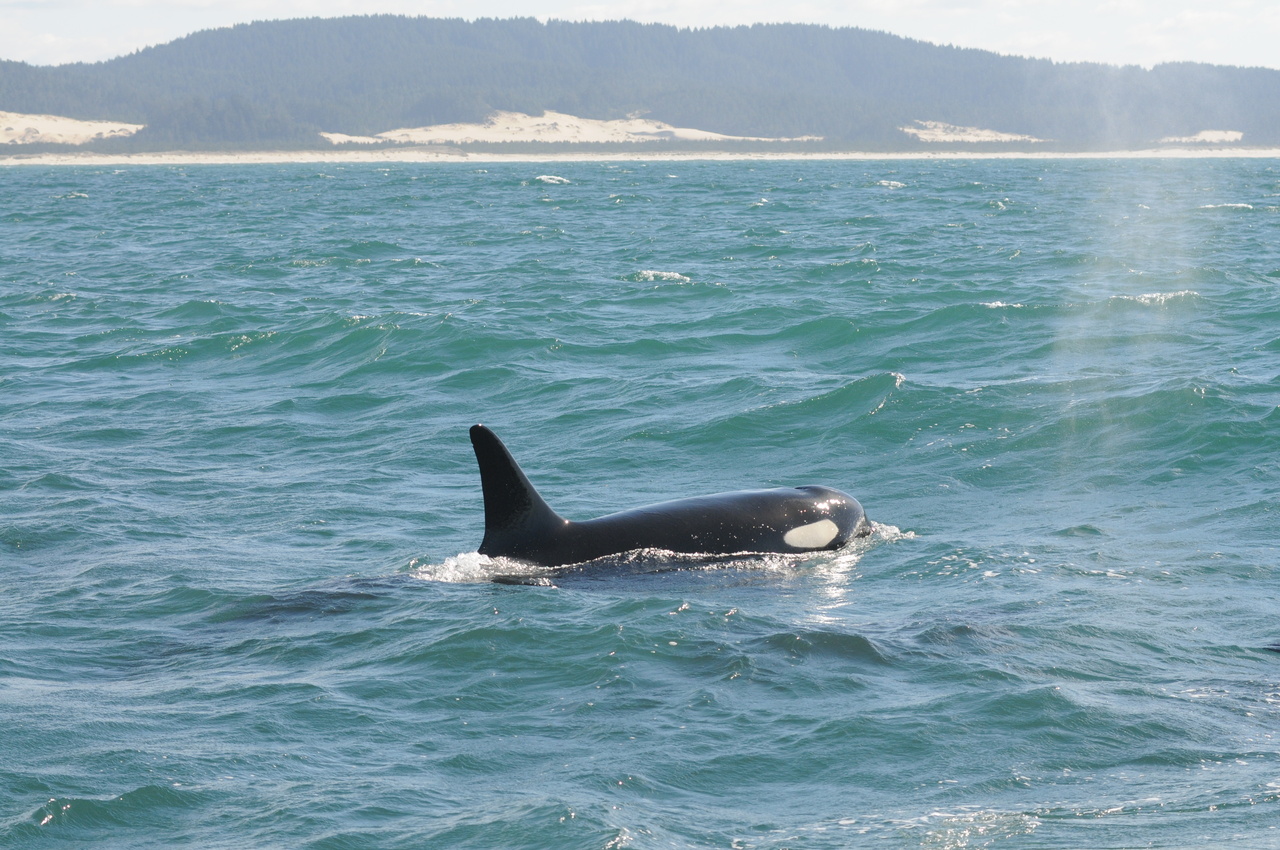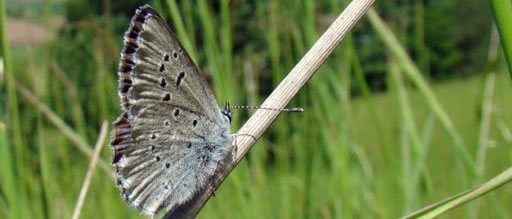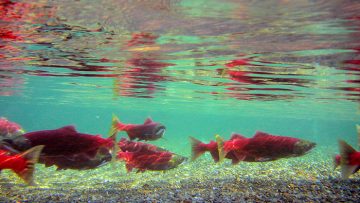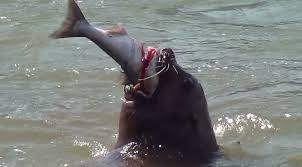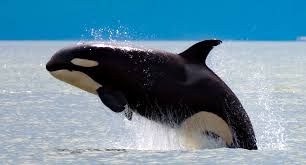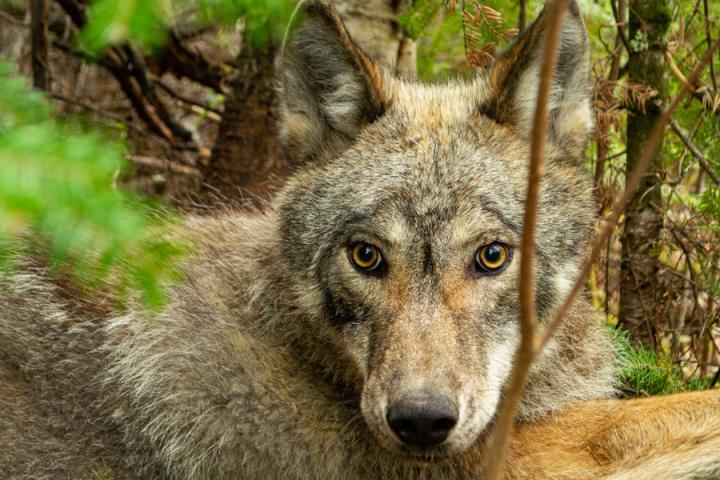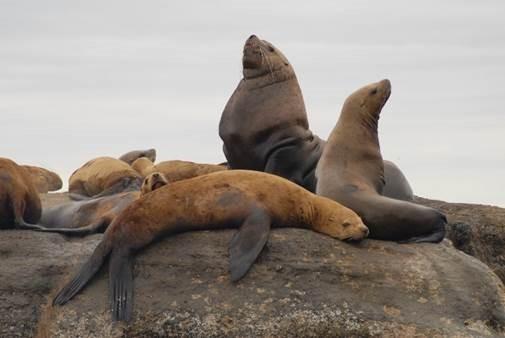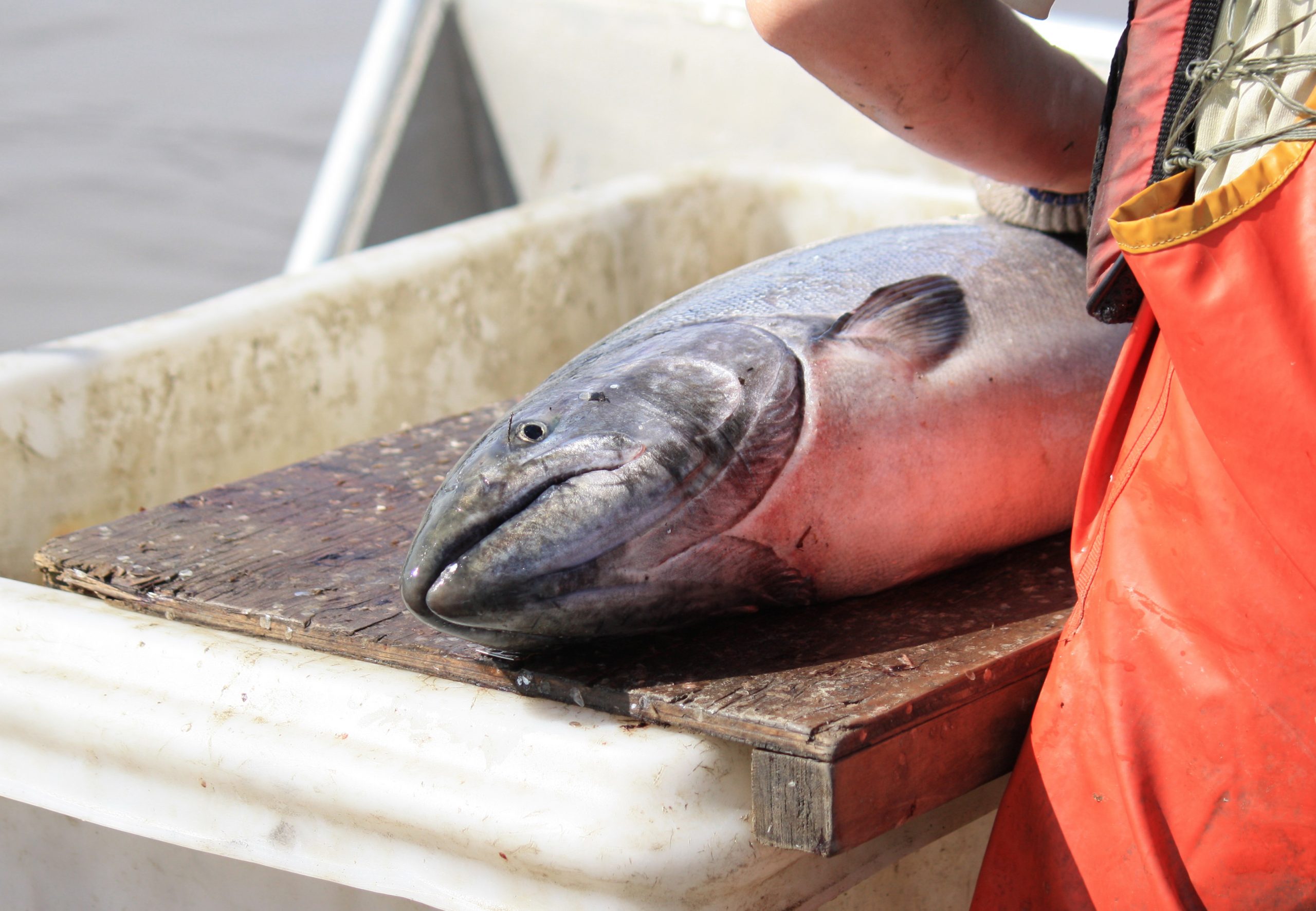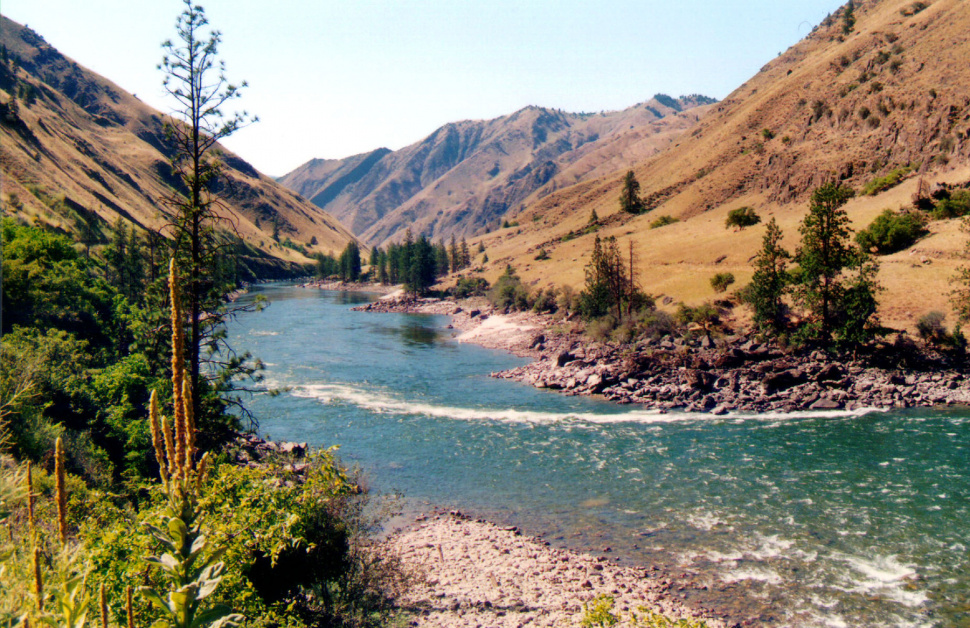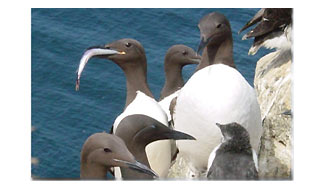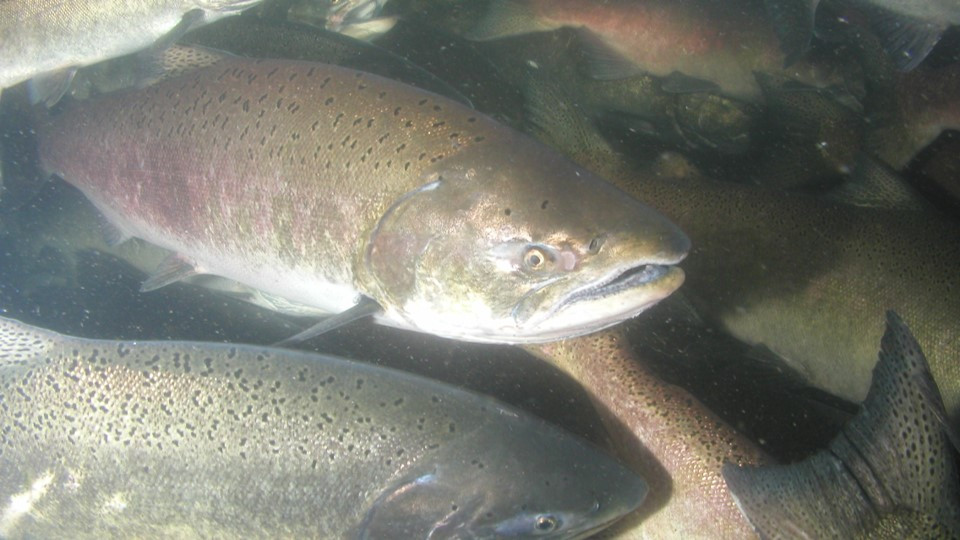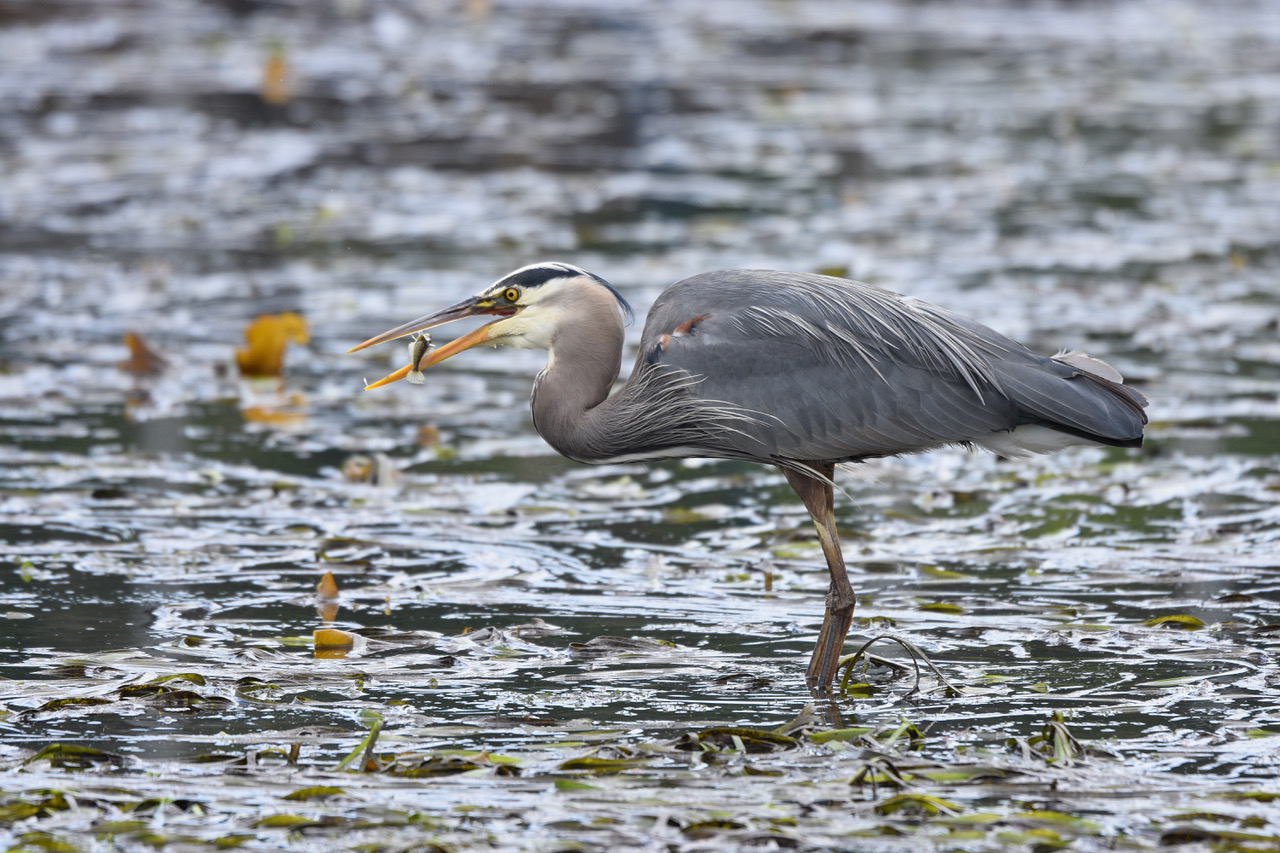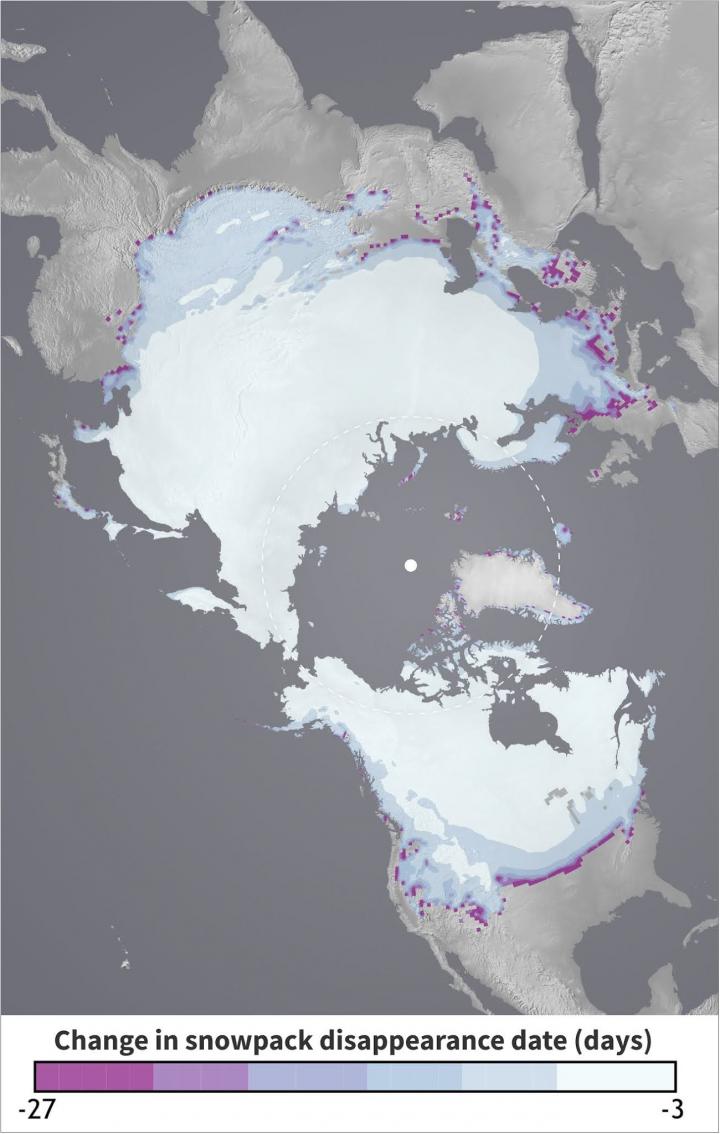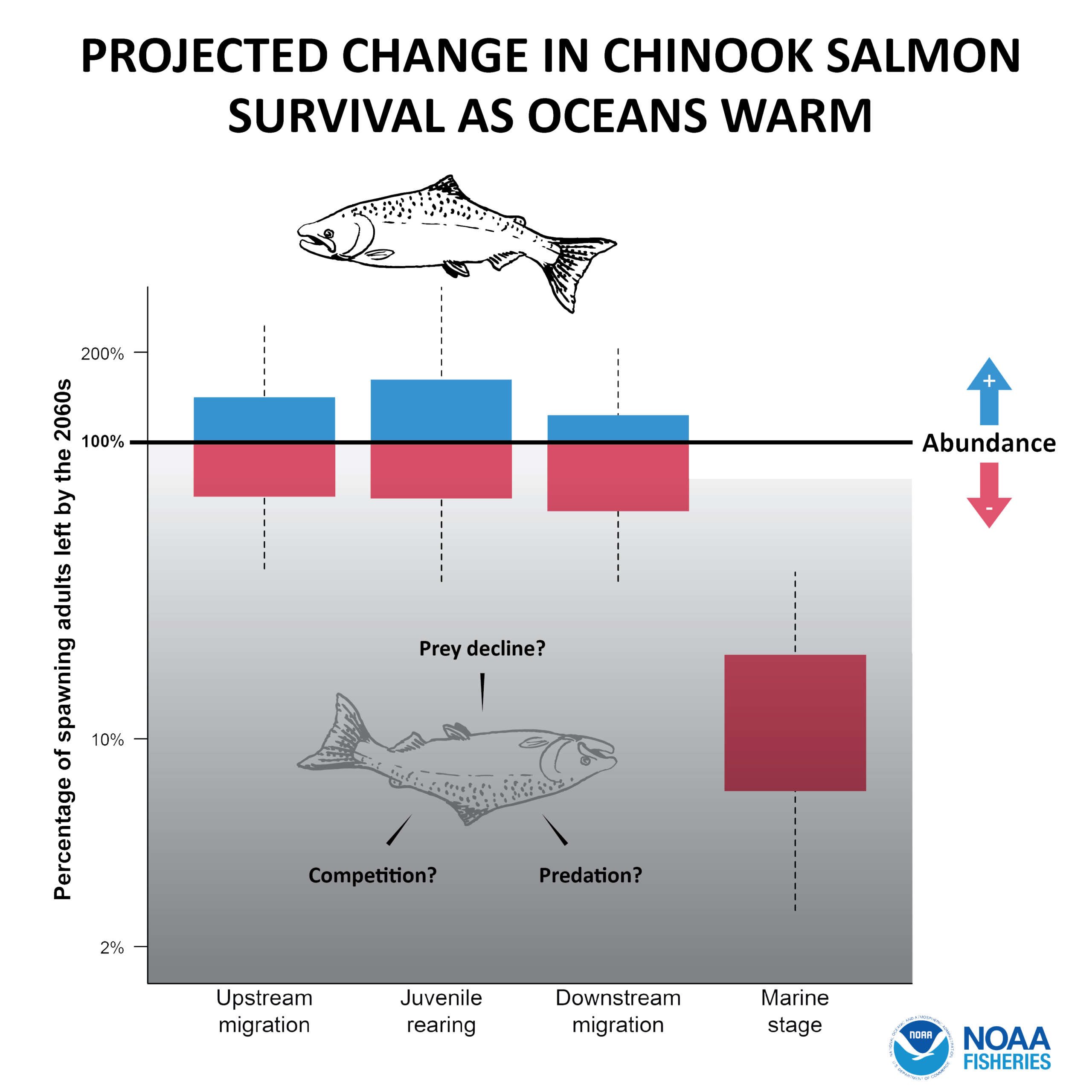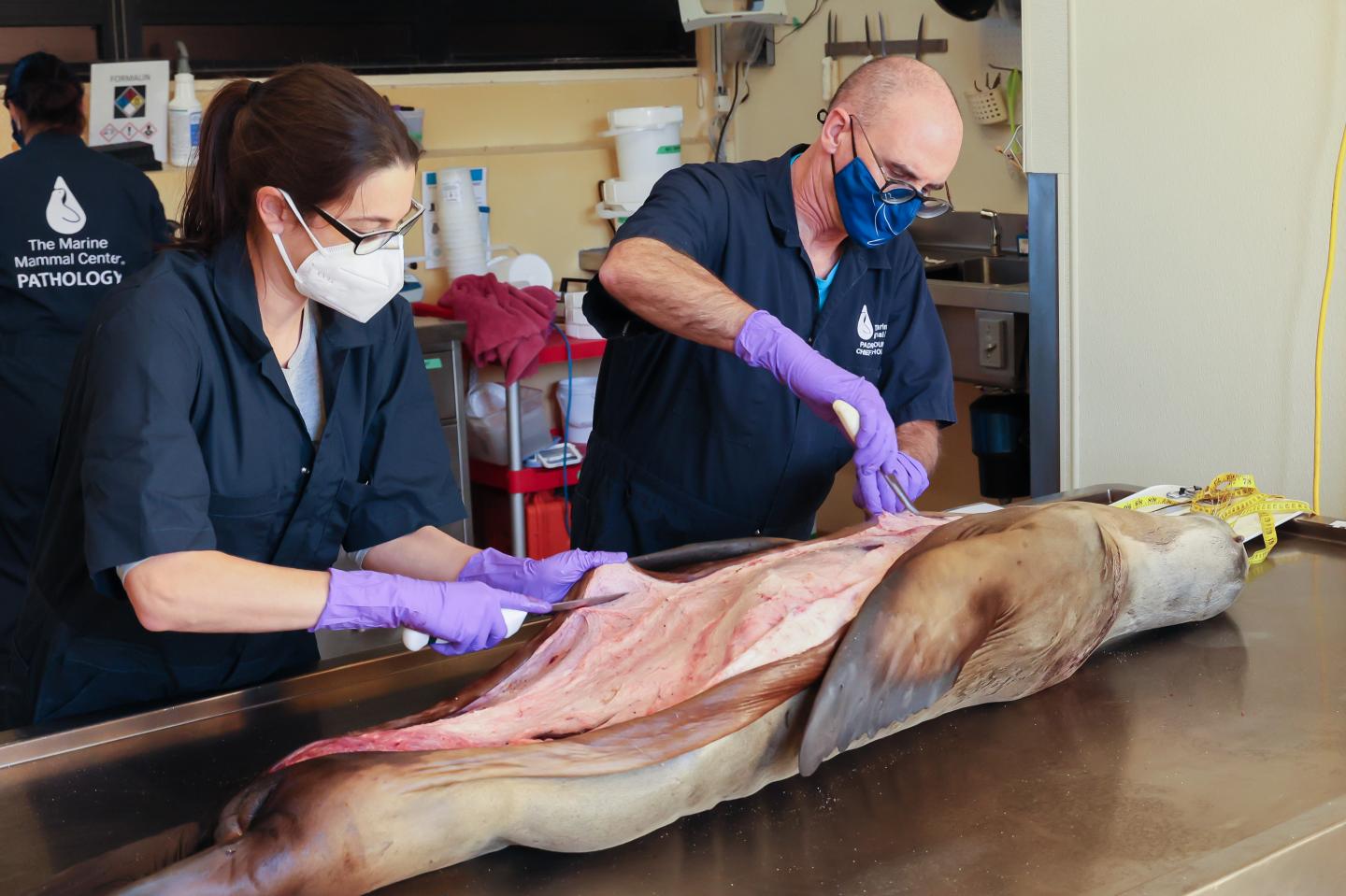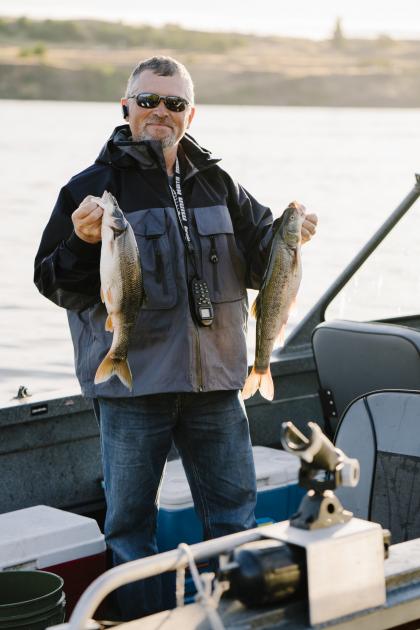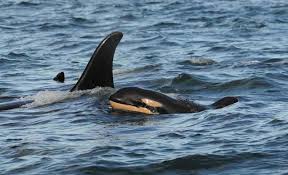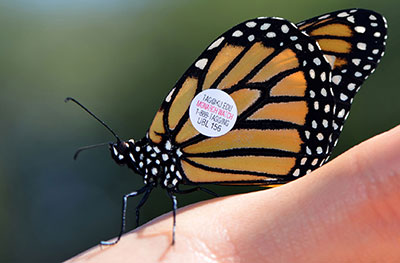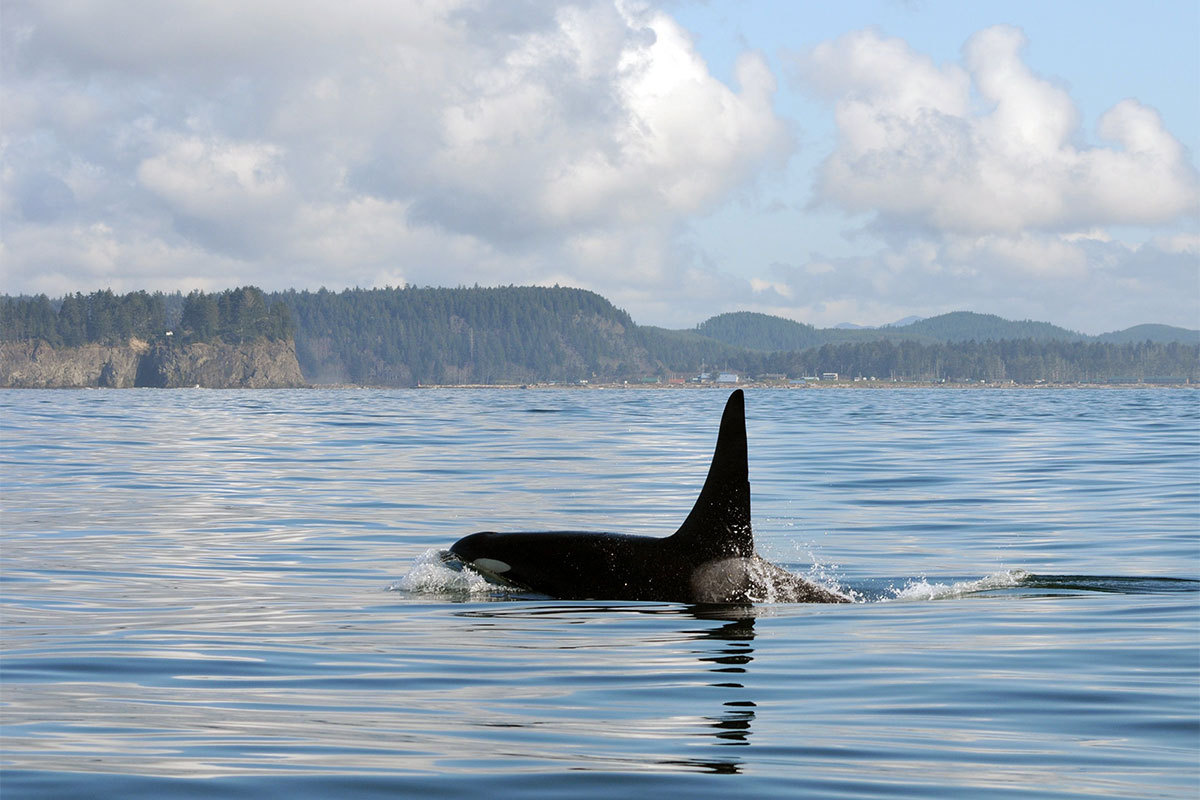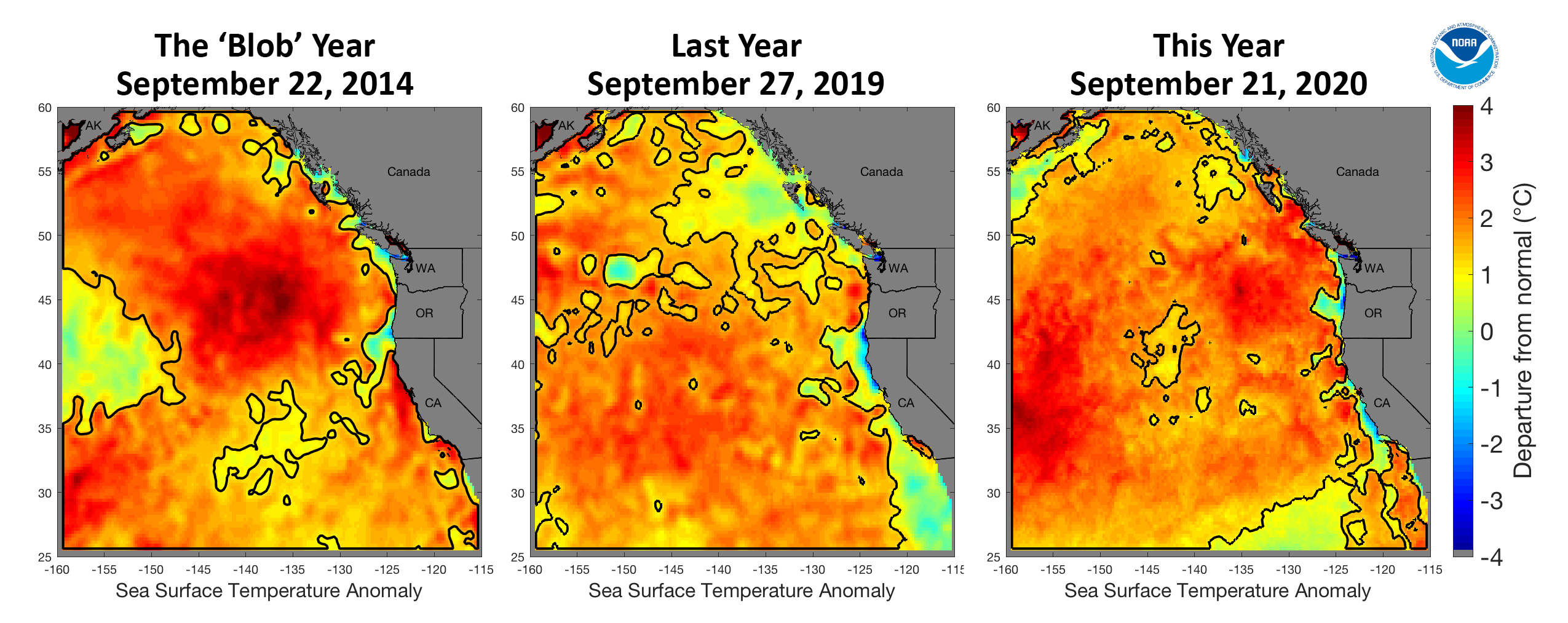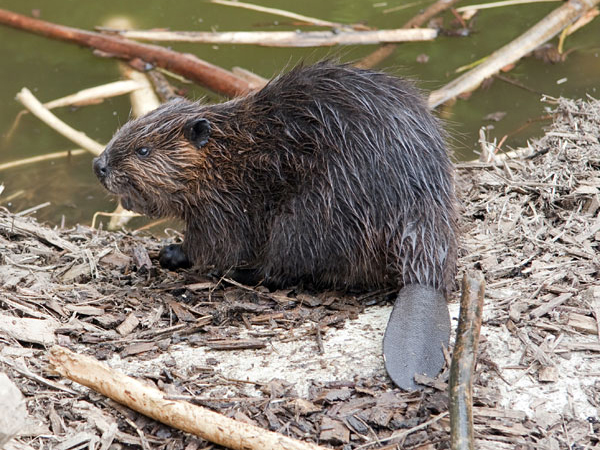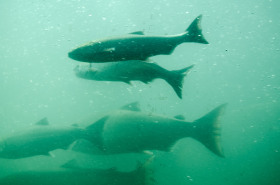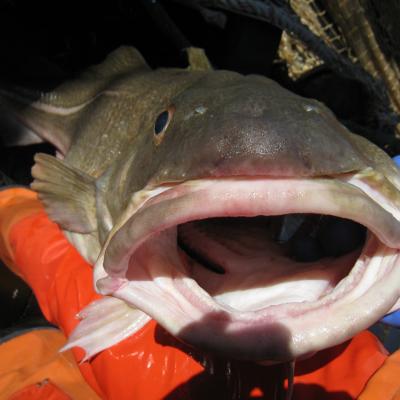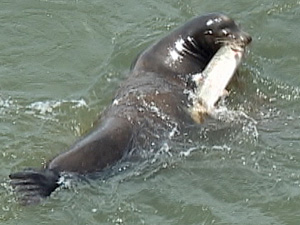Report Details How Climate Change Will Impact Federal Hydropower; For BPA, More Replacement Power In Summer Months
September 29th, 2022
The U.S. Department of Energy’s Oak Ridge National Laboratory has provided hydropower operators with new data to better prepare for extreme weather events in the Pacific Northwest and shifts in seasonal energy demands caused by climate change.
Pacific Northwest Groups Urge Action On Modernizing Columbia River Treaty, Concerned About Uncertainties Of ‘Called-Upon’ Operations
September 22nd, 2022
Nearly three-dozen Pacific Northwest organizations have sent a letter to the State Department and other federal agencies urging the Biden Administration to better inform the region on efforts to overhaul the 1964 U.S.-Canada Columbia River Treaty, add “ecosystem function” as a treaty purpose, and include Columbia River basin Tribes in treaty governance. The letter also expresses concerns about potential “called-upon” river operations if the treaty is not modernized by 2024.
PNNL Report Details How Hydropower Performs During Severe U.S. West Droughts, Maintains 80 Percent Of Average Generation
September 20th, 2022
The megadrought in the Southwestern United States is the driest—and longest—in the last 1,200 years, depleting water reservoir levels to critically low levels over the past 22 years. This persistent drought has policymakers and system planners concerned about the reliability of the electric grid under worsening drought conditions and climbing temperatures.
OSU Leaf Temperature Study Suggest Climate Change Will Reduce Forests’ Ability To Act As Carbon Sink, Leaves Get Too Warm
September 13th, 2022
A new study led by Oregon State University suggests leaves in forest canopies are not able to cool themselves below the surrounding air temperature, likely meaning trees’ ability to avoid damaging temperature increases, and to pull carbon from the atmosphere, will be compromised in a warmer, drier climate.
Study Says 35 Percent Of Montana’s Cold-Water Habitats May Not Be Suitable For Trout By 2080; For Now, Anglers Adapting
September 8th, 2022
Despite decades of resiliency, climate change may put Montana’s popular trout fisheries at risk, according to a new study.
WDFW Looking For Public Feedback On Boating Rules To Protect Endangered Killer Whales; Legislative Report Due In November
September 8th, 2022
The Washington Department of Fish and Wildlife is looking for public feedback on rules for recreational boaters and commercial whale watching operators intended to support endangered Southern Resident killer whale recovery.
Research: If No Global Warming Mitigation, World’s Fish Stocks Will Drop 36 Percent Of Current Levels, Can’t Rebuild
September 8th, 2022
Global fish stocks will not be able to recover to sustainable levels without strong actions to mitigate climate change, a new study has projected.
Harmful Algae Growth Off California Coast Killing California Sea Lions; Neurotoxin Moves From Fish To Predators
September 8th, 2022
The rapid growth of harmful algae along parts of the Southern California coast is producing high concentrations of a toxin that affects California sea lions. It has led to strandings of more than 60 of the marine mammals since mid-August. Many have acted erratically, suffered from seizures, and in some cases died.
WSU Study Shows Wildlife Crossings Over/Under Highways Save Big Bucks By Reducing Wildlife-Vehicle Collisions
September 8th, 2022
Crossings over highways intended to preserve biological diversity also appear to reduce wildlife-vehicle collisions in Washington state, saving roughly $235,000 to $443,000 every year per structure.
USFWS Says Delisting Southern Sea Otter May Be Warranted, Initiates Status Review
August 24th, 2022
The U.S. Fish and Wildlife Service’s 90-day finding on a petition to delist the southern sea otter says it presents substantial information that the petitioned action may be warranted. The species was listed as threatened under the Endangered Species Act in 1977.
Study Says Climate Change Makes California Megaflood Twice As Likely, Would Inundate Major Valleys For Hundreds Of Miles
August 23rd, 2022
California lives with a sleeping giant — an occasional flood so large that it inundates major valleys with water flows hundreds of miles long and tens of miles across.
Idaho’s Draft State Wildlife Action Plan Starkly Details Climate Change Impacts On Fish/Wildlife; Heat, Drought, Early Runoff
August 11th, 2022
Idaho’s ten-year plan for conserving and managing the state’s most at-risk fish and wildlife and the habitat they depend on says that climate change is one of the stressors impacting all of the state’s animals and lands.
Anticipating Shasta Lake Water Too Hot For Sacramento River Salmon, Innovative Chilling Units At Hatchery Protecting ESA Chinook
August 11th, 2022
The Bureau of Reclamation and U.S. Fish and Wildlife Service are partnering to protect winter-run Chinook salmon in a crucial year of their life cycle at the Livingston Stone National Fish Hatchery at Shasta Lake during the third consecutive drought year in California.
USFWS Report Says Reintroducing Sea Otters To Northern California, Oregon Feasible; No Recommendation, Next Steps Stakeholder Engagement
August 11th, 2022
Under a directive from Congress, the U.S. Fish and Wildlife Service evaluated the feasibility of reintroducing sea otters to their historical range along the West Coast of the contiguous United States. The Service focused the assessment on northern California and Oregon, where potential sea otter reintroduction would have the greatest conservation value.
New Study Measures 38 Years Of Glacier Change In Alaska’s Kenai Fjords; 13 Of 19 Show Substantial Retreat
August 11th, 2022
As glaciers worldwide retreat due to climate change, managers of national parks need to know what’s on the horizon to prepare for the future. A new study from the University of Washington and the National Park Service measures 38 years of change for glaciers in Kenai Fjords National Park, a stunning jewel about two hours south of Anchorage.
Wolves: USFWS Sued For Missing Deadline On Listing Decision; Yet Another Wolf Shooting In Eastern Oregon
August 11th, 2022
Wildlife conservation organizations sued the U.S. Fish and Wildlife Service Tuesday for missing a deadline to decide whether gray wolves in the northern Rocky Mountains warrant federal protection under the Endangered Species Act.
Columbia River Long-Term Water Supply Forecast; Tension Coming Over Adequate Streamflows For Fish, Higher Demand For Hydro
August 4th, 2022
Anticipated future shifts in water supply and water demands will combine to create potential vulnerabilities related to water availability across many areas of eastern Washington, including trouble for fish, according to a new report from the Washington Department of Ecology, Washington State University, and the State of Washington Water Research Center.
Goodbye 1937 Flow Data: With Climate Change BPA Now Using Most Recent Conditions To Inform Future PNW Hydrology, Power Generation Estimates
August 4th, 2022
Regional shifts in streamflows have prompted the Bonneville Power Administration to revise its generation forecast methodology to more accurately reflect a Northwest water supply impacted by climate change.
Montana Reports Stable Wolf Population Numbers; 1,141 Wolves In 2021, Down 40 From 2020
August 4th, 2022
Wolf numbers and distribution continue to be stable across Montana, according to numbers released this week in the 2021 Montana Fish, Wildlife & Parks Wolf Report.
Efforts Under NOAA Permit To Remove, Euthanize Salmon-Eating Sea Lions In Columbia, Willamette Rivers Showing Promising Results
July 28th, 2022
A recent report on pinniped predation shows that the presence of California sea lions at Bonneville Dam has declined significantly since 2015 when 195 of the marine mammals were observed by the U.S. Army Corps of Engineers in the dam’s tailraces. The number in 2021 was just 24.
Study Simulates Future Of Snowmelt, Water In Northern Hemisphere; Snowpack Water Could Drop 80 Percent In Rockies
July 21st, 2022
Water resources will fluctuate increasingly and become more and more difficult to predict in snow-dominated regions across the Northern Hemisphere by later this century, according to a comprehensive new climate change study led by the National Center for Atmospheric Research.
New Wolf Pack In Central Oregon? Adult With Five Pups Has Upper Deschutes Designated As ‘Area Of Known Wolf Activity’
July 21st, 2022
The Oregon Department of Fish and Wildlife has designated a new “Area of Known Wolf Activity” in the Upper Deschutes River area near the border of northern Klamath and southern Deschutes counties.
Extinction Risk For World’s Only Winter-Run Chinook: Eggs Moved To Cold Water Above Shasta Reservoir, Could Inform Reintroduction Above Dams
July 20th, 2022
The Winnemem Wintu Tribe, the California Department of Fish and Wildlife, the National Oceanic and Atmospheric Administration Fisheries and the U.S. Fish and Wildlife Service last week celebrated the return of endangered winter-run Chinook salmon eggs to the McCloud River upstream of Shasta Reservoir for the first time since the construction of the Shasta Dam in the 1940s.
California Losing Its Trees, Might Not Be Coming Back; Shrub, Grass Cover Rising
July 20th, 2022
California is banking on its forests to help reduce planet-warming carbon dioxide in the atmosphere. But that element of the state’s climate-change solution arsenal may be in jeopardy, as new research from the University of California, Irvine reports that trees in California’s mountain ranges and open spaces are dying from wildfires and other pressures – and fewer new trees are filling the void.
White House Issues Reports On Basin Salmon Recovery, Costs; ‘Business As Usual’ Not Restoring ESA-Listed Salmon, Steelhead
July 15th, 2022
Saying that “business as usual” is not restoring threatened and endangered salmon and steelhead in the Columbia/Snake river basins, the White House released two reports this week, adding more information to the debate on the costs and efficacy of breaching the four lower Snake River dams as a path towards recovery.
‘Intensively Monitored Watersheds’ Report Details Habitat Restoration Benefits For Juvenile Salmon, But Lack Of Increase In Adult Abundance
July 8th, 2022
In the Pacific Northwest, thirteen watersheds are “intensively monitored” to provide key data on regional salmon and steelhead recovery efforts. A new report has mixed messages about the success of habitat restoration in boosting returns of adult fish listed under the Endangered Species Act.
Urgency: With Declines In Chinook Salmon, Endangered Killer Whales Not Getting Enough To Eat Since 2018; Energy Deficit Six Of Last 40 Years
July 7th, 2022
The endangered southern resident killer whale population isn’t getting enough to eat, and hasn’t been since 2018, a new University of British Columbia study has determined.
Bursting Myths, Wishful Thinking Over Allowing Wolves To Return To Traditional Landscapes
July 7th, 2022
In a new finding that goes against current conservation paradigms, re-introducing wolves and other predators to our landscapes does not miraculously reduce deer populations, restore degraded ecosystems or significantly threaten livestock, according to a new study.
Using 60 Years Of Data, Idaho Study Details How Climate Change Is Shrinking Salmon Habitat
June 30th, 2022
A new study led by a University of Idaho researcher offers high-resolution details on how Chinook salmon habitats, due to climate change, are being lost on Bear Valley Creek, a headwater stream of the Salmon River in central Idaho.
Salmon Predation In The North Pacific: UW Study Shows How Salmon Group Size Affects Predation Risk, Foraging Success
June 30th, 2022
Animals that live in groups tend to be more protected from predators. That idea might be common sense, but it’s difficult to test for some species, especially for wild populations of fish that live in the ocean.
Infrastructure Bill Funds Go To Projects To Restore, Conserve West’s Sagebrush Ecosystem; Largest Contiguous Ecotype In U.S.
June 23rd, 2022
The Biden Administration will invest more than $9 million in fiscal year 2022 Bipartisan Infrastructure Law funds to support over 40 projects in Idaho and seven other western states to restore and conserve strategic areas within the sagebrush ecosystem.
Study Shows Science Reporting Of Climate Change Can Change Minds; But Gains Fleeting When Beliefs Challenged
June 23rd, 2022
Science reporting on climate change does lead Americans to adopt more accurate beliefs and support government action on the issue – but these gains are fragile, a new study suggests.
Hot, Dry, Low-Flow Conditions Has California Trucking 20 Million Hatchery Salmon Smolts To Ocean; Placed In Seaside Net Pens
June 23rd, 2022
The California Department of Fish and Wildlife is nearing the completion of its efforts to transport 19.7 million hatchery-raised fall-run and 960,000 spring-run juvenile Chinook salmon to the San Pablo Bay, San Francisco Bay and seaside net pens this spring and summer.
Placing Large Wood In Streams Isn’t Just About Fish; OSU Study Looks At Impacts Of Log Jams On Land-Based Animals
June 23rd, 2022
Land managers have invested millions of dollars annually since the 1980s to place large pieces of wood back in streams, owing primarily to its importance for fish habitat. But little is known about how large wood in streams impacts birds and land-based animals.
Last Year Heat Wave ‘Worse Scenario For Intertidal Organisms’; Mass Shellfish Die-Off Will Affect Populations For Years
June 23rd, 2022
A year ago, June, 2021, temperatures in Oregon, Washington and British Columbia soared to well above 100 degrees Fahrenheit, with Seattle setting an all-time heat record of 108 degrees on June 28.
Flooding In The Future: Climate Change Will Bring Larger, Longer Floods In Columbia River Basin; Estimating Flood Risk Needs Updating
June 16th, 2022
Climate change is likely to exacerbate flooding throughout the Columbia River basin, according to a recent study by researchers at Oregon State University and the University of Washington affiliated with the Climate Impacts Research Consortium.
Report On Canada’s Pacific Ocean Ecosystems Stresses How Climate Change Lowering Salmon Survival, Altering Food Web
June 14th, 2022
A report on the state of Canada’s Pacific Ocean ecosystems says warm ocean temperature have changed the zooplankton community with consequences for fish, seabirds and the entire Pacific marine food web. Climate change has altered the ecosystems that Canada’s Pacific salmon depend on at every stage of their life cycle.
Global Warming Causing Ocean To Lose Memory; Creates Challenge For Climate Predictions, Managing Marine Resources
June 8th, 2022
Using future projections of the latest generation of Earth system models, a new study found that most of the world's ocean is steadily losing its year-to-year memory under global warming.
WSU Researchers Develop Drone System To Chase Off Pest Birds: ‘We Could Make Drones Look Like Predators’
June 8th, 2022
In the future, cameras could spot blackbirds feeding on grapes in a vineyard and launch drones to drive off the avian irritants, then return to watch for the next invading flock. All without a human nearby.
USFWS Seeks ESA Rule Change To Allow Listed Species Impacted By Climate Change To Be Introduced Outside Historical Ranges
June 8th, 2022
In the first Endangered Species Act interpretive rule produced under the Biden Administration, the U.S. Fish and Wildlife Service is proposing to revise regulations under the ESA to better facilitate recovery by allowing for the introduction of listed species to suitable habitats outside of their historical ranges.
Permits Sought To Rescue Salmon, Steelhead In Drying Streams; ‘Salmonids Left In These Declining Conditions Are Expected To Die’
June 7th, 2022
On the central California coast, the southern end of Pacific salmon’s range, streams are drying up and the imperiled fish need to be rescued if they are to survive. Biologists are planning a relocation to save these coho and steelhead.
Whale Watching Boaters Fined For Getting Too Close To Puget Sound’s Endangered Killer Whales; Boats Interrupt Feeding On Salmon
June 3rd, 2022
Two recreational boaters illegally approached endangered Southern Resident killer whales in rented boats last fall. They have agreed to pay fines for violating regulations that protect the whales from vessel traffic and noise.
Montana Court Restores Protections For Wolverines While USFWS Reconsiders Decision To Not List Under ESA
May 25th, 2022
A Montana District Court judge Thursday agreed with conservation groups that wolverines need additional protections while the U.S. Fish and Wildlife Service reconsiders its 2020 decision not to protect the species as threatened or endangered.
As Drought Continues Across West, Extreme Weather Threatens Energy Reliability In Parts Of North America; Could Impact Electricity Transfers
May 20th, 2022
The North American Electric Reliability Corporation’s 2022 Summer Reliability Assessment warns that several parts of North America are at elevated or high risk of energy shortfalls this summer due to predicted above normal temperatures and drought conditions over the western half of the United States and Canada.
Columbia Basin’s Sagebrush Steppe One Of Country’s Most Endangered Ecosystems; Study Looks At Ways To Control Wildfire
May 18th, 2022
New research led by an Oregon State University scientist provides the first long-term study of methods to control the spread of wildfire in the sagebrush steppe ecosystem that dominates parts of the western United States.
First Detections Of New Avian Flu In Oregon Wild Birds, Idaho Sees Die-Offs; New Study Analyzes How Strain Spreading
May 18th, 2022
Several Canada goose goslings collected from Alton Baker Park in Eugene, OR have tested positive for highly pathogenic avian influenza (HPAI), and a larger outbreak is suspected as more sick and dead waterfowl have been observed at the park. A red-tailed hawk from Eugene and an osprey collected from Dorena Reservoir (east of Cottage Grove) May 10 have also tested positive.
Study Identifies Factors To Predict Water Supplies; Total Winter Snowfall, How Fast It Melts And When
May 17th, 2022
Knowing what factors influence when and how much snowmelt ultimately makes it to streams, rivers and reservoirs is crucial for water managers trying to make the most of limited water resources.
Saving Salmon During Drought: Sacramento River Spring Chinook Relocated To Cooler Native Habitats Above Dam To Aid Egg Survival
May 11th, 2022
State and federal biologists have begun moving threatened spring-run Chinook salmon to Clear Creek in northern California, where colder water temperatures will better support spawning and help their eggs survive the continuing drought.
Coastal Estuaries Getting Hit With Both Climate Change, Increased Invasive Species; Double Whammy For Native Species
May 10th, 2022
Native species in West Coast estuaries are expected to experience greater declines as invasive species interact with climate change, according to a study from the University of California, Davis.
Shark In Near-Shore Waters Off Northwest Coast May Warrant ESA Listing
May 3rd, 2022
Following a petition, the National Marine Fisheries Service has announced that a shark found off the Northwest coast may warrant protection under the federal Endangered Species Act.
Study Documents Steady, Staggering Decline In Global Bird Populations; 48 Percent In Decline, 39 Percent Stable
May 3rd, 2022
Staggering declines in bird populations are taking place around the world. Loss and degradation of natural habitats and direct overexploitation of many species are cited as the key threats to avian biodiversity. Climate change is identified as an emerging driver of bird population declines.
Salmon Go The Way Of The Dinosaur? Study Predicts Mass Extinction Of Marine Life Unless Greenhouse Gas Emissions Reversed
April 28th, 2022
As greenhouse gas emissions continue to warm the world’s oceans, marine biodiversity could be on track to plummet within the next few centuries to levels not seen since the extinction of the dinosaurs, according to a recent study in the journal Science by Princeton University researchers.
Olympic Peninsula Glaciers, Snowfields Disappearing Fast; Diminishing Streams For Fish
April 27th, 2022
Since about 1900 Washington state’s Olympic Peninsula has lost half of its glacier area and since 1980, 35 glaciers and 16 perennial snowfields have disappeared.
Menus As Climate Change Data? British Columbia Researchers Find Evidence Warming Waters Affect What Seafood Restaurants Serve
April 27th, 2022
Pacific Northwest seafood lovers may see more Humboldt squid but less sockeye salmon on restaurant menus in the near future due to climate change.
Oregon Fish/Wildlife Commission Eliminates North Umpqua Steelhead Hatchery Program To Protect Declining Wild Fish
April 27th, 2022
In a split 4-3 vote at its meeting in Astoria Friday, the Oregon Department of Fish and Wildlife Commission decided to not release hatchery summer steelhead smolts into the North Umpqua River this year and eliminate the Rock Creek summer steelhead hatchery program.
Interior Seeking Information On Potential Of Wind Energy Farms Off Oregon Coast, Would Be First On West Coast
April 27th, 2022
The Department of the Interior said this week it is seeking information on the potential of offshore wind energy farms off the coast of Oregon.
First Study To Examine Burn Patterns Of 2020 Megafires In Oregon; Younger Trees, Low Canopy Height Most Susceptible To High Mortality
April 26th, 2022
In early September 2020, severe winds, high heat, and prolonged drought conditions led to the explosive growth of wildfires along the western slopes of the Cascades Mountains in the Pacific Northwest. The fires engulfed enormous tracts of forestland, destroyed communities, took dozen of lives, and cost hundreds of millions to fight.
Oregon Details How It Intends To Manage Fishing On Columbia River Tributaries As Wild Steelhead Numbers Remain Historically Low
April 21st, 2022
Wild Columbia River summer steelhead have been declining since 2009, and Bonneville Dam counts in 2021 showed the lowest returns since 1997.
‘The Most Serious Threat’: Draft NOAA West Coast Climate Plan Says Agency Will Study Actions To Promote Recovery Of Columbia River Salmon
April 21st, 2022
Changing climate and oceans are affecting the nation’s living marine resources and the people, businesses and communities that depend on them. From warming oceans and rising seas, to droughts and ocean acidification, these impacts are expected to increase with continued changes in the planet’s climate system.
Due To High Number Of Mortalities Oregon Wolves Increased By Only Two In 2021; Poaching Eliminated Entire Pack
April 20th, 2022
The minimum known count of wolves in Oregon at the end of 2021 was 175 wolves, an increase of two wolves over the 2020 minimum known number of 173, according to the Oregon Wolf Conservation and Management 2021 Annual Report released this week.
Highly Contagious Bird Flu Hitting Bald Eagles, Montana Geese, Idaho Chickens; Has Spread To All Four Migration Flyways
April 20th, 2022
A highly contagious bird flu that has sicken commercial chickens and turkeys, and is now spreading among bald eagles, has been found in Montana geese and Idaho chickens.
Study: PNW Wildfires Altering Air Pollution Patterns Across North America, Undermine Clean Air Gains, Pose Health Threat
April 20th, 2022
Increasingly large and intense wildfires in the Pacific Northwest are altering the seasonal pattern of air pollution and causing a spike in unhealthy pollutants in August, new research finds. The smoke is undermining clean air gains, posing potential risks to the health of millions of people.
Major Energy Transition Underway: Record Amounts of Solar, Storage, Wind Seeking Grid Interconnection
April 19th, 2022
A new study shows over 1,300 gigawatts of solar, storage, and wind in interconnection queues – an indicator of a major energy transition underway, even if most proposed projects will not be built.
Columbia River Treaty Tribes (CRITFC) Present 2022 Energy Vision To Council Aimed At Protecting Salmon
April 14th, 2022
The Columbia River Inter-Tribal Fish Commission this week presented its “2022 Energy Vision For The Columbia River Basin” to the Northwest Power and Conservation Council, with recommendations to get “energy production off the backs of salmon.”
Climate Change Will Bring To PNW Extreme Rain Events Within 12 Months Of Extreme Wildfires, Devastating Debris Flows
April 14th, 2022
In the early morning hours of January 9, 2018, intense rainfall loosened debris and mud in the Santa Ynez mountains, in Santa Barbara County, that had been torched by the Thomas Fire just months before.
Washington’s Wolf Population Has Grown An Average 25 Percent A Year Since 2008; For 2021, 206 Wolves, 33 Packs
April 14th, 2022
Washington’s wolf population continued to grow in 2021 for the 13th consecutive year. The 2021 annual wolf report by the Washington Department of Fish and Wildlife and shows a 16% increase in wolf population growth from the previous count in 2020.
Parties Collaborated To Keep Lemhi River (Central Idaho) From Going Dry During Hot, Dry 2021; Home To ESA-Listed Salmon, Steelhead
April 7th, 2022
Along the Lemhi River in central Idaho, water is essential to farming and ranching that dominates the mountain valley. It is also vital to the recovery of threatened Snake River chinook salmon and steelhead that once returned to the Lemhi by the thousands.
California Has Zero-Mortality Goal For Whales In California Current Ecosystem; Study Stresses Need For Holistic Approach
April 7th, 2022
Whales are threatened by a variety of human activities off the West Coast of the United States, including fishing, ship traffic, and pollution. Overlap between these stressors can compound effects on whale populations, but are rarely addressed by current whale-protection policies in California, according to a study from the University of California, Davis.
IPCC Climate Change Report: Impossible To Limit Global Warming To 2.7 Degrees By 2050 Without Transformational Changes
April 7th, 2022
The third and final installment of the Intergovernmental Panel on Climate Change’s Sixth Assessment Report calls for aggressive and comprehensive actions if we are to achieve net zero emissions by mid-century. It finds we still need to reduce greenhouse gas emissions drastically, beyond what governments have pledged, and that this emissions gap is exacerbated by implementation gaps despite the mitigation efforts underway.
NOAA Study Indicates Climate Warming Will Bring Less Atmospheric Rivers To Pacific Coast States, Less High-Elevation Precipitation
April 7th, 2022
The people, economy, and ecosystems of the Pacific coast states of California, Oregon and Washington are highly dependent on cool-season atmospheric rivers for their annual water supply.
‘Atmospheric Thirst’ Persistent Force In Pushing Western Landscapes, Water Supplies Toward Drought; More Water Required For Existing Needs
April 7th, 2022
In arid Western states, the climate is growing warmer and drier, leading to increased demand for water resources from humans and ecosystems. Now, the atmosphere across much of the U.S. is also demanding a greater share of water than it used to, according to a new study.
Large Quantities Of Plastic Now Found In Arctic Ocean; Found In All Organisms From Plankton To Whales
April 7th, 2022
2021 California Current Ecosystem Report: For Juvenile Salmon, Cooler Coastal Conditions Off NW Coast With Abundant Food
March 31st, 2022
A new report shows cooler waters on the West Coast were sandwiched between a marine heatwave and historically hot, dry conditions on land in 2021. NOAA Fisheries researchers from the Northwest and Southwest Fisheries Science Centers presented these findings to the Pacific Fishery Management Coun
Idaho Petitions To Remove Grizzly Bears From ESA Listing; USFWS Says Still Enough Challenges To Keep Bears From Full Recovery
March 17th, 2022
Idaho Gov. Brad Little has submitted a petition to the U.S. Fish and Wildlife Service to remove grizzly bears in the “Lower 48” United States from the Endangered Species Act and “recognize states’ successful efforts to recover and manage grizzly populations.”
Oregon Approves ‘Private Forest Accord’ Aimed At Fish, Clean Water Protections On 10 Million Acres Of Private Forestland
March 17th, 2022
The Oregon Legislature has passed the Private Forest Accord, which is aimed at bringing durable protections for salmon and cold, clean water across 10 million acres of private Oregon forestland. The legislature also established the Elliott State Research Forest, intended to transform this coastal rainforest into a sanctuary for science. And the legislature allocated a first-ever river resilience funding package to protect streamflows in the face of drought.
Oregon Researchers Say Amount Of Carbon Released During Large Western Wildfires Wildly Overstated; Could Misdirect Climate Mitigation Policy
March 17th, 2022
Research on the ground following two large wildfires in California’s Sierra Nevada mountain range showed the vast majority of carbon stored in trees before the blazes was still there after the fires.
Klamath Study Shows How Tribes Managed Forests For Millenia, Cultural Burning Practices Maintained Forest Structure
March 17th, 2022
Decades of logging and fire suppression have left California’s forests prone to drought, infestation and catastrophic wildfire. Climate change is only exacerbating these impacts. But for thousands of years before, during and after European colonization, Indigenous tribes have lived within and among these forests, intentionally lighting fires to manage landscapes and ecosystem mosaics, enhance habitat, produce food and basketry materials, clear trails, reduce pests and support ceremonial practices.
Whack-A-Mole: Agency That Chased Salmon-Eating Cormorants Off Estuary Island Now Hazing Re-Located Birds On Astoria Bridge Over Columbia River
March 10th, 2022
The same federal agency that previously had hazed and culled Caspian terns and double-crested cormorants at East Sand Island in the lower Columbia River estuary in order to reduce predation on salmon and steelhead smolts is now hazing cormorants nesting on the Astoria-Megler Bridge six miles upstream.
Researchers Seek To Understand Why California Squid Being Found In Gulf Of Alaska; What Does It Mean For Salmon, Other Animals?
March 10th, 2022
As the name implies, California market squid are often sold in stores and typically found between Baja California and Monterey Bay. So, the squid’s periodic appearance in the Gulf of Alaska – about 745 miles north of its expected range – has given researchers pause.
Counting Snowshoe Hares, Indicator Species: WSU Researchers Use ‘Camera-Trapping’ Methods As Alternative To Live Trapping
March 10th, 2022
The number of hares in a forest is a good indicator of how healthy that ecosystem is — and now there’s a better way to find out.
Latest UN Climate Change Report: Continued Warming Will Shift North American Agriculture, Fisheries ‘Suitability Ranges,’ Intensify Production Losses
March 3rd, 2022
In North America, rising air, water, ocean, and ground temperatures have restructured ecosystems and contributed to documented redistribution and mortality of plant, fish, bird, mammal and other faunal species, says the latest Intergovernmental Panel on Climate Change report, released this week.
What Will Climate Change Mean For Future Of Outdoor Recreation In U.S. West?
March 3rd, 2022
Change can be hard, especially when it involves soaring summer temperatures, mega-droughts, invasive species and other items from the list of unpleasant outcomes of climate change. In the Western U.S. where skiing, hiking, biking, hunting and other forms of outdoor recreation are core to many people’s lives, and where local economies rely on income generated by these activities, the impacts are already difficult to ignore.
Increasing Forest Fires Affecting West’s Water Supplies; Greater Streamflow, Floods, Landslides
February 24th, 2022
Forest fires can have a significant effect on the amount of water flowing in nearby rivers and streams, and the impact can continue even years after the smoke clears.
UN Report Says Number Of Wildfires To Rise by 50 Percent By 2100, Governments Not Prepared
February 24th, 2022
Climate change and land-use change are projected to make wildfires more frequent and intense, with a global increase of extreme fires of up to 14 per cent by 2030, 30 per cent by the end of 2050 and 50 per cent by the end of the century, according to a new report by the United Nations.
Groundbreaking Study Documents Widespread, Frequent Lead Poisoning In North American Bald, Golden Eagles
February 24th, 2022
A first-of-its-kind, eight-year study has found widespread and frequent lead poisoning in North American bald and golden eagles impacting both species’ populations.
Suppression Of Northern Pike In Lake Roosevelt Showing Much Success; Goal Is To Reduce Population To ‘Almost Undetectable Levels’
February 17th, 2022
An effort by tribes, the state of Washington and federal agencies to suppress or eradicate invasive Northern Pike is bearing fruit in Lake Roosevelt, the reservoir behind Grand Coulee Dam, according to an update by biologists at this week’s meeting of the Northwest Power and Conservation Council’s Fish and Wildlife Committee.
Map, Report Show Growing Dangers Along Whale ‘Superhighways’; Fishing Gear Kills 300,000 Whales, Porpoises, Dolphins A Year
February 17th, 2022
A comprehensive new map and report tracking whale migrations around the globe highlights where they go in the high seas and the cumulative impacts the animals face from industrial fishing, ship strikes, pollution, habitat loss and climate change.
European Green Crab Invasion In Washington Worsens: Researchers Using E-DNA To Contain, Prevent New Outbreaks
February 17th, 2022
European green crabs feast on shellfish, destroy marsh habitats by burrowing in the mud and obliterate valuable seagrass beds. The invasive species also reproduces quickly, making it a nightmare for wildlife managers seeking to control its spread in Washington’s marine waters.
NOAA Report Says Sea Levels Will Rise Next 30 Years For U.S. Coasts By As Much As Previous 100 years
February 17th, 2022
The United States is expected to experience as much sea level rise by the year 2050 as it witnessed in the previous hundred years, says a new NOAA report released this week. The West Coast will see a rise of 4-8 inches.
Southwestern North America’s 22-year ‘Megadrought’ Region’s Driest Since Year 800; Climate Change Quickening Soil Moisture Deficit
February 17th, 2022
The drought that has enveloped southwestern North America for the past 22 years is the region’s driest “megadrought” — defined as a drought lasting two decades or longer — since at least the year 800, according to a new UCLA-led study in the journal Nature Climate Change.
OSU Wildfires Study Contradicts Common Narrative; Shows Most Fires On Forest Lands Come From Private Property
February 17th, 2022
Research led by Oregon State University shows that fires are more likely to burn their way into national forests than out of them.
Study Explains Why Wolf Kill Rates Drop When Bears Are Around; ‘Wolf Foraging Behavior Doesn’t Occur In Vacuum’
February 10th, 2022
If you are a wolf living in Yellowstone National Park, bears mess with you. They show up uninvited and steal kills from your pack. And when scavenging bears drive you away from tasty carcasses, you and your fellow wolves will – strangely enough – kill less often.
New Atlas Finds Globe’s Glaciers Have Less Ice Than Thought; Revises Outlook For Freshwater Availability, Sea Level Rise
February 10th, 2022
The first atlas to measure the movement and thickness of the world’s glaciers gives a clearer, but mixed picture of the globe’s ice-bound freshwater resources, according to researchers from the Institute of Environmental Geosciences and Dartmouth College.
California Salmon/Climate Study: Diversity Mostly Lost, Dams Confine Salmon To Hottest Parts Of Watersheds
February 3rd, 2022
California’s native salmon have been harmed by more than a century of mining, dam building, floodplain reclamation, fishing pressure, hatchery practices, and introduced predators. These stressors have undermined the resilience of California’s native salmon to the accelerating effects of climate change, new research shows.
Research Details Warmer Ocean Pushing California’s Commercial Squid Fishery North To Oregon, Washington; Oregon Creates Its First Squid Fishing Regs
February 3rd, 2022
Market squid have multiplied off the West Coast over the last two decades. They have increased especially from San Francisco north into Oregon and Washington in conjunction with warmer ocean waters in recent years, new research shows.
Climate Change Beginning To Suffocate Ocean’s Fisheries? Study Shows Oceans Losing Oxygen At Unnatural Rates
February 3rd, 2022
By 2080, around 70% of the world’s oceans could be suffocating from a lack of oxygen as a result of climate change, potentially impacting marine ecosystems worldwide, according to a new study. The new models find mid-ocean depths that support many fisheries worldwide are already losing oxygen at unnatural rates and passed a critical threshold of oxygen loss in 2021.
UBC Study: Nearly Half Of Countries’ Shared Fish Stocks On The Move Due To Climate Change, Could Prompt International Conflicts
January 27th, 2022
Climate change will force 45 per cent of the fish stocks that cross through two or more exclusive economic zones to shift significantly from their historical habitats and migration paths by 2100, a challenge that may lead to international conflict, according to a new University of British Columbia study.
Enhanced Statistical Analysis Of Tagged Killer Whales Find Undiscovered Behaviors, Could Aid Conservation Efforts
January 27th, 2022
Ecologists need to understand wild animal behaviors in order to conserve species, but following animals around can be expensive, dangerous, or sometimes impossible in the case of animals that move underwater or into areas that can’t be reached easily.
Study: Recovering Endangered Fish May Be Impossible Where Natural Streamflow Declining Due To Warming Climate
January 27th, 2022
Rivers need water—a fact that may seem ridiculously obvious, but in times of increasing water development, drought, and climate change, the quantity of natural streamflow that remains in river channels is coming into question.
Remove The Yew: Five Elk Found Dead In Idaho’s Wood River Valley After Eating Toxic Yew Plants
January 27th, 2022
Despite a 2016 Blaine County, Idaho ordinance restricting the planting of noxious plants, including exotic yew, three elk, two cows and one calf, were found dead Jan. 18 after eating the toxic plant north of Hailey near the Valley Club. Two additional elk were found the morning of Jan. 19 a calf just north of Hailey, and a yearling in Sun Valley.
With Two Months Remaining, Montana Wolf Harvest On Par With Past Seasons, 166 Wolves
January 27th, 2022
With almost two months remaining, this season’s Montana wolf harvest is on par with past seasons. As of Jan. 20, 166 wolves have been harvested during the current hunting and trapping seasons, a number similar to that of previous years. The general hunting and trapping seasons are open until March 15.
Task Force Considers Sea Lion Removal At Bonneville Dam A Success; In 15 Years 214 Euthanized, 56,000 Salmon/Steelhead Avoid Predation
January 13th, 2022
NOAA Fisheries and its Pinniped Task Force closed a chapter of its program to lethally remove California sea lions from Bonneville Dam. Determining that the removal of the sea lions saved nearly 56,000 adult salmon and steelhead, the Task Force called the 15-year effort a success.
Montana Study Shows Climate Change, Invasive Species Driving Widespread Declines of Native Trout In Northern Rockies
January 13th, 2022
In a new study, University of Montana researchers found that climate change drives native trout declines by reducing stream habitat and facilitating the expansion of invasive trout species.
Study Shows Animals With ‘Site Fidelity’ (Salmon) Having Tough Time Adjusting To Climate Change, Habitat Disruption
January 13th, 2022
Like humans, wild animals often return to the same places to eat, walk on the same paths to travel and use the same places to raise their young.
Another Illegal Wolf Killing In Northeast Oregon; Groups Offer $16,500 Reward For Info, ODFW $300
January 13th, 2022
Conservation groups announced today a $16,500 reward for information leading to an arrest and conviction for the illegal shooting death of a two-year-old collared female wolf in Wallowa County in early January.
NOAA: 2021 West Coast Ocean Conditions Best In 24 Years, Should Bode Well For Juvenile Salmon Entering Sea
January 6th, 2022
NOAA Fisheries is reporting promising news for juvenile salmon – good ocean conditions existed off the West Coast of Oregon and Washington during 2021.
Report: 76 Salmon-Eating California Sea Lions Lethally Removed At Bonneville Dam Over Five-Year Period, Non-Lethal Hazing Ineffective
January 6th, 2022
Northwest states euthanized some 76 fish-eating California sea lions at Bonneville Dam over a five-year period through June 30, 2021, according to a recent report from the states to the National Marine Fisheries Service.
ESA Status Review Of Puget Sound Killer Whales: Downward Trend, Face High Risk Of Extinction
January 6th, 2022
NOAA Fisheries five-year review of the status of Southern Resident killer whales says the species continues to face a high risk of extinction and should remain listed as endangered.
Interior To Host Tribal Consultations To Begin Planning For Implementation Of $13 Billion For Tribes In Infrastructure Bill
January 6th, 2022
The Department of the Interior announced that it would begin nation-to-nation consultations with Tribes as it implements the Bipartisan Infrastructure Law. The law invests more than $13 billion directly in Tribal communities across the country to bolster community resilience, replace aging infrastructure, expand access to clean drinking water and help ensure that everyone has access to high-speed internet.
Viral Reservoir: Researchers Detect Covid-19 In White-Tailed Deer, ‘A New Maintenance Host Outside Humans’
January 6th, 2022
Scientists have detected infection by at least three variants of the virus that causes COVID-19 in free-ranging white-tailed deer in six northeast Ohio locations, a research team has reported.
PNNL Study Shows Link Between Western Wildfires And Melting Arctic Sea Ice
December 16th, 2021
A recent study describes a link between dwindling sea ice and worsening wildfires in the western United States. As sea ice melts from July to October, sunlight warms the increasingly iceless, surrounding area. This ultimately brings heat and fire-favorable conditions to distant states like California, Washington, and Oregon later in autumn and early winter.
Canadian Study Shows Marine Fish Farms Not Climate Change Safety Nets
December 16th, 2021
The supply of farmed seafood such as salmon and mussels are projected to drop 16 per cent globally by 2090 if no action is taken to mitigate climate change, according to a new University of British Columbia study.
Melting Western North America Glaciers Due To Climate Change May Produce Thousands Of Miles Of New Salmon Habitat
December 9th, 2021
Retreating glaciers in the Pacific mountains of western North America could produce around 6,150 kilometers of new Pacific salmon habitat by the year 2100, according to a new study.
Chronic Wasting Disease In Deer Found In Idaho For First Time; Oregon On Alert, Ramping Up Testing Of Deer, Elk
December 9th, 2021
The Oregon Department of Fish and Wildlife has been on the lookout for Chronic Wasting Disease since the late 1990s. Over the past 20-plus years, staff have collected and tested more than 23,000 samples from hunter harvested, road-killed and other deer and elk found dead in Oregon. No Oregon animal has ever tested positive for CWD.
Study Challenges Common Practices In Identifying Refugia For Salmonids, Says Warm Habitats Can Fuel Coldwater Fisheries
December 2nd, 2021
New Oregon State University research shows that warm-water habitats can be critically important for the survival of cold-water fish such as trout and salmon.
Oregon State Police Seeking Information On Poisoning Of Eight Wolves In Eastern Oregon
December 2nd, 2021
The Oregon State Police is seeking public assistance in locating the person or persons responsible for the poisoning of the Catherine Wolf Pack in northeastern Oregon.
Columbia River Basin Wildfires Study: Snow Cover Critical For Post-Fire Revegetation In Forest Mountain Regions
December 2nd, 2021
How much and how long a severely burned Pacific Northwest mountain landscape stays blanketed in winter snow is a key factor in the return of vegetation, research by Oregon State University and the University of Nevada, Reno shows.
Global Warming Driving Western Pine Beetles To Kill Far More Ponderosa Pines In Western U.S.: Catastrophic Die-Offs Coming?
December 2nd, 2021
In California’s Sierra Nevada, western pine beetle infestations amped up by global warming were found to kill 30% more ponderosa pine trees than the beetles do under drought alone. A new supercomputer modeling study hints at the grim prospect of future catastrophic tree die-offs and offers insights for mitigating the combined risk of wildfires and insect outbreaks.
Over 2 Million Juvenile Salmon Saved During Drought Now Being Released Into Cooler Klamath River; Bureau Announces Coho Grant Program
December 2nd, 2021
The California Department of Fish and Wildlife last month began releasing juvenile fall-run Chinook salmon into the Klamath River now that river conditions have improved with cooler temperatures and increased flows that give the young salmon their best chance at survival and reaching the Pacific Ocean.
New Infrastructure Bill Is Loaded With Funds Impacting NW Salmon Recovery, Water, Irrigation, Grid Upgrades
November 18th, 2021
The Infrastructure and Investment and Jobs Act signed by President Biden this week includes millions of dollars related to Northwest salmon recovery, including culvert removal, fish barrier removal, upgrading water, irrigation and grid infrastructure, and projects potentially impacting Columbia River Treaty negotiations with Canada.
NOAA Details Breakdown Of $3 Billion To Be Received From Infrastructure Bill
November 18th, 2021
NOAA Administrator Rick Spinrad this week announced the breakdown of the nearly $3 billion his agency will receive under the Infrastructure Investment and Jobs Act signed Monday by President Biden.
Montana Study Reveals How Invasive Species Over Time Disrupt Native Species’ Food Webs; Lake Trout Vs. Bull Trout
November 11th, 2021
Invasive species cause biodiversity loss and about $120 billion in annual damages in the U.S. alone. Despite plentiful evidence that invasive species can change food webs, how invaders disrupt food webs and native species over time has remained unclear.
‘Vapor Pressure Deficit’ Study Shows Increase Of Extreme Western Fires Due To Human-Caused Climate Change, Will Continue For Decades
November 11th, 2021
The western United States has experienced a rapid increase of fire weather as the vapor pressure deficit (VPD) increases in the area during the warm season.
Study: Earth’s Warming Rate Over Last 150 Years Surpasses Change Over Past 24,000 Years
November 11th, 2021
A University of Arizona-led effort to reconstruct Earth's climate since the last ice age, about 24,000 years ago, highlights the main drivers of climate change and how far out of bounds human activity has pushed the climate system.
Northwest Mountains’ Snowpack Steadily Declining; Study Looks At Impacts On Water Resources With ‘Low-To-No-Snow’ Future
November 4th, 2021
Mountain snowpacks around the world are on the decline, and if the planet continues to warm, climate models forecast that snowpacks could shrink dramatically and possibly even disappear altogether on certain mountains, including in the western United States, at some point in the next century.
Lawsuit Calls On NMFS To Take More Direct Action In Ensuring Cold Water Refuges For Salmon, Steelhead; ‘ESA Not A Paper Tiger’
November 4th, 2021
Government paperwork does not help salmon and steelhead migrate through the overheated waters of the Columbia River, asserted an environmental group in a lawsuit filed this week against the federal agency in charge of protecting threatened and endangered salmon. The suit alleges the federal government is failing to ensure cold-water refuges “where fish can seek relief from dangerously high river temperatures in the Columbia.”
After California Megafire, Fleeing Deer Returned Home Hours Later With Trees Still Smoldering
November 4th, 2021
Future Bright For American Shad, Most Abundant Anadromous Fish In Columbia River Basin; Risks To Native Salmonids Unknown
October 28th, 2021
American shad, a non-native fish species introduced to the Columbia River basin in the late 1800s, has replaced salmon and steelhead as the most abundant anadromous fish in the basin – by a long shot – and, although there are a number of uncertainties, their abundance could be impacting salmon and steelhead recovery in the Columbia and Snake rivers, a recent report says.
Study Details How Reducing Ship Speed, Noise Can Improve SR Killer Whales Foraging For Salmon
October 28th, 2021
Reducing ship speed and noise levels would increase the probability that endangered West Coast southern resident killer whales will spend more time hunting for Chinook salmon, a new Simon Fraser University study has found.
Large Scale Study Of Marine Heatwave ‘The Blob’ Shows Ocean’s Role As Carbon Sink Decreases
October 28th, 2021
Researchers have found the two-year heatwave known as ‘the Blob’ may have temporarily dampened the Pacific’s ‘biological pump,’ which shuttles carbon from the surface ocean to the deep sea where it can be stored for millennia.
21 Senators, None From PNW, Urge Biden Administration To Restore Emergency ESA Protections For Wolves During Status Review
October 28th, 2021
U.S. Sens. Cory Booker (D-NJ) and Gary Peters (D-MI) led 21 of their colleagues this week in urging the U.S. Department of Interior to issue an emergency listing to restore temporary federal Endangered Species Act protections to the gray wolf in the western United States. No Northwest senator signed the letter.
National Science Foundation Funds Texas A&M Research To Help Keep West Coast Fisheries Sustainable In Face Of Climate Change
October 28th, 2021
Climate change is posing new threats to West Coast communities dependent on fisheries. A new National Science Foundation Convergence Accelerator-funded research project led by Texas A&M University scientists is tackling those challenges using cutting-edge modeling and decision-making technologies.
Warming River: EPA’s Columbia River Cold Water Refuge Plan Identifies Not Only Suitable Tributaries, But Ways To Protect, Restore
October 21st, 2021
A plan released in January for Columbia River cold water refuges that are intended to provide relief for migrating salmon and steelhead during warm periods in the Columbia River offers more than just a list of potential refuges from the river’s mouth to McNary Dam.
USGS Study Indicates Early Fall Wildfires In West May Increasingly Disrupt Pacific Flyway Bird Migration
October 21st, 2021
Early fall wildfires in the western states and the smoke they generate pose a risk to birds migrating in the Pacific Flyway, according to a new study by the U.S. Geological Survey. GPS data from the 2020 wildfire season indicate that at least some migratory birds may take longer and use more energy to avoid wildfire smoke.
How Might Offshore Wind Farms Off West Coast Affect Wildlife? Researchers Receive Grant To Collect Data On Marine Mammal, Seabird Distribution
October 21st, 2021
Oregon State University’s Marine Mammal Institute has been awarded a $2 million grant to collect data about distribution and density of marine mammals and seabirds that will be used to inform decisions about offshore wind energy development.
Wild Fish Advocates File Lawsuit Challenging Washington Hatchery Reform Policy Changes, Increased Hatchery Salmon For Orcas
October 14th, 2021
Conservation groups this week filed in King County Superior Court a challenge to Washington’s changes to its hatchery reform policy and efforts to increase hatchery production of chinook and coho salmon at Puget Sound and Columbia River hatcheries to increase the food supply for Southern resident killer whales, listed as endangered in 2005.
UBC Study Suggests No Shortage Of Prey For Southern Resident Killer Whales In Canadian Waters During Summer
October 14th, 2021
A popular assumption that there are fewer Chinook salmon during the summer in Canadian waters for southern resident killer whales, compared to an abundance of fish for northern resident killer whales, has been challenged by a study led by scientists at the University of British Columbia.
Sage Grouse Studies Look At Impacts Of Hunting Restrictions In 11 Western States 1870s-2019
October 14th, 2021
New research finds mixed results on the effects of hunting regulations on population growth of two species of sage grouse in western North America.
Gray Wolf Sighted In California’s Ventura County May Be OR-93 From Northern Oregon Pack
October 14th, 2021
Between September 20 and 26, the California Department of Fish and Wildlife received three separate reports of a gray wolf with a purple collar in northern Ventura County. CDFW staff began site inspections and have confirmed recent wolf tracks in the vicinity.
With Few Snake River Sockeye Making It To Sawtooth Basin, Endangered Fish Hang On With Captive Breeding, Outplanting Adults Into Lakes
September 30th, 2021
So far just 42 sockeye salmon completed the 900-mile swim through eight dams from the Pacific Ocean to Idaho’s Sawtooth Basin, an even lower return of the endangered fish to the basin than in 2015 when warm water in the Columbia and Snake rivers killed 90 percent of the run before they arrived at Ice Harbor Dam.
Report Synthesizes Historical, Current Research On BC’s Skeena River Estuary, Trajectory Under Climate Change; Critical Nursery Habitat For Salmon
September 30th, 2021
A new report on the value and vulnerability of juvenile salmon habitat in northern British Columbia’s Skeena River reveals how climate change and development are critically impacting the region—and provides a historical assessment to help inform the region’s future planning. Collaborators from the Lax Kw’alaams Fisheries Program, the Skeena Fisheries Commission and Simon Fraser University say proactive stewardship will be key.
NE Oregon Study: Mechanical Forest Thinning Can Reduce Fire Intensity But Prescribed Burns Lengthen Effectiveness
September 30th, 2021
Mechanical thinning alone can calm the intensity of future wildfires for many years, and prescribed burns lengthen thinning’s effectiveness, according to Oregon State University research involving a seasonally dry ponderosa pine forest in northeastern Oregon.
USFWS Says American Bumble Bee, Found Across Most Of U.S., May Warrant ESA Listing; Climate Change, Pesticides, Habitat Loss
September 30th, 2021
Responding to a petition to list the American bumble bee as an endangered species, the US Fish and Wildlife Service issued this week a 90-day finding indicating that the bumble bee may warrant federal protection under the Endangered Species Act.
Temperature TMDL: EPA Outlines Details Of A Warming Columbia/Snake River Exceeding Water Quality Standards
September 23rd, 2021
Columbia and Snake river waters have warmed 1.5 degrees Centigrade since 1960 and the rivers could warm an additional 1.7 to 2 degrees C by 2100, all due to climate change, with implications for long-term salmon and steelhead survival.
Study Analyzes Non-Native Warmwater Fish Consumption Of Juvenile Salmon In Reservoirs; Walleye Predation Much Higher Than Native Pikeminnow
September 23rd, 2021
When warmwater fish species like bass, walleye and crappie that are not native to the Pacific Northwest, but prized by some anglers, overlap with baby spring chinook salmon in reservoirs in Oregon’s Willamette River they consume more baby salmon than native predatory fish per individual, new research found.
With Multiple Pregnancies Among J-Pod Killer Whales, Officials Urge Boaters To Back Off, Go Slow
September 23rd, 2021
With scientific reports of multiple pregnancies among J-pod, the Washington Department of Fish and Wildlife, NOAA Fisheries, and partners are calling upon recreational boaters to follow Be Whale Wise regulations and give endangered Southern Resident killer whales extra space.
New Rule: If Chinook Numbers Drop Under 966,000 Off NW Coast, Fishing Reduced To Provide More Food For Endangered Orcas
September 16th, 2021
Following nearly 40,000 public comments, NOAA Fisheries is approving an amendment to the fishery management plan for Chinook salmon off the West Coast. It will make more fish available for endangered Southern Resident killer whales in years when salmon returns are low.
USFWS Says Listing Wolves Again Under ESA May Be Warranted, Launching Status Review
September 16th, 2021
The U.S. Fish and Wildlife Service, after completing the initial review of two petitions, says listing gray wolves again in the western U.S. under the Endangered Species Act may be warranted due to potential increases in human-caused mortality under new hunting and trapping rules in Idaho and Montana approved after wolves were de-listed.
More Bad News About Ocean Hypoxia Off PNW Coast; Oxygen Levels Not Improving As Expected This Time Of Year
September 16th, 2021
Rather than ocean oxygen levels improving as they usually do this time of year, hypoxia off the Pacific Northwest coast is as bad as it’s been at any point in 2021, according to collaborative research by Oregon State University, the Oregon Department of Fish and Wildlife and Oregon’s crabbing industry.
California Study Says Dams Ineffective At Mimicking Temperature Patterns To Support Salmon, Reverse Extinction Trends
September 16th, 2021
Dams poorly mimic the temperature patterns California streams require to support the state’s native salmon and trout — more than three-quarters of which risk extinction. Bold actions are needed to reverse extinction trends and protect cold-water streams that are resilient to climate warming, according to a study published in the journal PLOS ONE by the University of California, Davis.
USGS: Increased Pumping Of Groundwater During Drought Worsens Water Quality
September 2nd, 2021
Intensive pumping of aquifers during drought can speed up deterioration of groundwater quality, according to a new study by the U.S. Geological Survey. The results highlight clean drinking water supply vulnerabilities in California and other western states currently experiencing record drought conditions.
UBC Study: Climate Change Likely To Leave Arctic Predators With Shrinking Diet, Less Energy Gained For Foraging
September 2nd, 2021
Unchecked climate change may leave some Arctic predators surviving off of marine “junk food,” according to a new University of British Columbia study.
Upper Missouri River Basin Study Identifies Strategies For Meeting Water Demands During Climate Change; Adjusting To Changing Runoff Patterns
September 2nd, 2021
The Bureau of Reclamation has released the Missouri River Headwaters Basin Study that provides options to meet the increased water demand and a change in the timing of the snowmelt runoff in the Missouri River Basin above Fort Peck Reservoir. The basin covers about 50,000 square miles and is the primary water source for 320,000 people and about 1.1 million acres of irrigated lands.
Willamette River Reservoirs Far Below Average As Parties Move Forward On Court-Ordered Interim Measures To Address Listed Steelhead, Chinook
August 26th, 2021
Federal storage dams in the Willamette River basin are at an average of just 37 percent of capacity, hit hard this year by drought. Overall, they should be at nearly twice that – 68 percent capacity. And there is little in the weather forecast that will change that over the next few weeks.
Biden Administration Files Court Motion Supporting De-Listing Of Gray Wolves
August 26th, 2021
The Biden Administration is agreeing with the Trump Administration’s decision to remove Endangered Species Act protections for gray wolves across most of the U.S. and turn management over to the states.
USFWS Lists Franklin’s Bumble Bee As Endangered Under ESA, No Sighting Since 2006
August 26th, 2021
The U.S. Fish and Wildlife Service this week announced a final rule to list the Franklin’s bumble bee as endangered under the Endangered Species Act. It’s the first ESA listing for a bumble bee in the West.
Can We Cool Down Columbia, Snake Rivers For Salmon, Steelhead? EPA Says Dams, Climate Change ‘Dominant Sources Of Impairment’
August 19th, 2021
The potent combination of dams and climate change are the major contributing factors of warm water temperatures impacting salmon and steelhead in the Columbia and Snake rivers, according to a document released by the Environmental Protection Agency this week.
NMFS Denies Petitions To List Coastal Spring Chinook As Separate ‘Evolutionary Significant Unit’ From Fall Chinook
August 19th, 2021
The National Marine Fisheries Service denied two petitions this week that, if they had been approved, would have separated spring chinook from the fall chinook evolutionary significant unit along two areas of the Oregon and California coast. The petitions also asked for spring chinook, once separated from its fall chinook ESU, to be listed separately as a threatened or endangered species under the federal Endangered Species Act.
Warm Water Hitting Columbia/Snake River Sockeye With Increased Disease, Slower Migration, Higher Mortality; 626 Fish To Lower Granite Dam
August 12th, 2021
Nearing the end of the 2021 sockeye salmon migration in the Snake River basin, river managers and the state of Idaho have adopted a hybrid approach to ensure as many of the endangered adult migrants complete their long journey up the Salmon River and into the Stanley Basin.
Migrating Sockeye Seeking Cooler Refuge In Drano Lake, Some Fish Showing Large Open Sores From Hot Water
August 12th, 2021
Yakama Nation Fisheries and the U.S. Fish and Wildlife Service have been working together to help some of the thousands of sockeye salmon in peril due to the abnormally warm water temperatures across the Columbia River Basin.
Steelhead Passage Through Warm River Perilously Low, 20 Percent Of Average At Bonneville Dam; Groups Urge Action To Aid Fish
August 12th, 2021
An informal coalition of fisheries-focused conservation groups is urging the fish and wildlife commissions in Oregon and Washington to step up to save summer steelhead in a year when their returns are at the lowest numbers since Bonneville Dam was built and in a year when water temperatures threaten their migration.
Trillion Dollar Senate Infrastructure Bill Includes $2.8 Billion For Salmon Recovery, Ecosystem Restoration; $1 Billion For Culvert Removal, Replacement Program
August 12th, 2021
The $1.2 trillion infrastructure package approved by the U.S. Senate this week includes a $2.855 billion investment in salmon recovery and ecosystem restoration programs, as well as tens of billions of dollars allocated for water infrastructure.
IPPC Report Says Climate Change Widespread, Rapid, Intensifying: For PNW More Marine Heatwaves, Droughts, Fires; Less Snowpack, Declining Glaciers
August 12th, 2021
Marine heatwaves in the Pacific Ocean will increase in both intensity and duration as will ocean acidification along the Pacific Northwest coast, says the latest report from the Intergovernmental Panel on Climate Change released this week.
Study: Warming Oceans Due To Climate Change Could Reduce Fish Size, Ability To Relocate
August 12th, 2021
Many commonly-eaten fish could face extinction as warming oceans due to climate change increases pressure on their survival while also hampering their ability to adapt.
Tweet Research: Politicians In Areas With Most Climate Risk Tweet About It Least
August 12th, 2021
Politicians are more likely to tweet about climate change if they are Democrats, represent wealthier districts and if their constituents are concerned about the climate, according to a new Cornell University study. Meanwhile, communities most at risk from climate change are less likely to see their political leaders tweet about it, the multidisciplinary team of researchers said.
NOAA Fisheries Expands Critical Habitat For Killer Whales From Salish Sea To Monterey Bay
August 5th, 2021
NOAA Fisheries has announced that it is expanding designated critical habitat for endangered Southern Resident killer whales to include coastal waters from Washington state to Monterey Bay in California.
Research: When Nearby Boats Have Navigational Sonar Turned On, Travel Fast, Killer Whales Struggle To Capture Prey
August 5th, 2021
Increased abundance of salmon in the inland waters of the Salish Sea increased the odds of endangered Southern Resident killer whales capturing salmon as prey, but increased speeds of nearby boats did just the opposite, according to new research findings.
‘Vapor Pressure Deficit’: Dryer, Warmer Night Air Making It Hard To Fight Western Wildfires
August 5th, 2021
Firefighters have reported that Western wildfires are starting earlier in the morning and dying down later at night, hampering their ability to recover and regroup before the next day’s flareup.
EPA Issues Salish Sea Health Report With 10 Indicators; Chinook (Declining), Killer Whales (Declining), Water Quality (Declining)
August 5th, 2021
The U.S. Environmental Protection Agency and Environment and Climate Change Canada have released their joint “The Health of the Salish Sea Report” analyzing 10 indicators of the health of the Salish Sea, the shared estuary that includes the Strait of Juan De Fuca, Puget Sound, and Georgia Basin.
USGS Study Says Greater Sage-Grouse Populations May Decline By 70 Percent If Horse Populations Unchecked
August 5th, 2021
Greater sage-grouse populations may decline by more than 70% within free-roaming horse-occupied areas by 2034 if horse populations increase unchecked at current rates. Reducing horse numbers could neutralize their negative impacts.
Study Explores How Oregon Liberals, Conservatives Think About Climate Science; ‘Completely Different Epistemic Vantage Point’
July 22nd, 2021
In the United States, climate change is controversial, which makes communicating about the subject a tricky proposition.
Long-Term Study Shows Removal Of Larger, Invasive Barred Owls Slows Decline Of ESA-Listed Spotted Owls
July 22nd, 2021
A 17-year study in Oregon, Washington and California found that removal of invasive barred owls arrested the population decline of the northern spotted owl, a native species threatened by invading barred owls and the loss of old-forest habitats.
With Hot, Dry Weather Since March, Columbia Basin Facing Reduced Water Supply, Low Flows; Washington Declares Statewide Drought Emergency
July 15th, 2021
At the end of February, much of the Columbia River basin showed near to above normal water supply forecasts. But with dry weather taking hold in March, and staying there, the picture now is quite dire, with some areas facing the driest April-September water volume on record.
OSU Study: Roadless Forests In American West See More Blazes, Greater Severity, Resulting In Fire Resilience In Warming Climate
July 15th, 2021
Roadless national forests in the American West burn more often and at a slightly higher severity than national forests with roads, but the end result for the roadless forests is greater fire resilience, Oregon State University researchers say.
What To Do When Resistance To Climate Change Is Futile? Paper Advises A Range Of Options
July 15th, 2021
Major ecosystem changes like sea-level rise, desertification and lake warming are fueling uncertainty about the future. Many initiatives - such as those fighting to fully eradicate non-native species, or to combat wildfires - focus on actively resisting change to preserve a slice of the past.
WDOE Paper Addresses Orca Task Force Recommendation To Prioritize, Take Action On Chemicals Impacting Killer Whales, Prey (Salmon)
July 8th, 2021
Unregulated contaminants that enter bodies of waters from wastewater treatment plants have biological impacts on fish species, such as chinook salmon, as well as on the endangered population of Southern Resident Orca whales in Puget Sound, according to a recent paper released late last week by the Washington Department of Ecology.
‘Ecomechanical Models’: Researchers Develop More Accurate Way To Predict Impact Of Climate Change On Plants, Animals
July 8th, 2021
A team of scientists has devised a more accurate way to predict the effects of climate change on plants and animals -- and whether some will survive at all.
High Temps Force Salmon Managers To Begin Sockeye Trap And Haul Next Week At Lower Granite Dam
July 1st, 2021
Idaho will begin a trap and haul operation at Lower Granite Dam July 6 to rescue endangered Snake River sockeye salmon, an operation they first did during the heat-caused sockeye die off in 2015.
OSU’s New Wildfire Models Show Fewer Lightning-Caused Ignitions But Much Larger Fires By Mid-Century: What Do We Do About It?
June 24th, 2021
Human-caused wildfire ignitions in Central Oregon are expected to remain steady over the next four decades and lightning-caused ignitions are expected to decline, but the average size of a blaze from either cause is expected to rise, Oregon State University modeling suggests.
Oregon Butterfly Once Thought Extinct Now Proposed For Downlisting From Endangered To Threatened
June 24th, 2021
The U.S. Fish and Wildlife Service this week announced a proposal to reclassify the Willamette Valley’s Fender’s blue butterfly from endangered to threatened under the Endangered Species Act.
EDITOR’S NOTEBOOK: Margin Of Error -With A Warming Columbia River Basin No Time Left To Dawdle Over Recovering ESA-Listed, Naturally-Producing Salmon, Steelhead
June 17th, 2021
Smolt-To-Adult returns. SARs. The BENCHMARK of Columbia/Snake River basin salmon and steelhead recovery. And in recent years the SARs benchmark – tagged, tracked fish-- is screaming bad news for Snake River salmon and steelhead. Bringing these fish back from the brink as the regional climate warms requires urgency.
Report: Abundance Of Pacific Ocean Salmon In 2020 Lowest In 40 years Despite Record Hatchery Releases
June 17th, 2021
The global abundance of salmon in the Pacific Ocean in 2020 based on commercial catch was the lowest since 1982 and in North America the catch was the lowest since 1977, despite a record number of hatchery releases the year before, according to a report released in May 2021 by the North Pacific Anadromous Fish Commission of Vancouver B.C.
Canada Launches $647 Million Pacific Salmon Strategy Initiative Aiming At Halting Population Declines
June 17th, 2021
The Canadian government last week announced a $647 million strategy to save Pacific salmon, aiming to stop the declines now while helping rebuild populations over the longer term.
Joint NASA, NOAA Study Finds Earth’s ‘Energy Imbalance’ Has Doubled, Heating Up Planet; ‘The Trends We Found Were Quite Alarming’
June 17th, 2021
Earth's climate is determined by a delicate balance between how much of the Sun's radiative energy is absorbed in the atmosphere and at the surface and how much thermal infrared radiation Earth emits to space. A positive energy imbalance means the Earth system is gaining energy, causing the planet to heat up. Now, NOAA and NASA researchers have found that Earth’s energy imbalance approximately doubled during the 14-year period from 2005 to 2019.
Idaho Seeks Comment On Proposal To Expand Wolf Hunting, Trapping, Take Methods Under New State Law
June 10th, 2021
Idaho Fish and Game announced Friday, June 4, that it is seeking public feedback on a proposal to extend wolf hunting and trapping and enhanced methods of take, as allowed by a new state law that takes effect July 1. Comments are due June 13.
USFWS, NOAA Fisheries Proposing To Revise, Rescind Five ESA Rules Adopted By Trump Administration
June 10th, 2021
The U.S Fish and Wildlife Service and the National Marine Fisheries Service have released a plan the agencies say will “improve and strengthen implementation of the Endangered Species Act.”
Sea Lion Removal Over Until Fall Chinook Return; Under New Rules Biologists Removed 33 Pinnipeds At Bonneville Dam, 9 At Willamette Falls
June 3rd, 2021
At the end of the first spring in which biologists have been allowed by federal permit to lethally remove both California and Steller sea lions in the Columbia and lower Willamette rivers, fisheries biologists have stopped the removal activity as sea lions have left Bonneville Dam and both rivers for coastal rockeries.
Managing Endangered Orcas’ Food Supply: NOAA Fisheries Considers Rule To Limit Ocean Fishing If Salmon Populations Low
June 3rd, 2021
NOAA Fisheries this week released for review a proposed amendment to the Pacific Coast Salmon Fishery Management Plan to ensure endangered Southern Resident killer whales have enough salmon to eat during years when salmon returns are low.
New Process To Save Northern California’s ESA Salmon? ‘SHARP’ Prioritizes Habitat Work, Restore Healthier Areas
June 3rd, 2021
Scientists and local restoration communities are now seeking new ways to implement habitat restoration so that Northern California rivers and streams can support healthy salmon and steelhead populations again. Hence, SHaRP, Salmonid Habitat Restoration Priorities.
Washington’s Draft Long-Term Water Supply/Demand Report: By 2040 Look For Substantial Decrease In Columbia River Mainstem Flows July, August
June 3rd, 2021
Is the availability of water to meet all instream (flows for fish) and out-of-stream demands vulnerable to expected changes in climate and population growth in eastern Washington?
EPA Relaunches Climate Change Indicators Showing Rising Temperatures, Less Snowpack, Heat Waves, Wildfires, Droughts, Flooding, Glacier Loss
May 13th, 2021
After being put on hold during the four years of the Trump Administration, the Environmental Protection Agency is relaunching its Climate Change Indicators in the United States website for the public.
USFWS Says Will Consider Suckley’s Cuckoo Bumblebee For ESA Listing; Last Sighting In Oregon In 2017
May 13th, 2021
The U.S. Fish and Wildlife Service announced this week that Suckley’s cuckoo bumblebee, an imperiled species that has recently declined by more than 90%, may warrant Endangered Species Act protection. The announcement kicks off a one-year status assessment of the species.
Idaho Governor Signs Bill Allowing Killing Of 90 Percent Of State’s Wolves
May 7th, 2021
Idaho Gov. Brad Little has signed a bill passed by the Idaho Legislature last week that would allow the killing of 90% of the state’s wolf population.
Expect The Wildfires To Get Worse: Urban Areas Will See Degrading Air Quality
May 6th, 2021
From the Pacific Northwest to the Rocky Mountains, summers in the West are marked by wildfires and smoke. New research from the University of Utah ties the worsening trend of extreme poor air quality events in Western regions to wildfire activity, with growing trends of smoke impacting air quality clear into September.
Evaluating Avian Predation Research: Science Panel Seeks Further Analysis On Effectiveness Of Bird Control Measures Aimed At Boosting Steelhead Survival
April 30th, 2021
The Independent Scientific Advisory Board has released an analysis of two studies offering differing views on the effectiveness of avian predation control measures in the Columbia River basin. The scientists say further comparative research is needed to determine if hazing and killing terns and cormorants are boosting steelhead smolt-to-adult returns.
NOAA Fisheries Conducting Status Review Of Endangered Southern Resident Killer Whales
April 29th, 2021
NOAA Fisheries has announced its intent to conduct a 5-year review of Southern Resident killer whales under the Endangered Species Act
Annual 2020 Washington Wolf Report Shows A 24 Percent Population Increase Over 2019
April 29th, 2021
Washington's wolf population continued to grow in 2020, as the minimum count of wolves reached its highest levels since the species began returning to Washington in recent years. The annual wolf report was released today by the Washington Department of Fish and Wildlife.
NOAA Fisheries Issues Priority Actions 2021-2025 Aimed At Stabilizing ESA-Listed Orcas; Pacific Salmon Most Important Prey
April 22nd, 2021
Southern Resident Killer Whales are one of NOAA Fisheries “Species in the Spotlight” and this week the agency released priority actions needed in 2021-2025 to stabilize the species, including the need to “target conservation of critical prey.”
Oregon’s 2020 Annual Wolf Report Shows Minimum 22 Packs, 173 Wolves, 9.5 Increase Over 2019; Four Wolves Shot Illegally
April 22nd, 2021
State wildlife biologists counted 173 wolves in Oregon this past winter, a 9.5 percent increase over last year’s count of 158 according to the Oregon Wolf Conservation and Management 2020 Annual Report released today.
WDFW Taking Comment On Recommendation To Keep Unlisted Status For Steller Sea Lions; 18,000 Animals In 1979 To 71,000
April 15th, 2021
The Washington Department of Fish and Wildlife is taking public input on its state status review for Steller sea lions.
Managing Lake Pend Oreille Fisheries: 240,000 Non-Native Lake Trout Removed Since 2006, Walleye Now Targeted
April 9th, 2021
On the heels of a successful and significant reduction of lake trout in Lake Pend Oreille, Idaho is now using some of the same methods – gillnetting and an angler rewards program – it used to fight lake trout in a new effort to reduce the population of invasive walleye in the lake.
Why Are Alaska’s Returning Chinook Salmon Getting Smaller, Younger? Study Suggest Marine Predators Target Bigger Fish
April 9th, 2021
Older Chinook salmon may die in the ocean more often than previously thought, according to a life cycle simulation created by Alaska researchers.
NOAA To Release Updated U.S. Climate Data That Will Establish New Climate ‘Normals’
April 9th, 2021
NOAA will soon release a much-anticipated update of U.S. climate data for placing recent weather conditions—such as heat waves and flooding rain—into historical context.
Strategy For A Drying Northwest: In Some Places Fish Rescue May Be Only Feasible Management Option To Avoid Extinction
April 2nd, 2021
As the climate warms and more and more cascading streams dry up, changing those streams to disconnected puddles that trap migrating juvenile salmon and steelhead, humans may have to step in to rescue the fish. Without this intervention, some stocks may go extinct, according to a recent study.
2020 Draft Pinniped Predation Report: Steller Sea Lions At Bonneville Dam Taking Big Whack Out Of Steelhead, Sturgeon
April 2nd, 2021
During the fall 2019 and spring 2020 monitoring seasons at Bonneville Dam, sea lions continued to prey on salmon, steelhead and sturgeon, but the proportion of California sea lions is continuing to drop while that of steller sea lions continues to rise, according to a draft annual pinniped report by the U.S. Army Corps of Engineers.
Don’t Overlook Importance Of Warm Water Habitats For Cold Water Fish: ‘Potentially Severe Blind Spot For Climate Change Adaptation’
April 2nd, 2021
Warm river habitats appear to play a larger than expected role supporting the survival of cold-water fish, such as salmon and trout, a new Oregon State University-led study found.
Would Floating Solar Farms On Large Reservoirs Mitigate For Warming Climate? Researchers Study Pros, Cons
April 1st, 2021
Floating solar farms could help to protect lakes and reservoirs from some of the harms of climate change, a new study suggests.
Study Shows Avian Predation On Salmon Smolts In Columbia River Plume Higher With Turbidity, Smaller Plume, Fewer Forage Fish
March 26th, 2021
Juvenile salmon run the gamut of predators – birds, other fish and pinnipeds – as they migrate from their rearing grounds far upstream in the Columbia River basin all the way to the ocean, but they also are confronted with predators as they enter the ocean.
Precautionary Tale On Eradicating Invasive Species: ‘Don’t Try To Get Them All, Or Could Come Back To Bite You’
March 18th, 2021
Some invasive species targeted for total eradication bounce back with a vengeance, especially in aquatic systems, finds a study led by the University of California, Davis.
AN EXCHANGE: Are Lower Snake Dams Or Ocean Conditions Responsible For Continued Low Smolt-To-Adult Returns?
March 18th, 2021
Last month 68 leading salmon and fisheries scientists sent a letter to Northwest governors, the Northwest congressional delegation, and policymakers that summarizes actions they say are necessary to protect and restore abundant salmon and steelhead runs to the Columbia/Snake river basin. Subject: “Scientists’ letter on the need for lower Snake River dam removal to protect salmon and steelhead from extinction and restore abundant, fishable populations.”
Where Salmon Spend The Most Time: Ocean Conditions Good For Fish Right Now, Heat Wave Expected Later This Year
March 11th, 2021
Looking at weather and climate indicators, a leading ocean scientist says conditions along the West Coast are good for fish, at least momentarily. However, climate change will cause conditions for salmon to continue to deteriorate and that will negatively impact runs of Columbia River basin salmon and steelhead runs in the future.
Labor Day Fires: Blazes’ Aftermath Has Researchers Looking At Fire As Driver Of Habitat Quality, Link To Fish From Headwaters To Downstream
March 11th, 2021
Oregon wildfires threatened multiple cities in summer 2020, destroyed more than 4,000 homes, filled the air with smoke for days and burned more than 1 million acres, the second highest one-year total in state history.
UBC Study Shows Blue Herons As Significant Source Of Juvenile Salmon Predation; Taking Out Fish Destined To Die Somewhere Else?
March 11th, 2021
Pacific great blue herons could be scooping up as many as three percent of all juvenile salmon in the Salish Sea region and as many as six percent in some years with low water flow, according to a new University of British Columbia study.
ESA-Listed Puget Sound Killer Whales Once Relied On Now Endangered Salmon For Prey; Produce More Hatchery Fish To Help 75 Remaining Southern Residents?
March 5th, 2021
Endangered Southern Resident killer whales prey on a diversity of chinook and other salmon. The stocks come from an enormous geographic range as far north as Alaska and as far south as California's Central Valley, a new analysis shows.
New Study Identifies Mountain Snowpack Most ‘At-Risk’ From Climate Change; Cascades, Sierras, Coast
March 4th, 2021
As the planet warms, scientists expect that mountain snowpack should melt progressively earlier in the year. However, observations in the U.S. show that as temperatures have risen, snowpack melt is relatively unaffected in some regions while others can experience snowpack melt a month earlier in the year.
Trump Administration’s Last Minute Move On Reducing Spotted Owl Critical Habitat Gets Another Look, Final Rule Delayed
March 4th, 2021
The U.S. Fish and Wildlife Service is extending the effective date of the Jan. 15, 2021, final rule that excluded additional areas from the existing critical habitat designation for the northern spotted owl.
Dispersing, Collared Gray Wolf Travels From Mt. Hood Hundreds Of Miles Into California’s Central Sierras
March 4th, 2021
Another GPS-collared gray wolf has dispersed from Oregon into California. The wolf, known as OR-93, has traveled farther south in California than the collared wolves that have preceded him.
Unsettling: NOAA Research Says Warming Ocean Poses Risk Of Extinction For Snake River Spring/Summer Chinook By 2060s
February 26th, 2021
NOAA Fisheries is using life-cycle modeling that projects threatened Snake River spring/summer chinook salmon will experience starkly lower survival rates during their years in the ocean in the future compared to now. Unusually warm temperatures—including a 2014-2015 marine heatwave— have depressed salmon returns to many West Coast rivers, including the Snake and Columbia.
Apocalypse Now? Paper Warns Of The Risks Of Extreme Climate Forecasts
February 26th, 2021
For decades, climate change researchers and activists have used dramatic forecasts to attempt to influence public perception of the problem and as a call to action on climate change. These forecasts have frequently been for events that might be called "apocalyptic," because they predict cataclysmic events resulting from climate change.
Study: With Climate Change, Magnitude Of Flooding In Columbia River Basin Will Increase 30-40 Percent In Some Areas
February 12th, 2021
The Columbia River basin will see an increase in flooding over the next 50 years as a result of climate change, new modeling from Oregon State University indicates.
Idaho Wolf Population Stable From 2019 To 2020, Now At 1,556 Wolves
February 12th, 2021
Idaho Fish and Game’s second annual wolf population estimate documented the population was stable from 2019 to 2020, indicating that a similar number of wolves were added to the population and removed from the population between the two estimates. The 2020 estimate was 1,556 wolves, 10 fewer than the 2019 estimate of 1,566.
Researchers Find Hidden Hunting Tactics In Wolves, Highly Flexible Depending On Prey
February 12th, 2021
Wolves are arguably the most well-studied large predators in the world, yet new research shows there is still a lot to learn about their hunting tactics. Typically, wolves hunt large mammals like moose, deer, and bison in packs by outrunning, outlasting, and exhausting their prey. However, throughout the dense boreal forests in North America and Eurasia, during the summer wolves often hunt beavers by themselves.
UW Study Shows Emissions Reductions Need To Be 80 Percent More Ambitious To Meet Paris Agreement Global Temperature Targets
February 12th, 2021
In 2017, a widely cited study used statistical tools to model how likely the world is to meet the Paris Agreement global temperature targets. The analysis found that on current trends, the planet had only a 5% chance of staying below 2 degrees Celsius warming this century — the international climate treaty’s supposed goal.
Northwest Senators Seek Investigation Into Interior Secretary’s Decision On Spotted Owl Critical Habitat During Last Days In Office
February 5th, 2021
Four Northwest U.S. Senators and other legislators this week requested the Inspector General of the Department of the Interior to investigate whether former Interior Secretary David Bernhardt overruled guidance by career officials to push the Trump administration's decision to remove critical habitat protections for the Northern Spotted Owl on 3.4 million acres of federal lands in the Pacific Northwest.
Research Shows High Levels Of Cancer In California Sea Lions; Exposure To Toxins
February 5th, 2021
Scientists at The Marine Mammal Center - the world's largest marine mammal hospital - have found that viral-caused cancer in adult California sea lions is significantly increased by their exposure to toxins in the environment. The study is the result of over 20 years of research and examination of nearly 400 California sea lion patients by The Marine Mammal Center.
Biden ‘Climate Crisis’ Executive Orders Call For Input On How To Make Fisheries More Resilient To Climate Change
January 29th, 2021
President Biden’s executive orders on climate change come as a warming climate already plays a key role in continued declines of Columbia River Basin salmon and steelhead populations listed under the Endangered Species Act. One of the orders directly addresses fisheries.
Despite Covid-19 Challenges, BPA Says Pikeminnow Reward Program Met Removal Goals, Though Harvest 70,000 Fish Below Average
January 15th, 2021
The Bonneville Power Administration reports that in 2020, for the 23rd consecutive season, the Northern Pikeminnow Sport Reward Program met its annual goal to remove 10% to 20% of pikeminnow, 9 inches or longer, in the Columbia and Snake rivers that prey on juvenile salmon and steelhead. Due to Covid-19, however, catch numbers were far below average.
Idaho’s ‘Salmon Workgroup’ Submits Policy Recommendations To Governor; No Consensus On Dam-Breaching
January 8th, 2021
The state of Idaho’s “Salmon Workgroup” last week released a final report that includes policy recommendations for Gov. Brad Little to consider that aim “to restore abundant, sustainable, and well distributed populations of salmon and steelhead in Idaho for present and future generations, while recognizing diverse interests throughout the State.”
Oregon Climate Change Report: Future Will See Heavy Precipitation Events, Less Snowpack, Warmer Summers, Substantial Wildfire Increase, Bigger Floods
January 8th, 2021
The effects of a changing climate continue to significantly affect Oregonians and the state’s resources and infrastructure, the latest biennial report released today by the Oregon Climate Change Research Institute concludes.
USFWS Issues Final Rule Expanding Ability For States,Tribes To Lethally Take Cormorants Feasting On Fish
December 30th, 2020
The U.S. Fish and Wildlife Service has issued the final rule and final environmental impact statement to “responsibly manage conflicts associated with double-crested cormorants” in the United States.
Center For Biological Diversity Issues Intent To Sue Over Lack Of Final Rule For Expanded Critical Habitat For Killer Whales
December 17th, 2020
The Center for Biological Diversity this week filed a notice of intent to sue the federal government for failure to finalize to date expanded habitat protections for critically endangered Southern Resident killer whales, whose population has dipped to just 74 orcas.
Conservation Groups File Lawsuit Challenging USFWS Decision To Not List Wolverines Under ESA; Stress Climate Change Impacts
December 17th, 2020
A coalition of conservation groups filed a lawsuit this week challenging the U.S. Fish and Wildlife Service’s decision to withhold Endangered Species Act protection from wolverines in the lower 48 states, where no more than 300 animal exist as small, fragmented populations in Idaho, Montana, Washington, Wyoming and northeast Oregon.
USFWS Says Monarch Butterfly Deserves ESA Listing But ‘Precluded’ By Work On Higher Priorities; Western Population Shows Precipitous Decline
December 17th, 2020
After an assessment of the monarch butterfly’s status, the U.S. Fish and Wildlife Service has found that adding the monarch butterfly to the list of threatened and endangered species is warranted but precluded by work on higher-priority listing actions. With this decision, the monarch becomes a candidate for listing under the Endangered Species Act, and its status will be reviewed each year until it is no longer a candidate.
USFWS Says Moving Spotted Owl From Threatened To Endangered Listing Warranted, But Not Right Now
December 17th, 2020
The U.S. Fish and Wildlife Service this week said moving the northern spotted owl classification from threatened to endangered under the Endangered Species Act is “warranted but precluded,” meaning the Service will not take any new actions at this time because listing as endangered is precluded by higher priority actions.
GUEST Column: Pacific killer whales are dying — new research shows why
December 11th, 2020
Killer whales are icons of the northeastern Pacific Ocean. They are intimately associated with the region’s natural history and First Nations communities. They are apex predators, with females living as long as 100 years old, and recognized as sentinels of ecosystem health — and some populations are currently threatened with extinction.
Marine Heatwaves Continue To Dominate Northeast Pacific; Researchers Asking If New Normal
December 11th, 2020
During the summer of 2020, an area of unusually warm ocean water—a marine heatwave—grew off the West Coast of the United States. It became the second most expansive Northeast Pacific heatwave since monitoring began in 1982. The heatwave eventually encompassed about 9.1 million square kilometers, almost six times the size of Alaska, towards the end of September.
Court Rejects Challenge To Large, Collaborative Forest Restoration Project In Northcentral Washington’s Methow Valley
December 11th, 2020
The U.S. District Court for Eastern Washington last week dismissed a lawsuit by a Montana-based group challenging the Mission Forest Restoration Project on the Okanogan-Wenatchee National Forest in northcentral Washington’s Methow Valley.
Study Offers Comprehensive Look At Multitude Of Mortal Human, Environmental Threats Facing Killer Whales
December 3rd, 2020
Pathology reports on more than 50 killer whales stranded over nearly a decade in the northeast Pacific and Hawaii show that orcas face a variety of mortal threats—many stemming from human interactions.
Oregon Fish/Wildlife Commission In Split Vote Denies Petition To Consider Ending Beaver Trapping On Federal Lands
November 20th, 2020
The Oregon Fish and Wildlife Commission last week denied a petition that would have initiated rulemaking to consider ending beaver hunting and trapping on federal lands in a 3-3 vote after hearing public testimony from 31 people.
Conservation Groups File Notice Of Intent To Challenge Trump Administration’s De-Listing Of Gray Wolves
November 12th, 2020
A coalition of wildlife conservation groups have notified the U.S. Fish and Wildlife Service of its intent to file a lawsuit challenging the recent decision to remove Endangered Species Act protection for gray wolves across nearly all the lower 48 states.
Trump Administration De-Lists All Gray Wolves In Lower 48, Turns Management Over To States,Tribes
October 30th, 2020
The U.S. Fish and Wildlife Service finalized a rule Thursday that removes Endangered Species Act protection for all gray wolves in the lower 48 states except for a small population of Mexican gray wolves in Arizona and New Mexico. There are now roughly 6,000 wolves in the lower 48 states.
UW/NOAA Study Shows Earliest Arriving Spring Chinook Hit Hardest By Sea Lion Predation In Lower Columbia
October 22nd, 2020
A new University of Washington and NOAA Fisheries study found that sea lions have the largest negative effect on early-arriving endangered chinook salmon in the lower Columbia River.
Trapping, Removing Larger Salmon-Eating Steller Sea Lions ( 2500 lbs) For First Time Requires Larger Barge, Cages; BPA Says Funding Approved, Still Need Building
October 16th, 2020
Confronted with trapping and euthanizing salmon-eating sea lions that are sometimes twice the size of California sea lions, states and tribes are upgrading equipment and procedures to begin capturing the larger Steller sea lions in the Bonneville Dam tailrace and at Willamette Falls, and eventually in Columbia River tributaries.
NOAA Fisheries Study Warns Climate Change Poses ‘Catastrophic’ Threat To Survival Of Endangered Snake River Sockeye
October 15th, 2020
Unusually warm river conditions killed most adult sockeye salmon migrating up the Columbia and Snake River system in 2015, reflecting a “new normal” with climate change, a new NOAA Fisheries study finds.
NW States Agree To ‘Define A Future Collaborative Framework’ For Achieving Abundance Goals For Columbia Basin Salmon/Steelhead
October 15th, 2020
In a letter Friday (Oct.9) the four Northwest states announced they have agreed to work together to rebuild Columbia River salmon and steelhead stocks and to advance the goals of the Columbia Basin Partnership Task Force.
Forest Service Researchers In California Look At How Thinning, Prescribed Fire Can Reduce Tree Mortality During Drought
October 15th, 2020
To date in 2020, 1,217 wildfires have burned 1,473,522 million acres of National Forest System lands in California; 8,486 wildfires have burned over 4 million acres across all jurisdictions in California.
Oregon Receives Leadership Recognition In Efforts To Reduce Climate Related Threats, Ocean Acidification
October 1st, 2020
Oregon again was recognized as a leader in efforts to stem climate change and ocean acidification and hypoxia (OAH).
Ecosystem Modeling: NOAA Predator-Prey Study Looks Simultaneously At Feeding Patterns Among Different Groups Predatory Fish
October 1st, 2020
Scientists at the NOAA Northeast Fisheries Science Center have developed an unusually rich picture of who is eating whom off the Northeastern United States.
Sea Lion Removal In Columbia/Willamette River To Restart In October Under New Rules: Now Includes Stellers, Area- Based Rather Than Individual Animal
September 25th, 2020
Sea lion removal at Bonneville Dam and Willamette Falls will restart in October, but with a twist that allows tribes and states to capture and euthanize far more sea lions, including both California and Steller sea lions, and to target sea lions in the lower Willamette River and from the I-205 bridge on the Columbia River upstream to McNary Dam, as well as the river’s tributaries.
Due To COVID-19, BPA’s Northern Pikeminnow Reward Program On Track For Lowest Harvest On Record; Season Extended, Bounty Payments Increased
September 24th, 2020
Likely due to the Covid-19 pandemic, and recent smokey skies, the number of anglers this year participating in the Northern Pikeminnow Sport Reward Program is down 28 percent from this time last year. Currently, the 2020 harvest of northern pikeminnow on the Columbia and Snake rivers is on track to be the lowest on record.

